Table of Content
Giza Pyramid Complex | Intro
When it comes to traveling in Egypt, the Pyramids of Giza often come to mind. The pyramids are not only tombs for the pharaohs but also preserve the ancient Egyptians' profound insights into life, death, and the universe. They not only witness the depth of history but also reflect humanity's desire and pursuit of eternity.
The Giza pyramid complex, located in the desert outskirts of Cairo, is the world's most famous group of pyramids. Under the rule of the Fourth Dynasty of Egypt, the Pyramid Age reached its zenith. The most famous Pyramid of Khufu (also known as the Great Pyramid) was not only the largest pyramid built at the time but also remains the only structure among the ancient Seven Wonders of the World that still stands today, symbolizing the greatness and durability of Egypt as an ancient civilization. For travelers who love history, this is a place where they can physically touch history.

Giza Pyramid Complex | Tickets and Other Notes
Tickets to Giza Pyramid Complex can be booked on-site at ticket booths or online. Starting from 2023, all tourist attractions in Egypt are available for online ticketing, saving the hassle of queuing and being hassled by salespeople, which is a significant boon for foreign tourists. This is because there used to be many opportunities to be scammed or subject to aggressive sales tactics in Egypt when buying tickets. With online ticketing, all you need to do is to hold your phone and walk straight up to the entrance gate. However, the Egyptian government's website is not user-friendly, and it's easy to make mistakes or encounter ticketing failures, which is one of the drawbacks. Ticket prices are adjusted annually, and due to the rapid fluctuations in the Egyptian pound exchange rate, the price increase can be significant, so no specific figures are provided here. Please check directly on the official website for ticketing. At all attractions in Egypt, the ticket prices for foreign tourists are about ten times higher than for locals. You can see the prices for foreigners by selecting "Other Nationality" on the official website, and this is something that must be accepted.
If you want to enter either of the three main pyramids, note that tickets to enter the pyramids must be purchased separately. The pyramids of Giza are open on a rotating basis, and you can check the official website's ticket purchase page to see which pyramid tickets are available for the date you wish to go.
Although self-guided tours are an option, many visitors choose to hire a guide. On one hand, a good guide can provide deeper insights into the pyramids' history and architectural details. However, more importantly, having a guide can help avoid getting lost among the pyramids or unwanted interactions such as pushy sales pitches. It must be emphasized that, in Egypt, if you opt for a completely self-guided experience, you must be prepared to deal with aggressive vendors and potential scams without letting it affect your mood; otherwise, the money saved on not hiring a guide might not be worth it. Achieving this is not difficult, but I won't go into detail in this article. I will share practical tips later, and if you're interested, please subscribe to the newsletter or FB page.
In addition, taking pictures at attractions is allowed now.
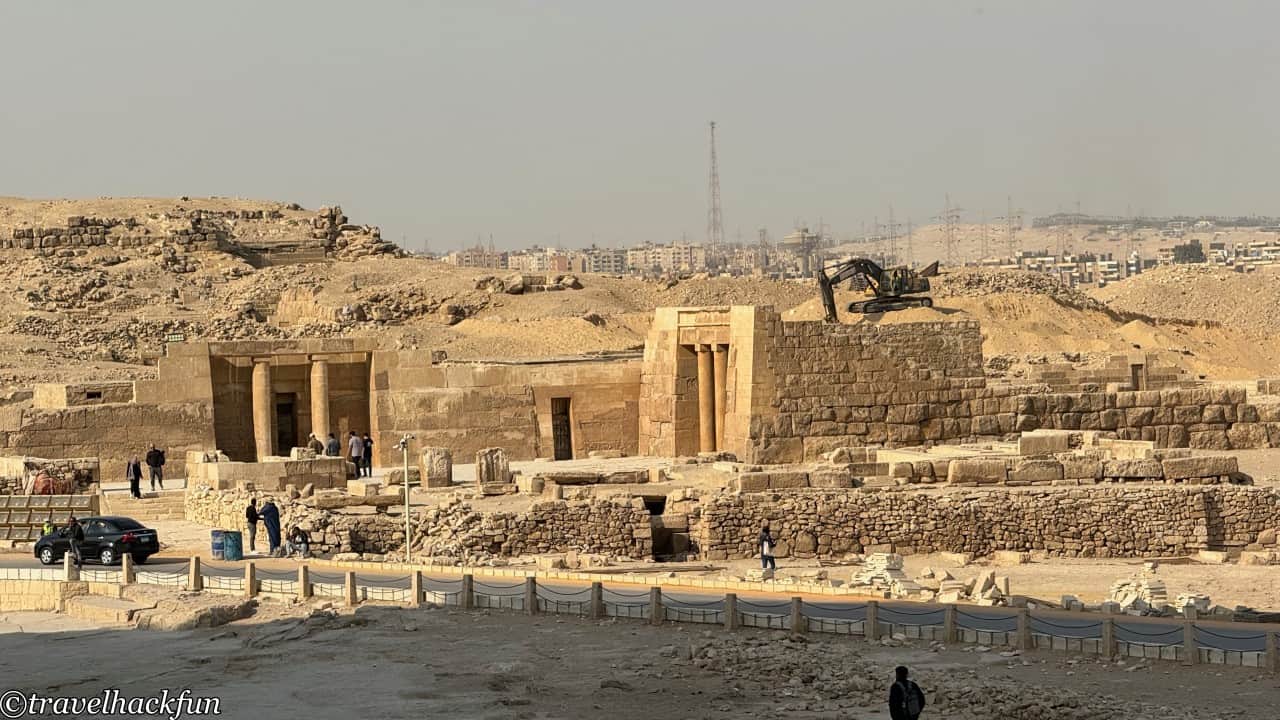
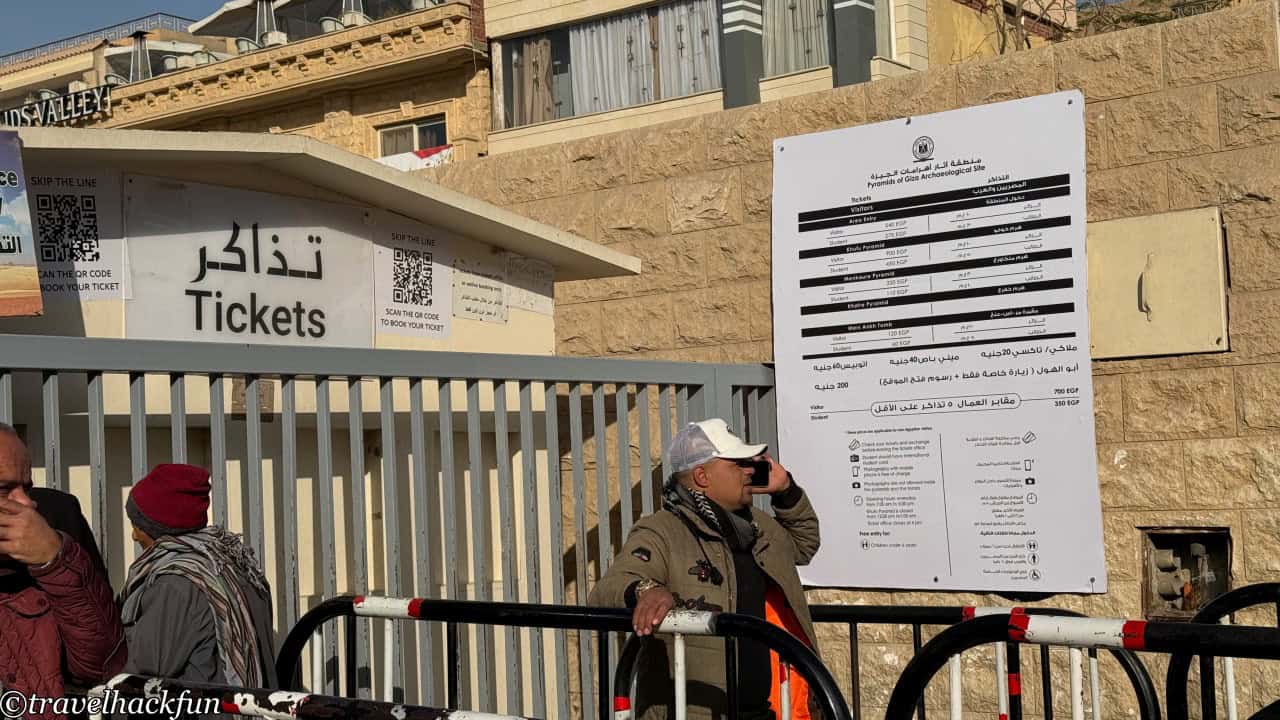
Giza Pyramid Complex | Transportation
Traveling from downtown Cairo to Giza takes about 40 to 90 minutes by car. For those traveling independently, it is recommended to hire a private car or take an Uber. Alternatively, you can look for half-day or full-day tours departing from Cairo.
Day tour to the Pyramid of Giza from Cairo
Cairo - Giza private transportation
In Egypt, the price difference between private car hire options can vary a lot. When taking Uber, due to its lower price, it's also common to encounter drivers who want to negotiate the fare. From my own experience, as long as you insist, you can eventually get an Uber without needing to haggle. However, overall, I believe the effort required to pursue the lowest reasonable price is more than ten times what it would be in other countries. Therefore, I would recommend tourists who dislike hassle, are averse to bargaining or being subjected to sales pitches, and those whose mood is easily affected, to directly opt for hiring a private car, local guides, or joining a group tour. After all, maintaining a good mood is the most important thing while traveling.
Walking around the Pyramid area is convenient, but there are also popular and less exhausting options such as riding a camel or taking a horse carriage. Generally speaking, horse carriages are cheaper than camels. When we arrived, we encountered horse carriage rides starting at 200. There are many enthusiastic salespeople for horse carriages and camels as soon as you enter the area, so deciding to take a ride on the spot will definitely not leave you without options. However, it's important to note that many tourists have reported that the vendors may suddenly increase the price halfway through the ride, so don't assume that an initial agreement is final, and avoid paying in advance. If you're not skilled at bargaining and are concerned about being scammed but really want to ride a camel, I suggest finding a guide or booking a trip in advance.
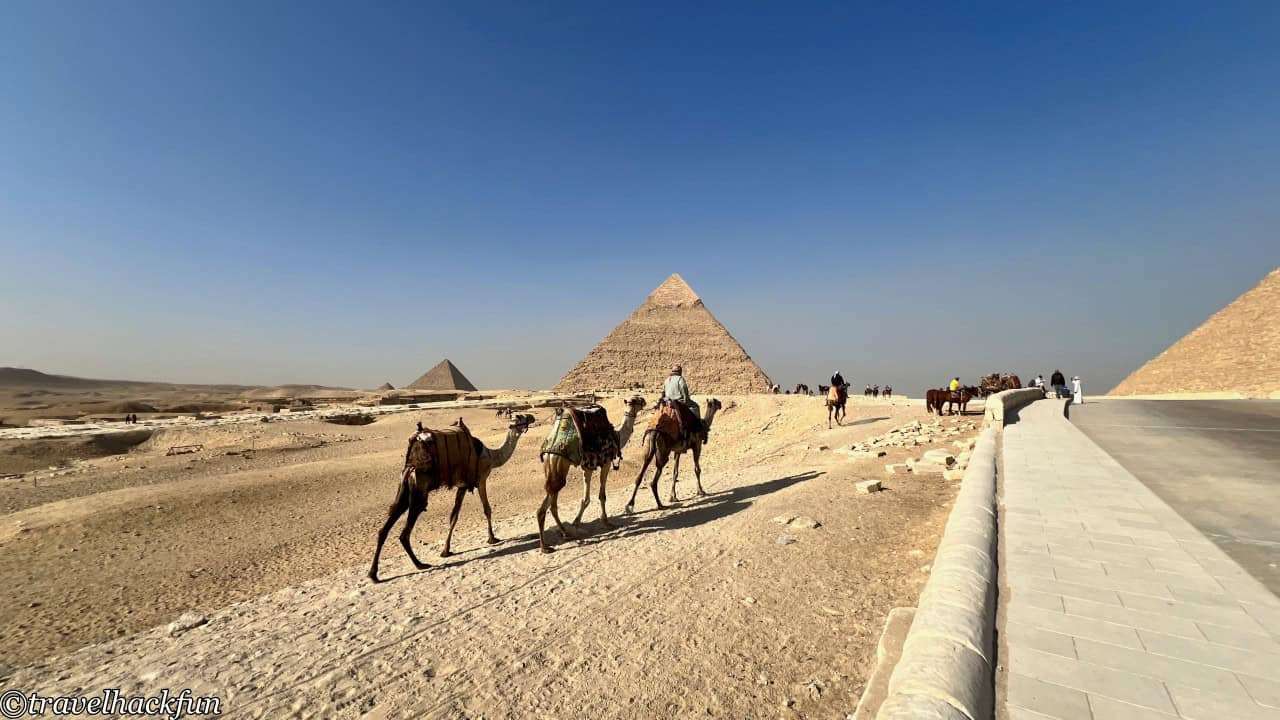
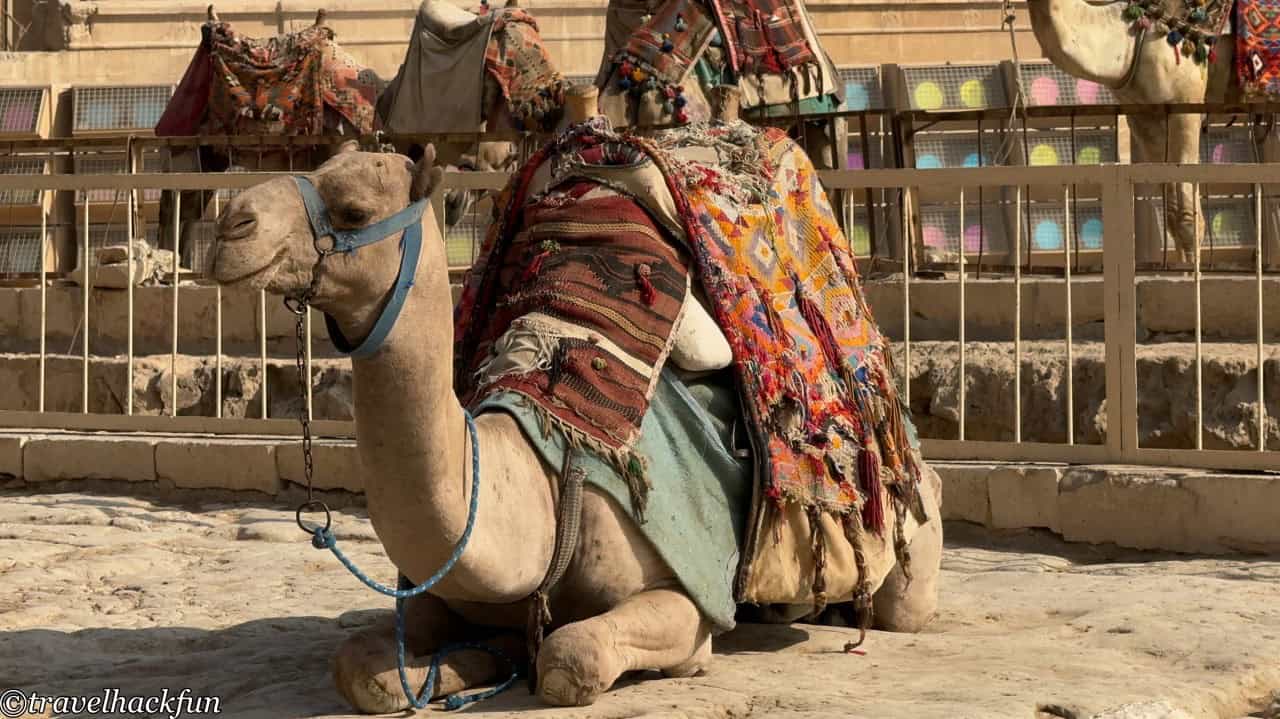
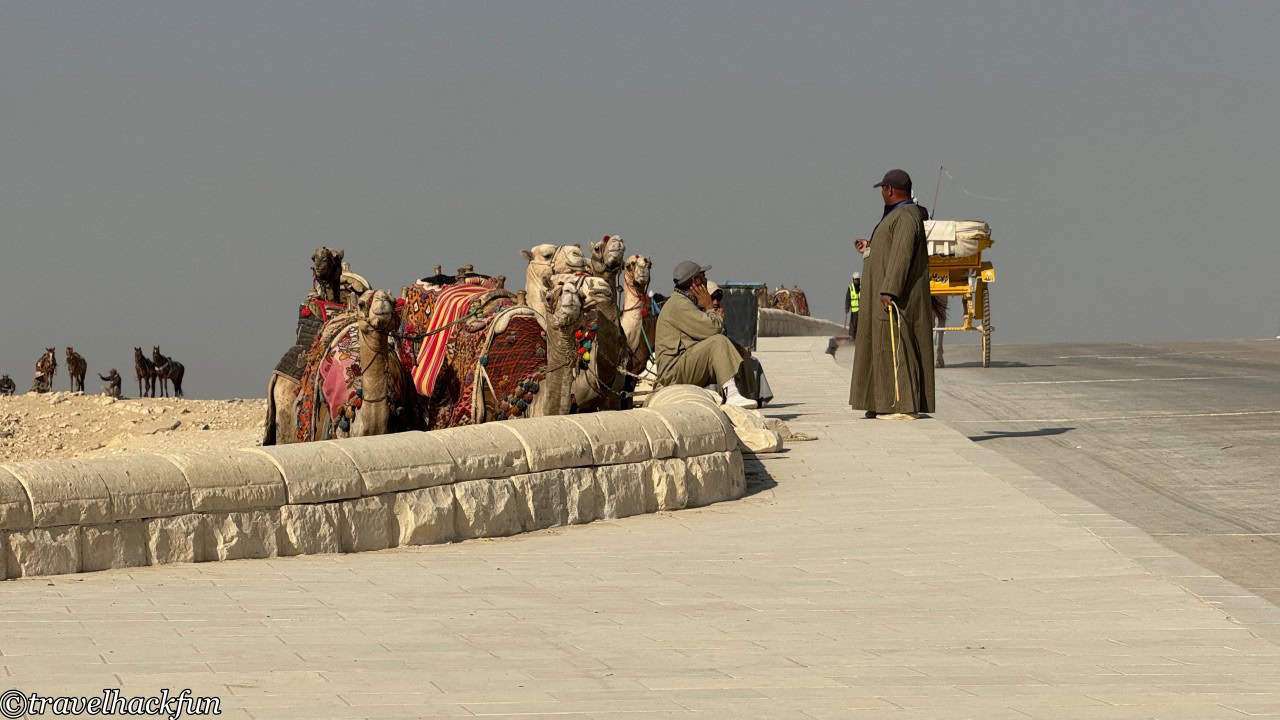
Giza Pyramid Complex | Itinerary Planning
Although Giza has other attractions that can be included in a day trip, and there are quite a few half-day tours offered by travel agencies, I recommend dedicating a whole day to the Giza pyramid complex. It's even better if you can stay in Giza for at least one night. The pyramid complex is open every day from 8 AM to 4:30 PM. We entered the site early at 8 in the morning, including having lunch there, and ended up losing track of time until we were reminded by the guards to leave at 4:30 PM.
If you only have half a day, it is recommended to arrive as early as possible. The light in the morning is more suitable for taking photos, and the air quality is also better. The pyramids look even more magnificent under the early rising sun. Around after nine, and the scenery becomes more hazy.
Giza Pyramid Complex | Lodging Options
If you are planning to stay in Giza, there are plenty of accommodation options around the Pyramids. Since you are staying in Giza, if affordable, strongly recommend choosing a hotel with a view of the Pyramids. Witnessing the pyramids at different times, such as sunrise and sunset, along with the night view, is an experience not to be missed and definitely worth spending a night for.
If you're a traveler yearning for a more upscale hotel experience, the Marriott Mena House located north of the Pyramids is a top choice for many. Situated beside the main entrance to the Giza pyramids, this luxury hotel boasts lavish interior decor and design. Many of its rooms and public areas offer views facing the pyramids, making it a favorite among many tourists.
Recommended Accommodation: Marriott Mena House
If you are looking for more affordable accommodation, please look in the direction of the east side entrance. Most of the hotels on this side have nice views and are relatively cheaper. Another advantage is that group tourists usually enter from the north, so the side entrance tends to be less crowded, making the entry into the area generally not too congested. On this occasion, we chose to stay near the side entrance at the Pyramid View Inn.
Looking for a stay in Giza?
Accommodation Review | Pyramid View Inn
Pyramid View Inn is the ideal choice for those hoping to enjoy direct views of the Pyramids from their room. Undoubtedly, the most attractive feature of this inn is its prime location. The restaurant terrace on the rooftop offers a broad vista, facing the three great Pyramids and the Sphinx. Guests can take in the spectacular view of the Pyramids at any time, whether enjoying morning coffee or relaxing in the evening, all from an excellent vantage point for viewing the Pyramids. If luck is on your side and you visit on a day with a light show, you can also clearly enjoy the spectacle from the terrace.
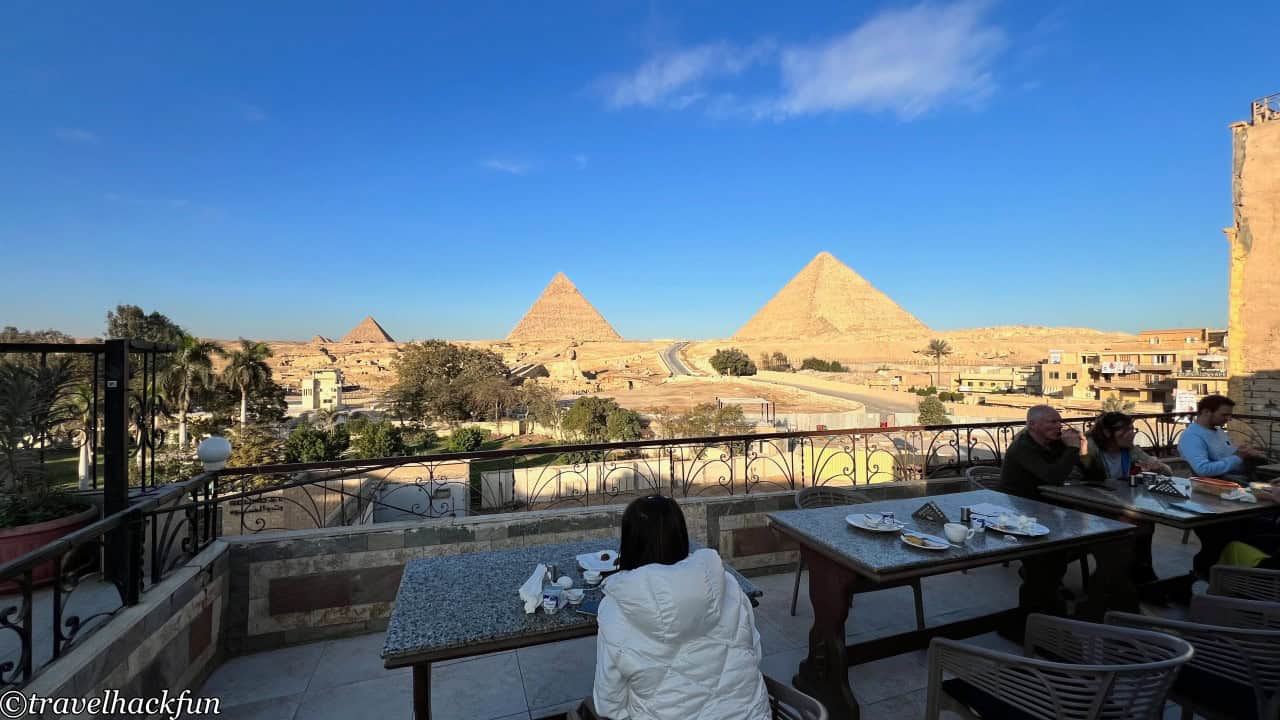
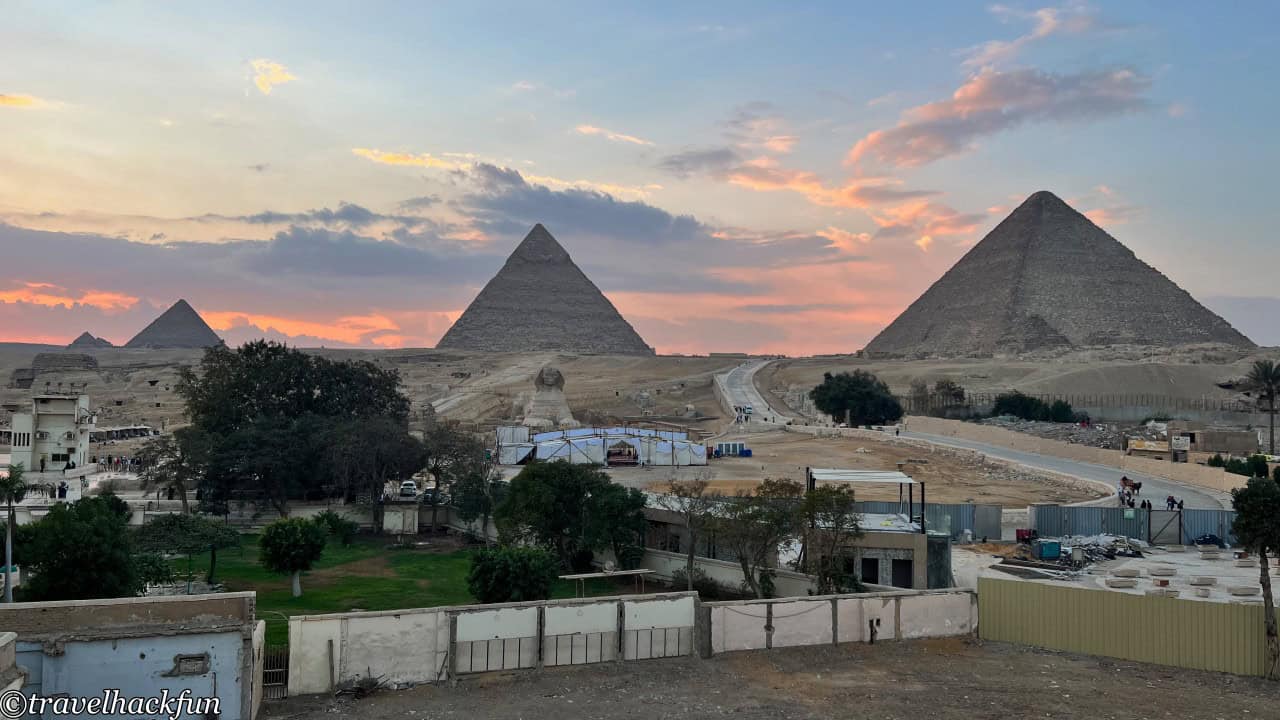


Pyramid View Inn offers budget-friendly prices, with rooms that are compact and equipped with basic modern amenities. This includes basic air conditioning, free Wi-Fi, and private bathrooms. Guests staying for multiple nights also receive complimentary airport shuttle service to and from Cairo Airport. We chose a room with a scenic balcony, from which we could admire the spectacular view of the pyramids. At the break of dawn, we had the privilege of witnessing the first rays of sunlight illuminating the pyramids, a serene moment distinct from the daytime hustle and bustle at the site. In such tranquil moments, it almost felt as if we could catch a glimpse of the ancient kings' spirits softly drifting in the morning mist.
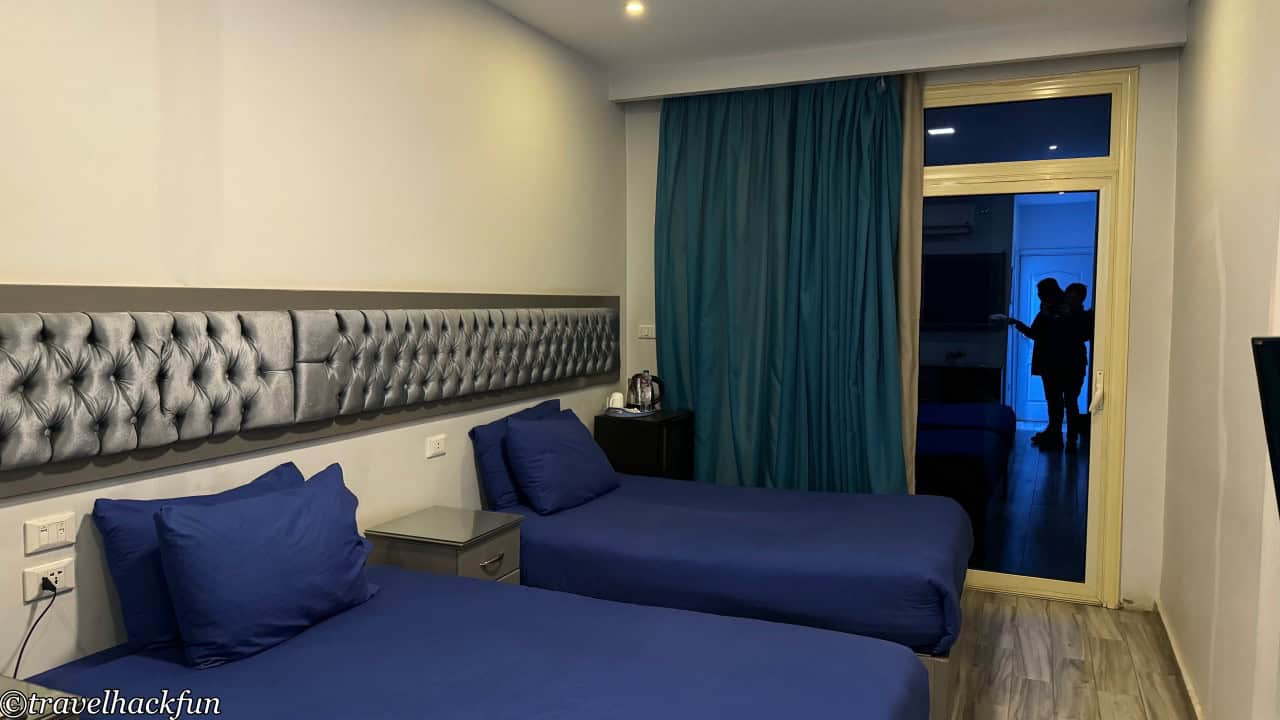
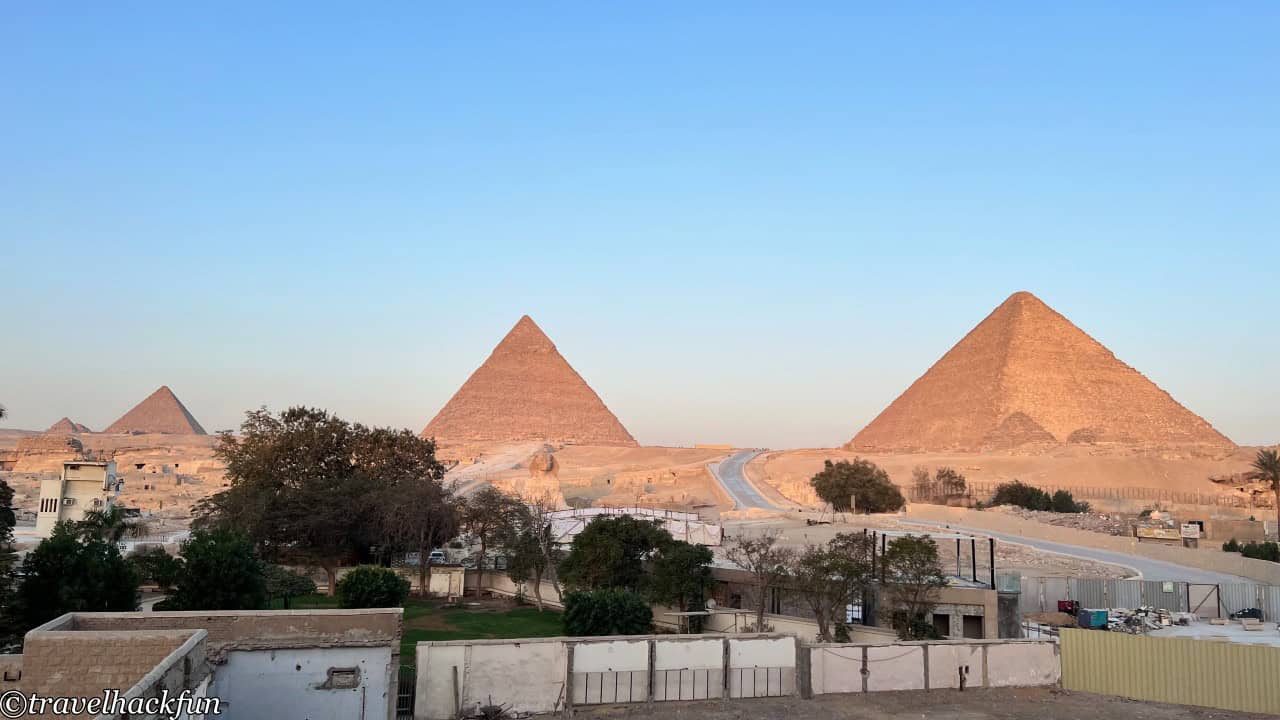
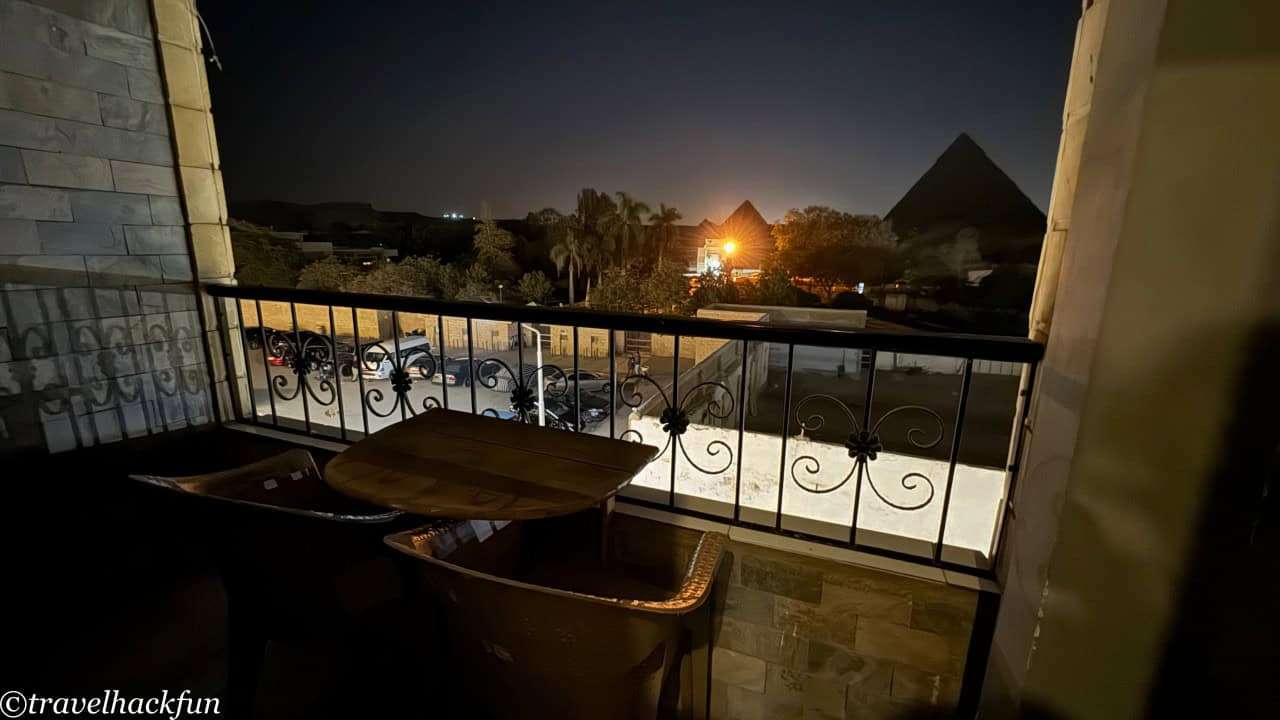
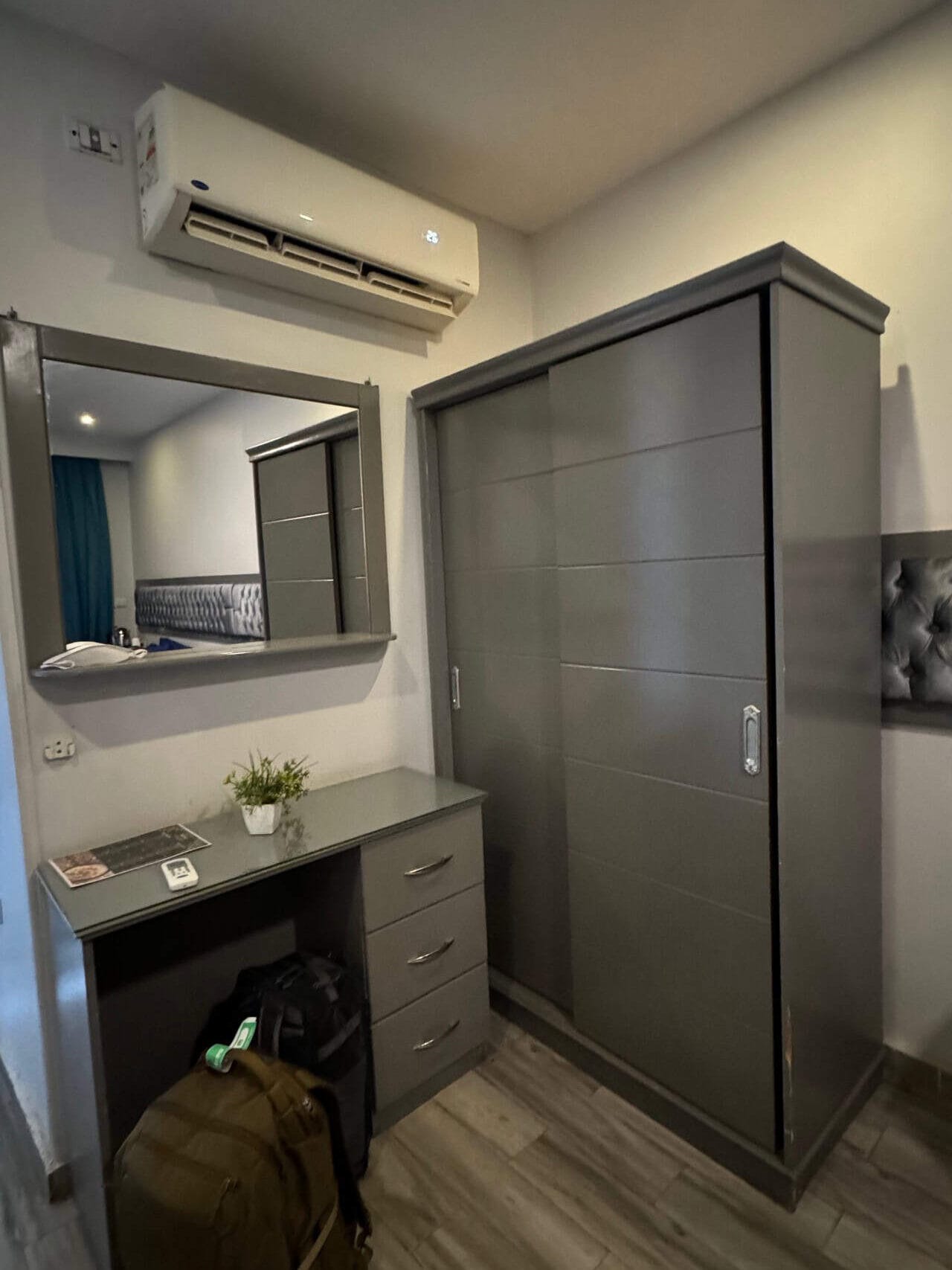
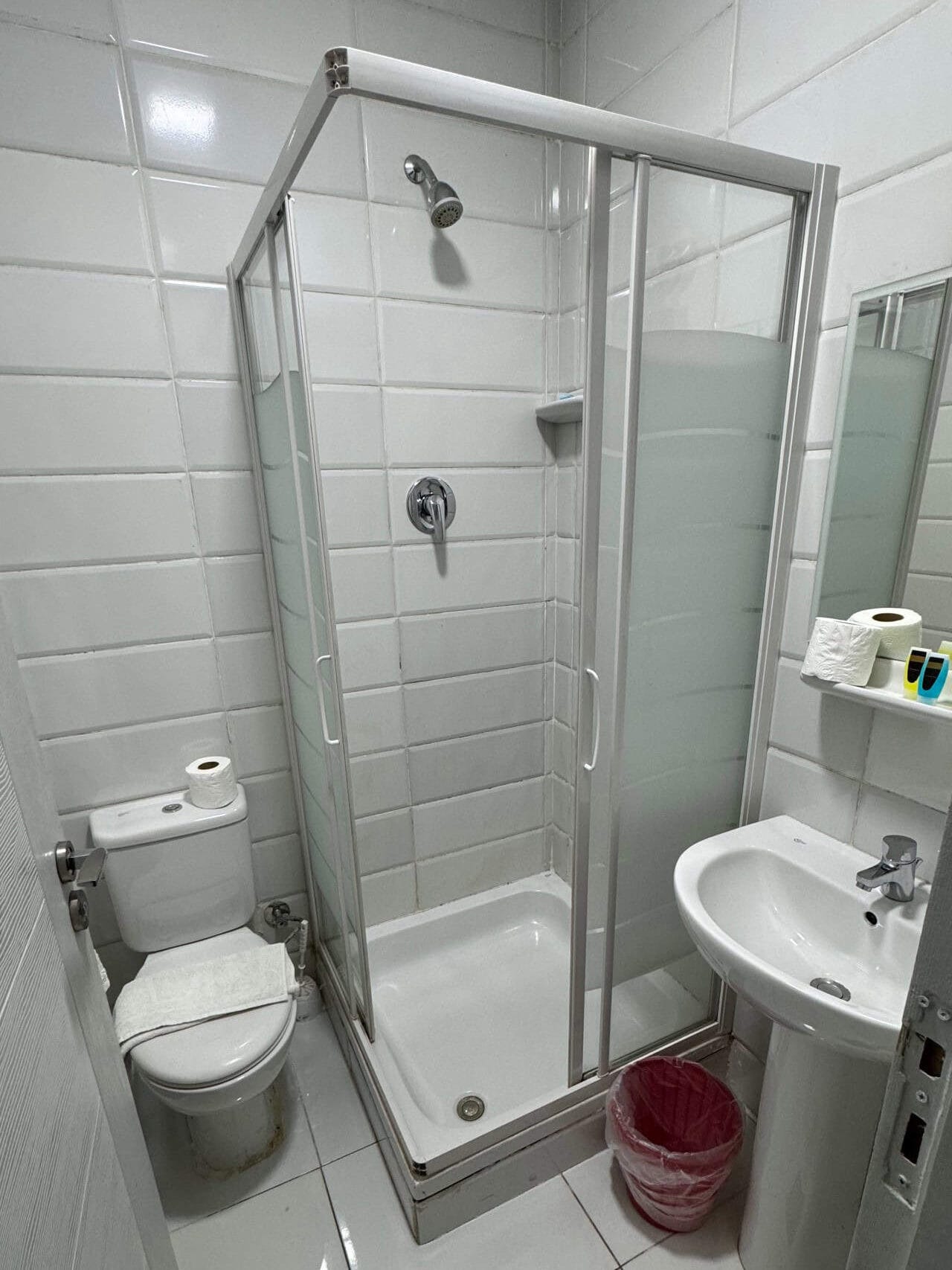

The hotel comes with a complimentary breakfast, eliminating the hassle of going out to find a restaurant. The quality of breakfast is average, offering a self-service style similar to the level of Best Western. Considering such a reasonable price, it is considered a good deal.
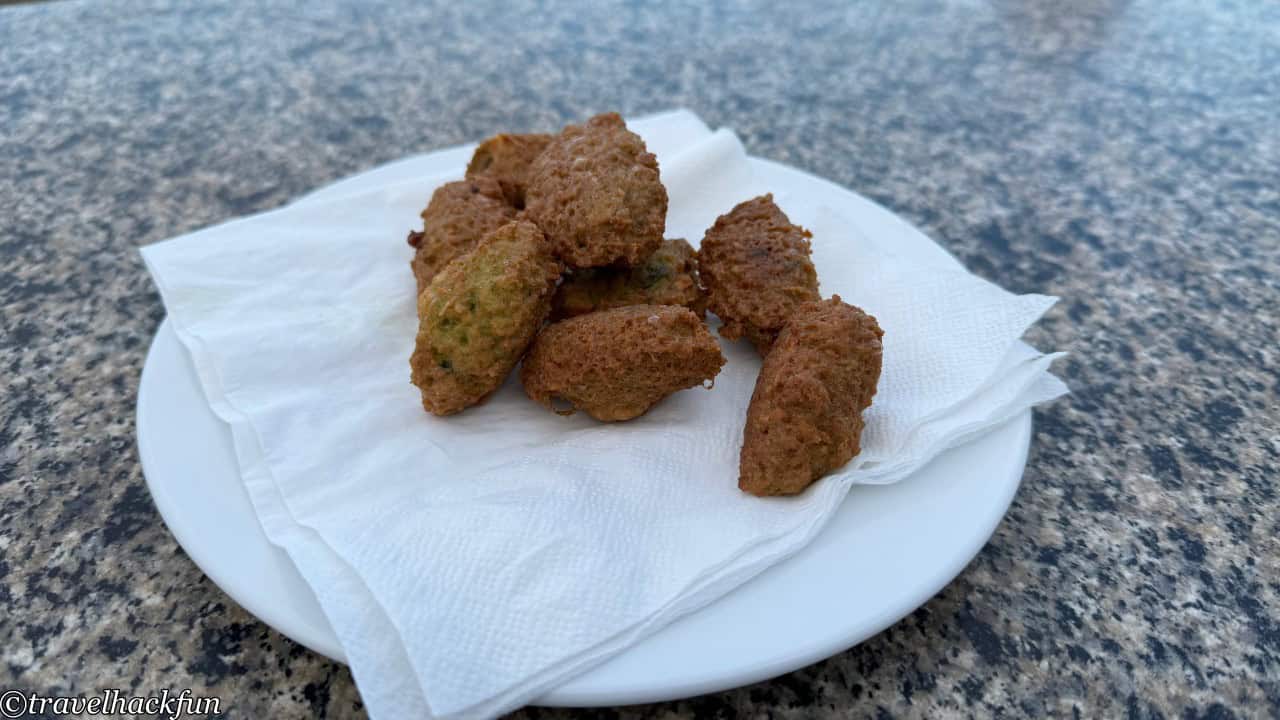
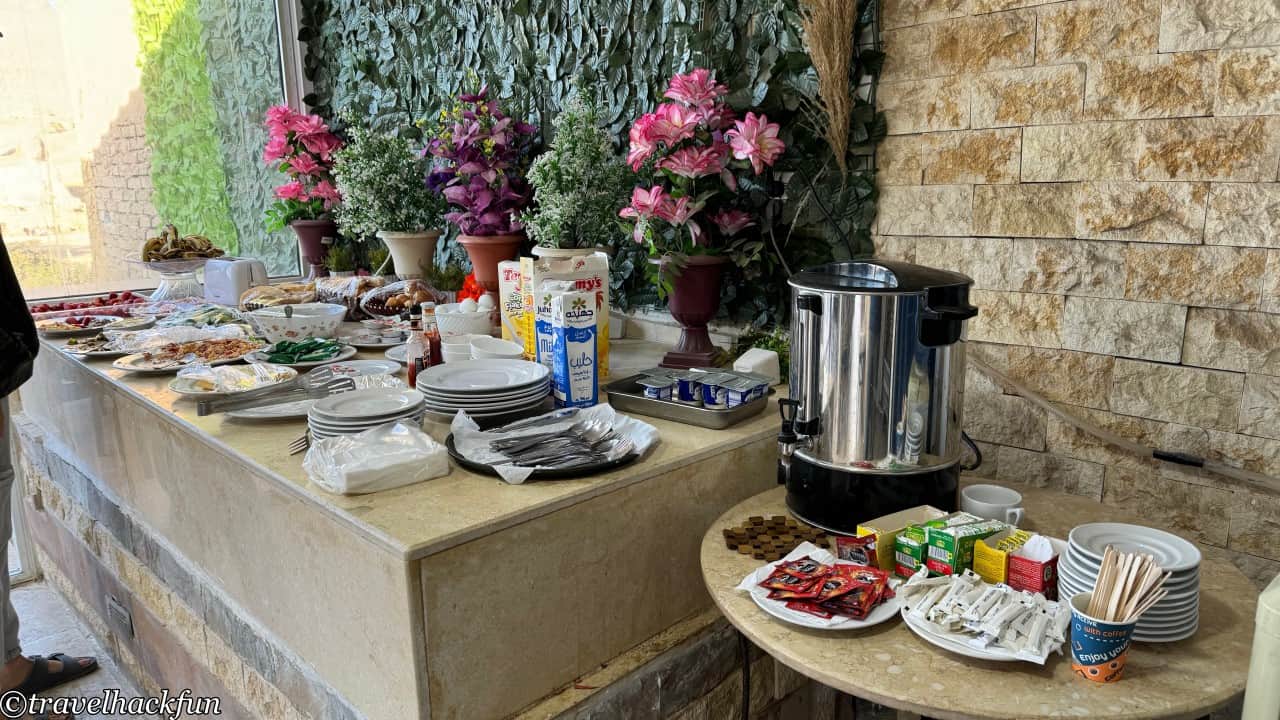
Recommended Accommodation: Pyramids View Inn
Giza Pyramid Complex | Attractions and highlights
The Giza Pyramids and the Great Sphinx have been globally renowned dream destinations since the Roman times. The main attractions of the Giza plateau pyramid complex are, of course, the three large pyramids and the Sphinx, which range from largest to smallest: the Pyramid of Khufu, the Pyramid of Khafre, and the Pyramid of Menkaure. These pyramids served as the eternal resting places for the kings of the Fourth Dynasty, witnessing the long years from 2613 BC to 2494 BC.
However, the three great pyramids are just the core of the numerous attractions on the Giza Plateau. In addition to these three large pyramids, there are many smaller pyramids of queens and princesses hidden here, symbolic satellite pyramids, as well as noble tombs and grand halls. These all highlight the power of the dynasty and are preparations made by the pharaohs for a rich life in the afterlife. If independent travelers have no time constraints, these subsidiary structures are all worth a closer look.


Background | The Fourth Dynasty of Egypt
The history of ancient Egypt spans from 3000 BC to the 1st century BC until it was fully annexed by the Roman Empire in the 7th century, and it was divided into several periods such as the Old Kingdom, Middle Kingdom, New Kingdom, etc. The Old Kingdom period (circa 2686 BC to 2181 BC) marks the beginning of the age of pyramids, with the Fourth Dynasty, during which the Giza pyramid complex was established, representing the pinnacle of the Old Kingdom period. This era, the Fourth Dynasty, showcased immense technical achievements and deep cultural depth through its architecture, art, and religious practices.
This era is most famous in ancient Egyptian history for its pyramid-building techniques and the development of religion. At that time, pharaohs were considered direct representatives of the gods. Their firm and sacred rule endowed the dynasty with supreme authority and influence. Pyramids were not only the tombs of pharaohs but also symbols of their power and devotion to the deities.
Must See | Pyramid of Khufu (The Great Pyramid of Giza)
The Great Pyramid of Khufu is the tomb of the Fourth Dynasty pharaoh Khufu. Among the pyramids at Giza, it is the oldest and largest, standing at 138.8 meters tall and 230.5 meters wide.
The construction of the Great Pyramid of Giza took approximately 10-20 years, and the precision of its construction techniques from 5,000 years ago still astonishes modern scientists and archaeologists today. It occupies the first place among the Seven Wonders of the Ancient World and is also one of the only wonders that has been well-preserved to this day. It is said that the Seven Wonders of the Ancient World were ranked by the Romans around the first century AD, which means that the history of this pyramid as a tourist attraction is also very long. Even by the first century AD, it was already over two and a half thousand years old.
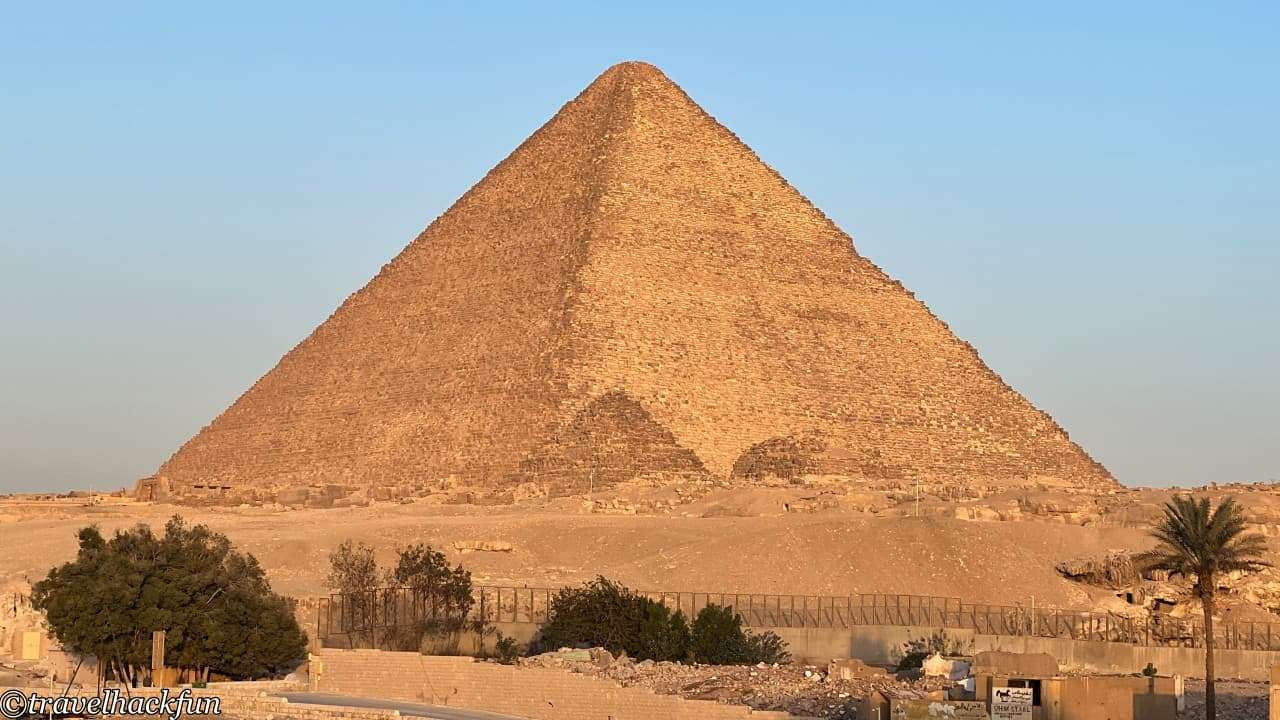
The Great Pyramid of Giza was primarily built with local limestone, and its exterior was covered with a layer of high-quality limestone. These stones were transported from the south via the Nile River to Giza. It is astonishing to think about how these rocks were transported 5,000 years ago, but most of these outer stones have since disappeared. The original outer layer was likely smooth and reflective of sunlight. Apart from thousands of years of erosion, weathering, and natural disasters, it is said that during the medieval period, these high-quality stone materials were dismantled for the construction of the city of Cairo. Today, we only see the inner layer of stones arranged in a step-like formation, which are tightly compacted together. It is impressive how these were stacked to form the shape of a pyramid.
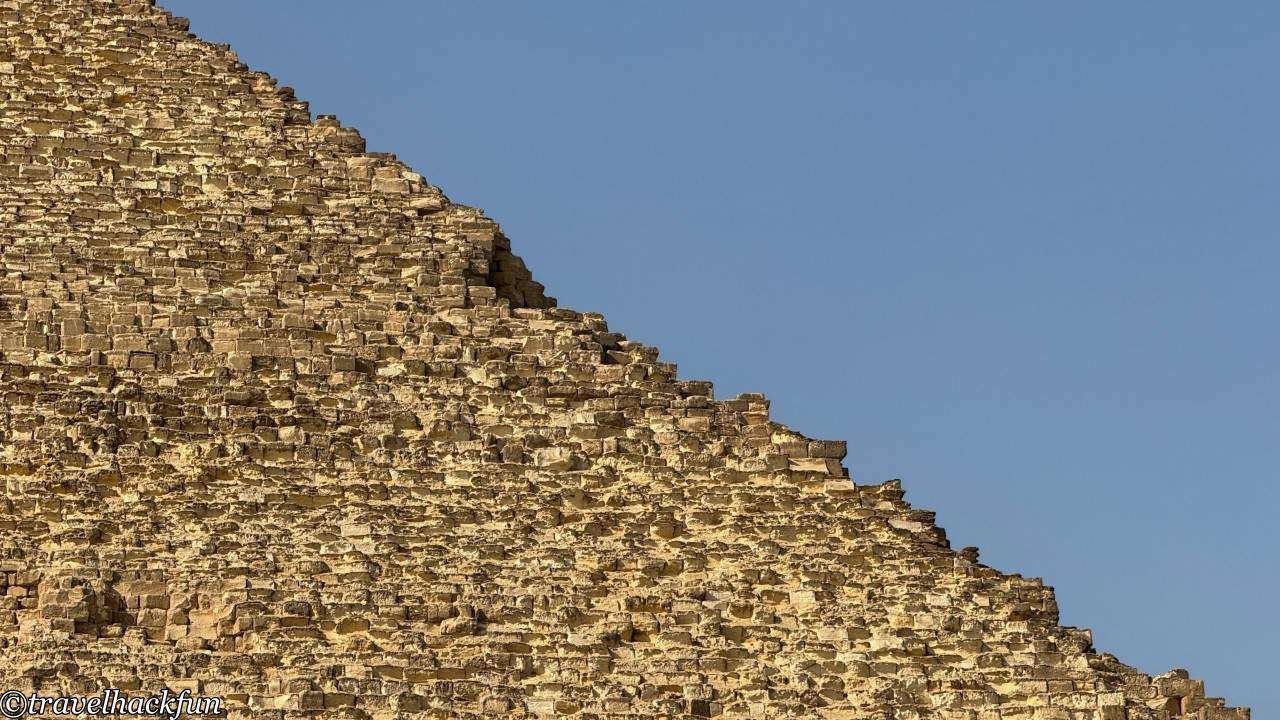
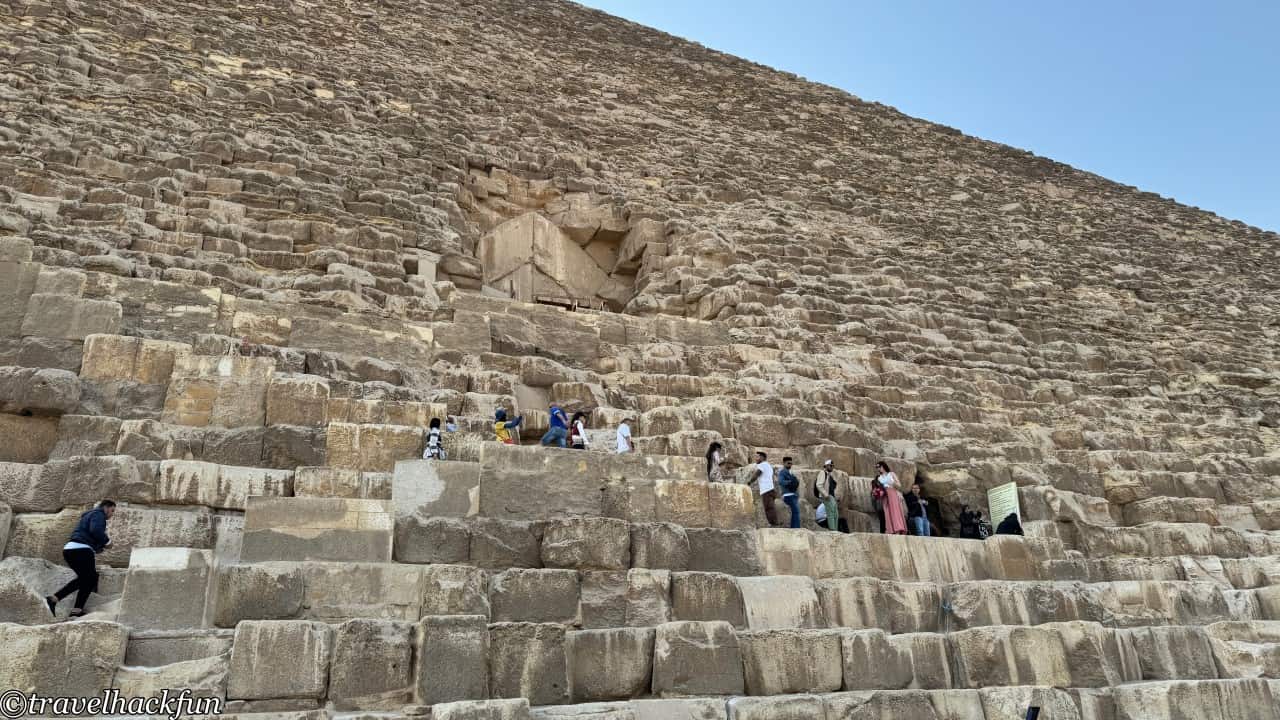



The entrance to the pyramid is not on the ground level; instead, you have to climb up, where there is also a tomb-robbing entrance used by tomb robbers in the past, which has now been sealed. If it weren't for the large number of tourists here, one might even find the entrance a bit hard to locate. The tickets for entering the Great Pyramid of Giza are separate from the admission tickets for the scenic area, and they are not cheap, so make sure to purchase your ticket before lining up to enter.


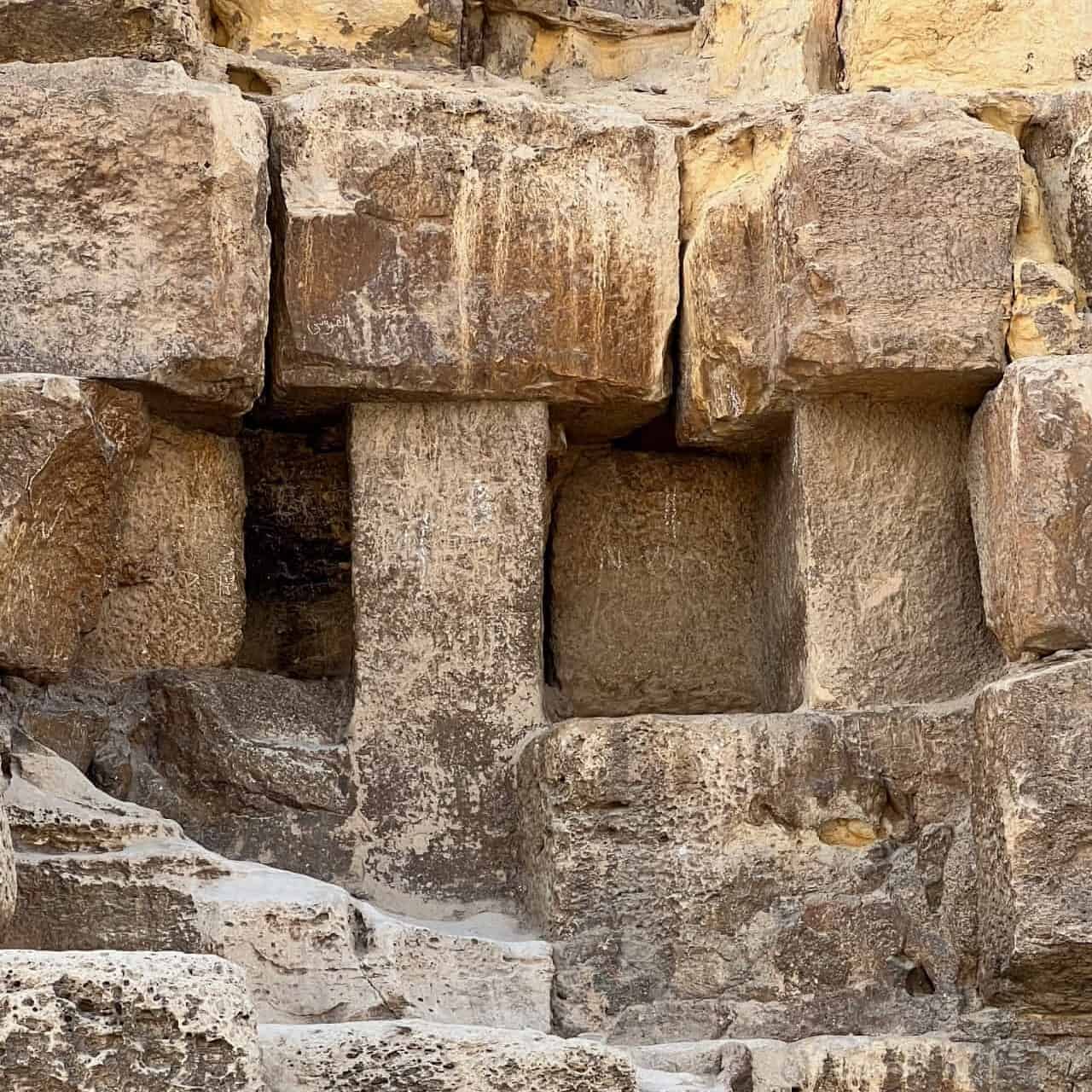
The Great Pyramid of Giza is large, hence the entrance path is also long. It is quite hot inside the pyramid, and in some places, you have to bend over to pass through. Together with the crowds, and since some places have a single-file path for entering and exiting, visitors must give way to each other, which might require standing bent over for a while. Therefore, it's best to consider your physical and leg strength in advance. Having visited, I felt that the Great Pyramid of Giza, compared to other pyramids I visited later, has a lot of space, even stairs, making it much easier to climb than I had imagined.

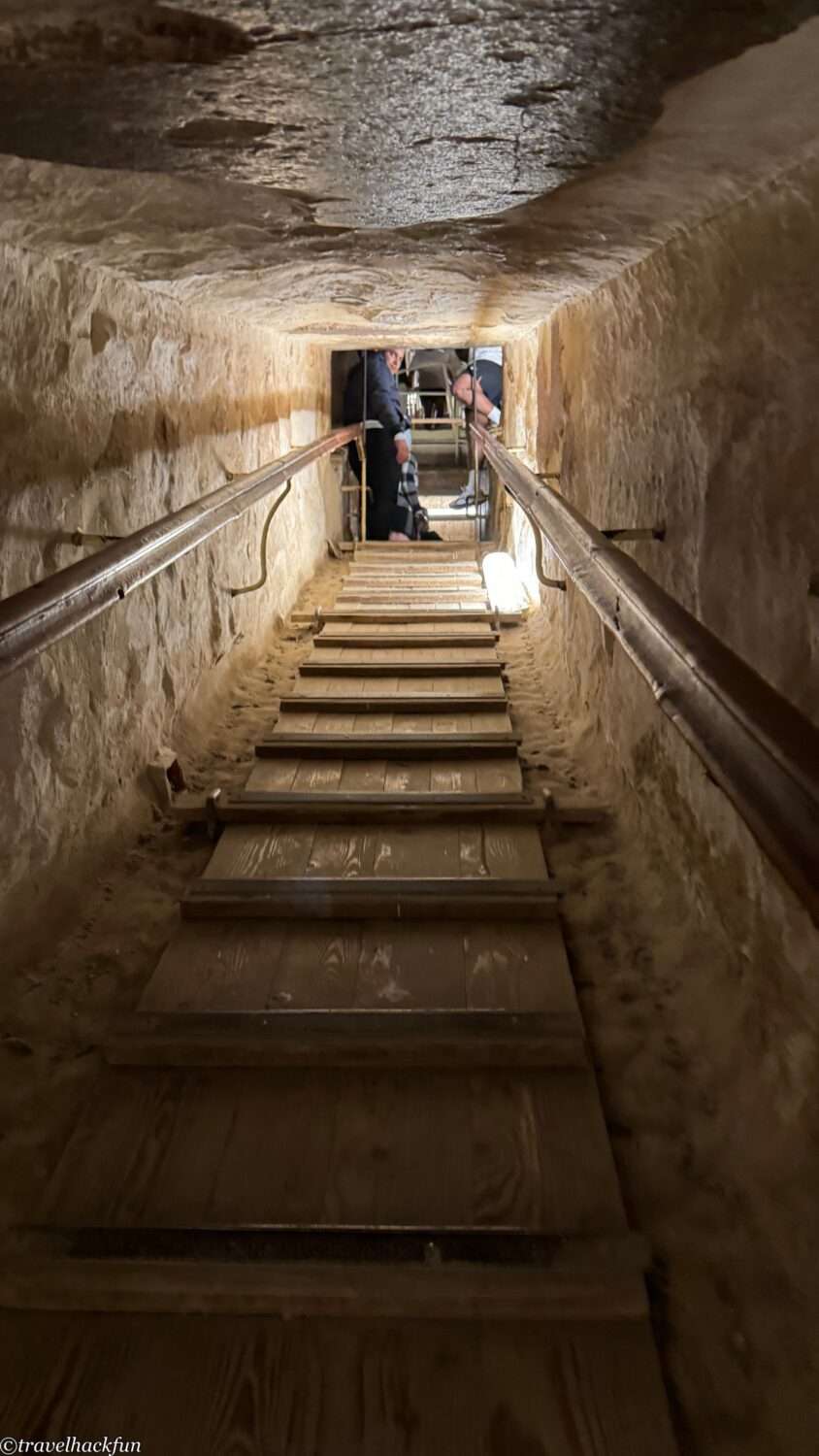

The interior design of the pyramid is exquisite, containing three main chambers. One of these chambers is hidden beneath the bedrock, while the other two are ingeniously set within the stone structure. During our visit, only the resting place of Khufu was open. Before entering this room, one must pass through a magnificent cantilevered ascending passage, which is also a pinnacle of ancient engineering.
The entrance to the resting place of Khufu is narrow, but once inside, it is actually spacious and high-ceilinged, with an empty sarcophagus placed inside. Small holes can be seen on the walls, and while their purpose is still being studied, it is generally believed that, as the holes in the sarcophagus chambers of pyramids usually point to specific constellations, they hold significant importance in ancient Egyptian religion, possibly symbolizing that the pharaoh's soul could ascend through them to the sky to join the gods.
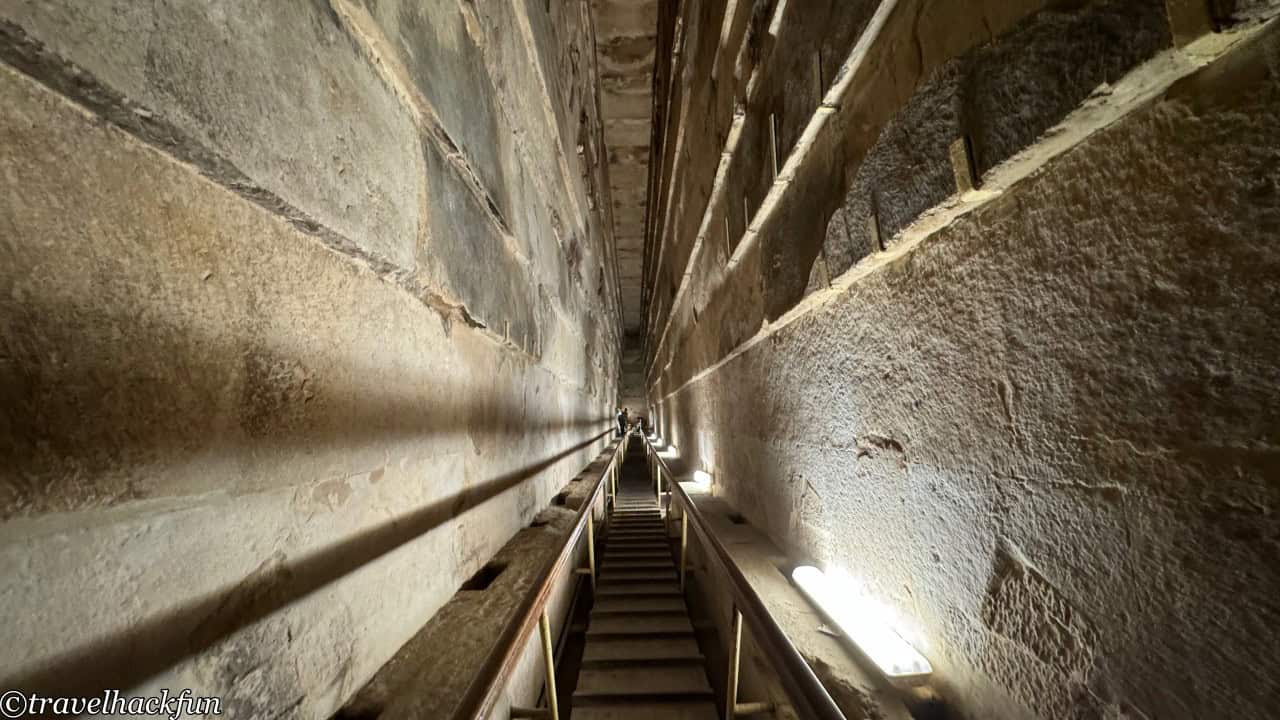
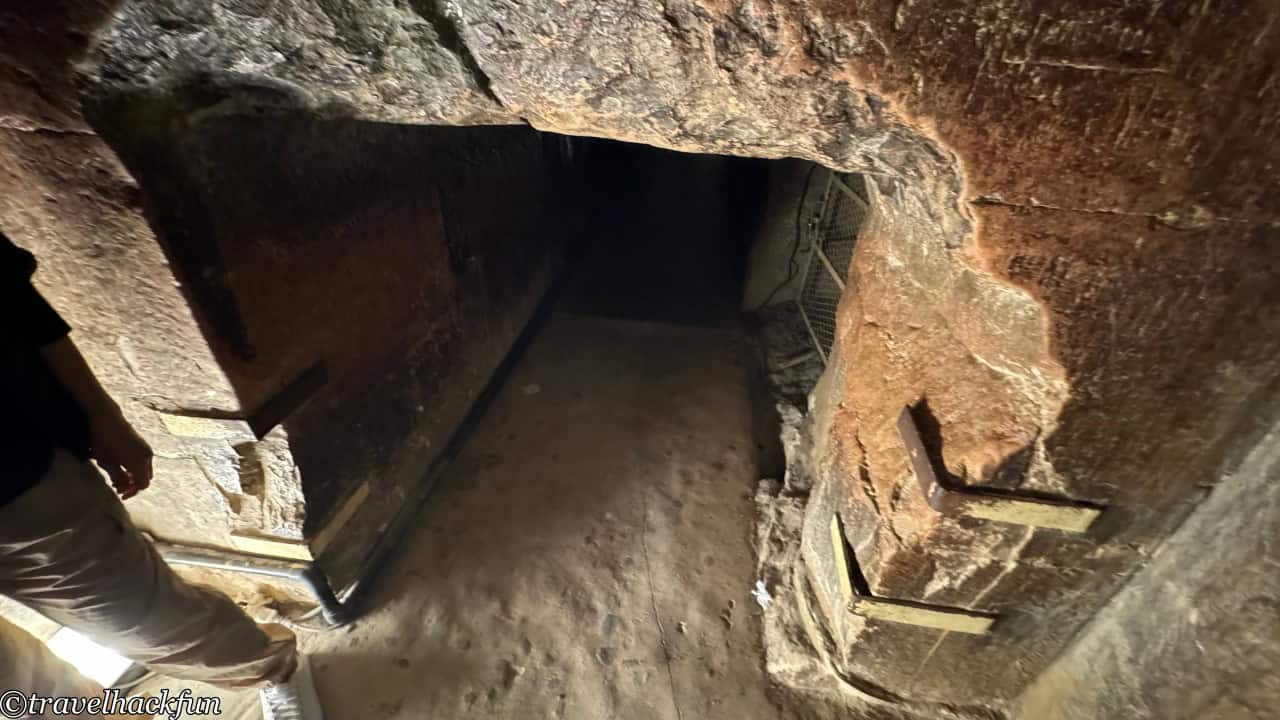
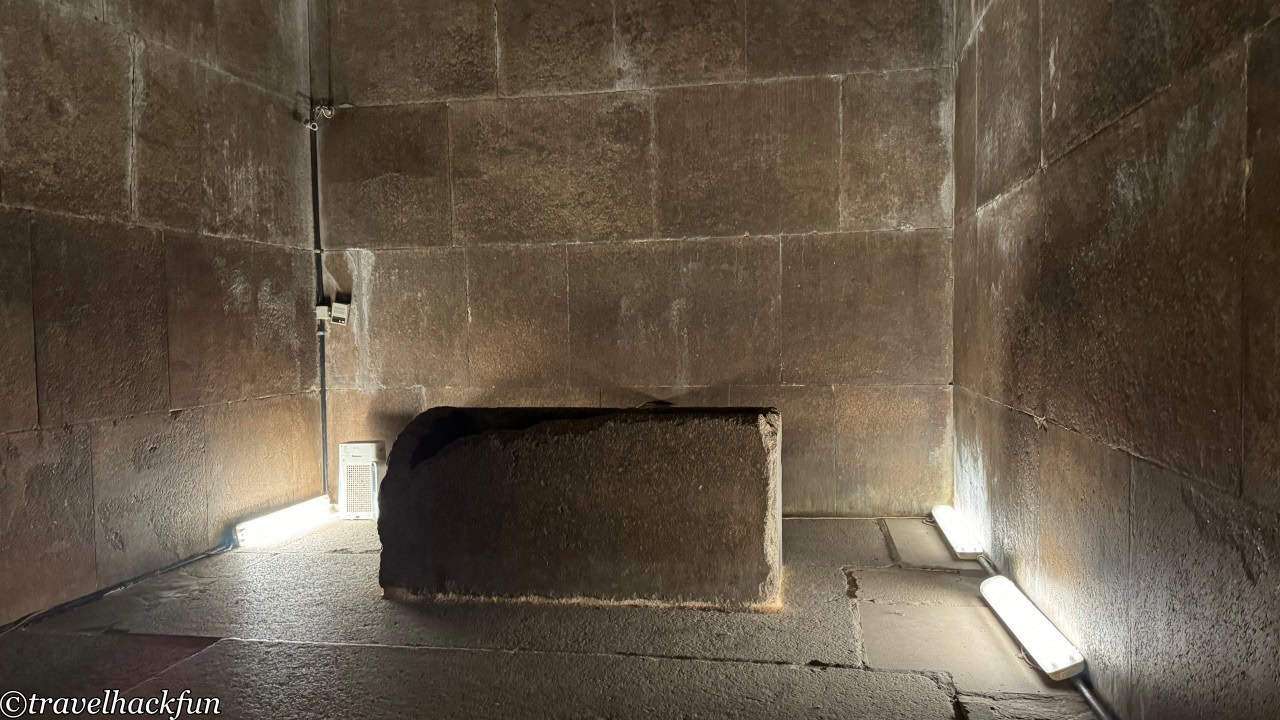
Pyramids in ancient Egypt were always accompanied by mortuary temples located adjacent to them, facing the pyramids for the purpose of carrying out worship activities for the deceased pharaohs. The temple of the Great Pyramid of Khufu currently only has its base remaining, which is the black platform we see next to the pyramid.
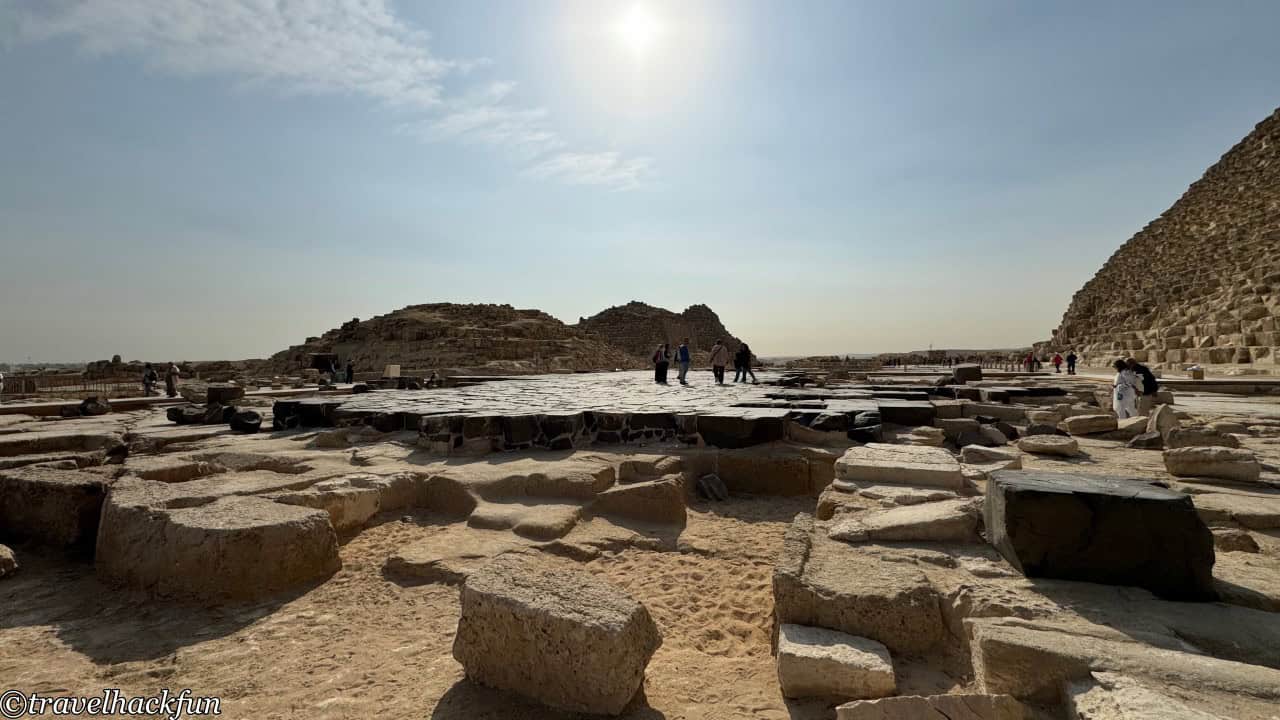
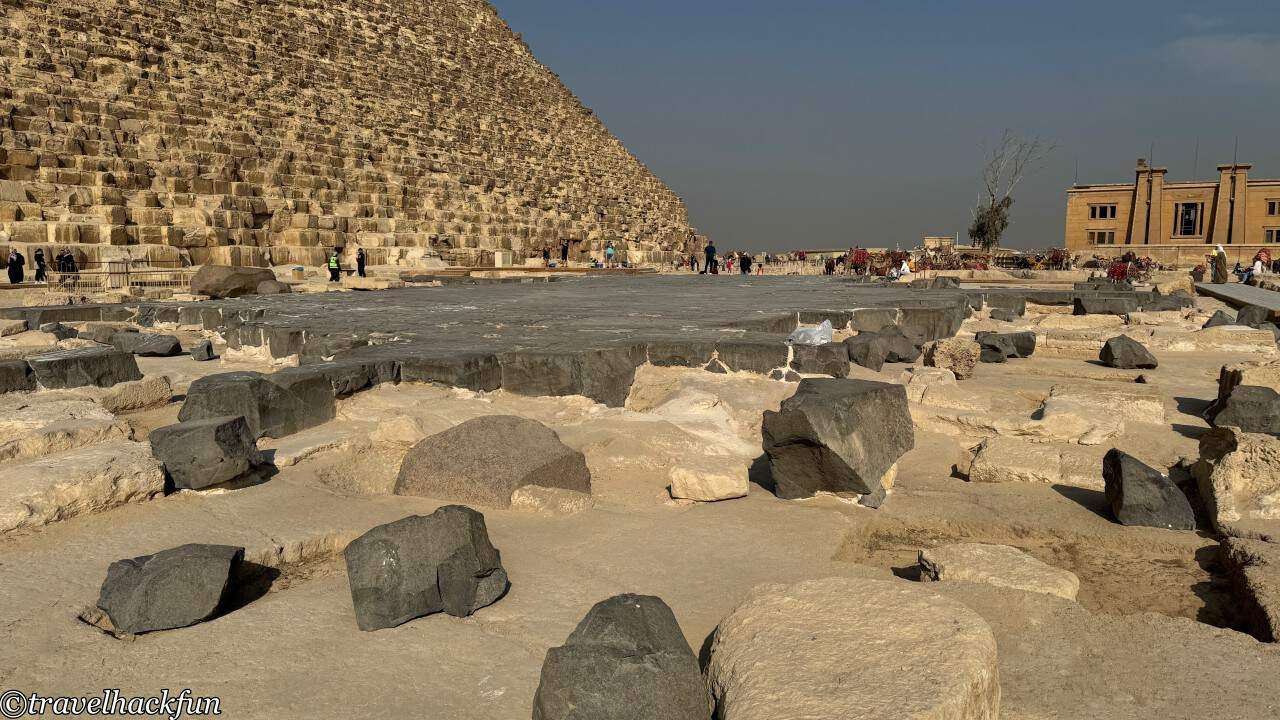
Satellite Pyramids | Queen's Pyramid
Walking along the path next to the base, one can reach the three smaller pyramids on the eastern side of the main pyramid and the East Cemetery beyond them. The three smaller pyramids in front of the Great Pyramid of Khufu are referred to as the Queens' Pyramids or satellite pyramids. They are located on the east side of the Great Pyramid of Khufu, and they house the tombs of female members of Khufu's family, with two being queens and one a princess.
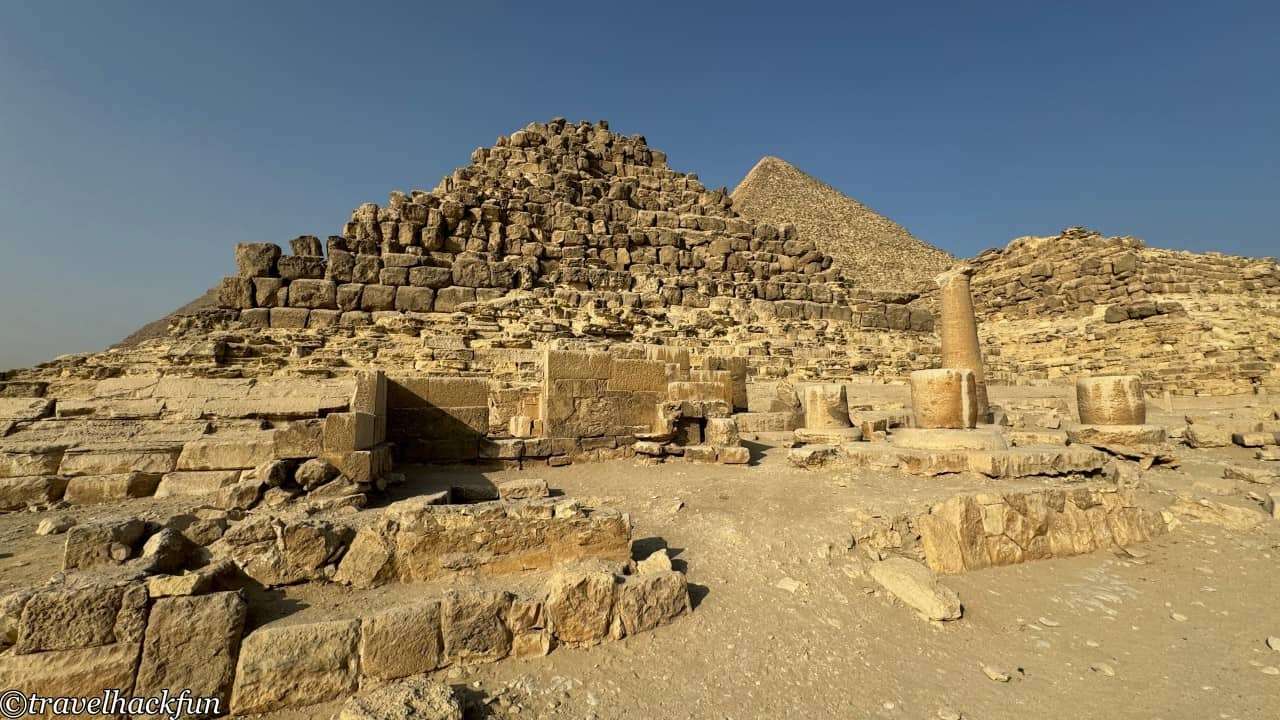

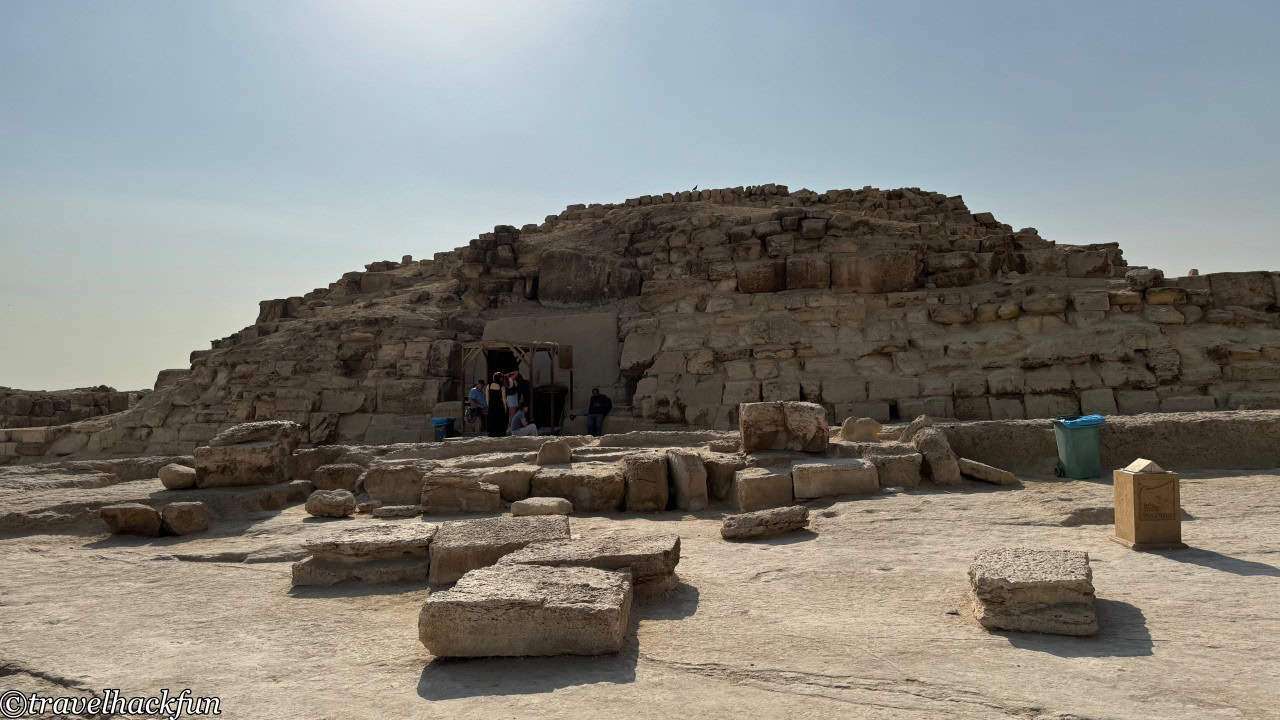
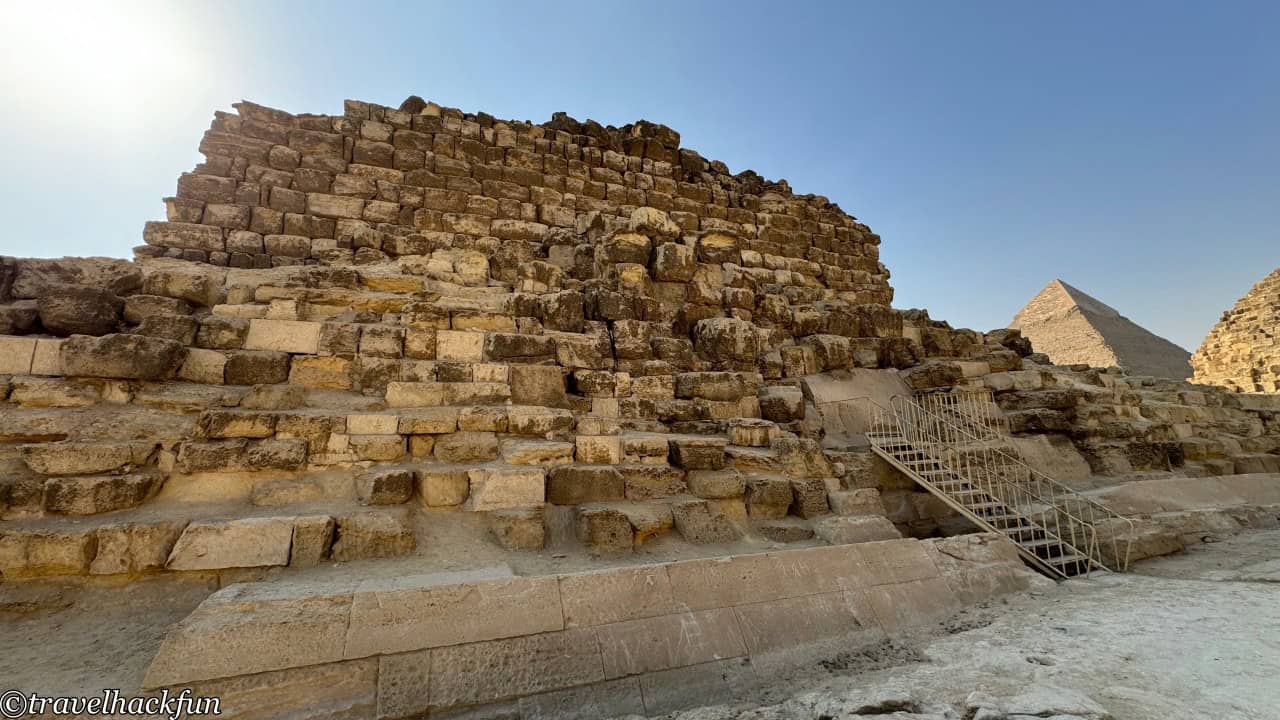
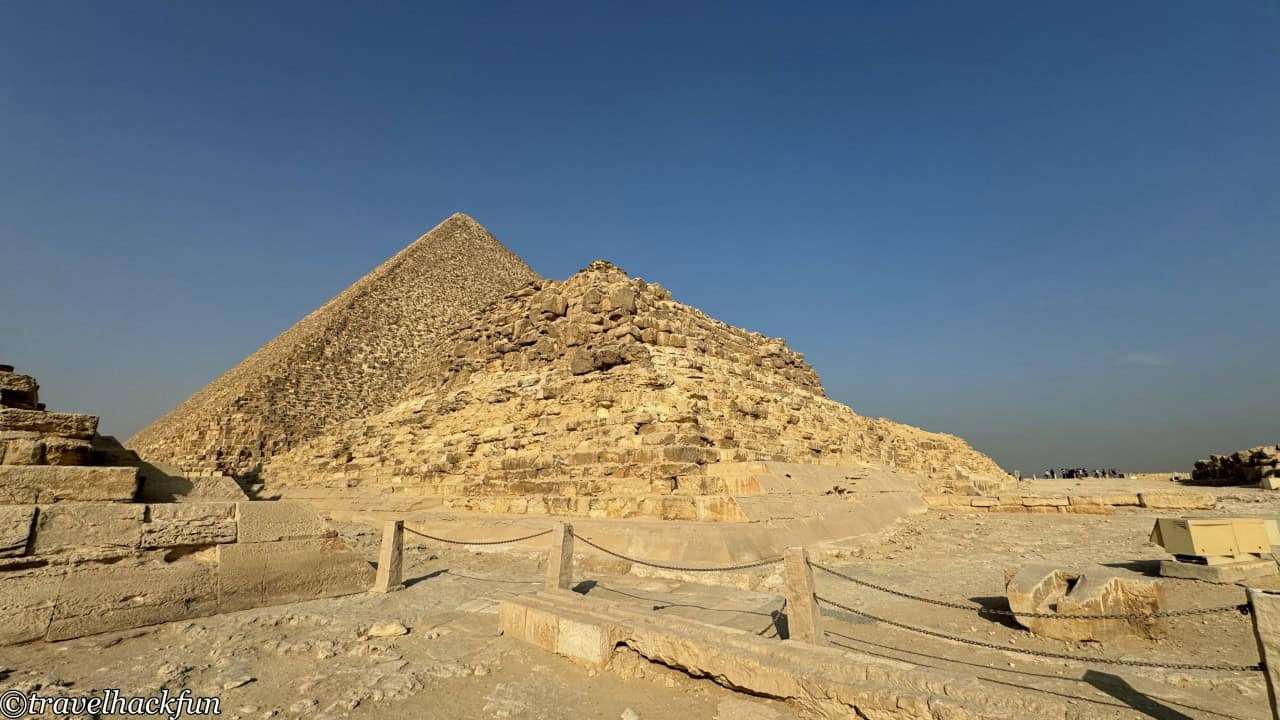
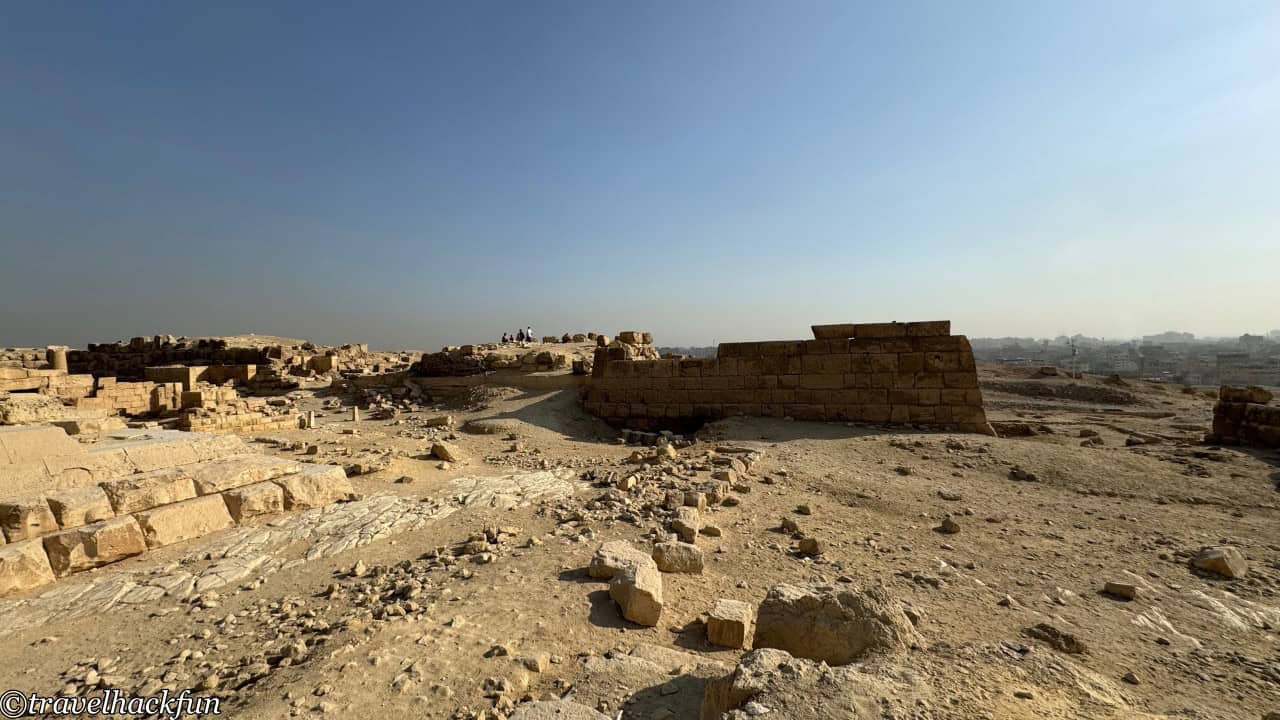
Among the pyramids, we can see a large boat-shaped pit on the ground. It originally contained an ancient solar boat, which was believed to be used to transport royal mummies and burial goods. The body of the boat has now been moved to a museum for preservation.
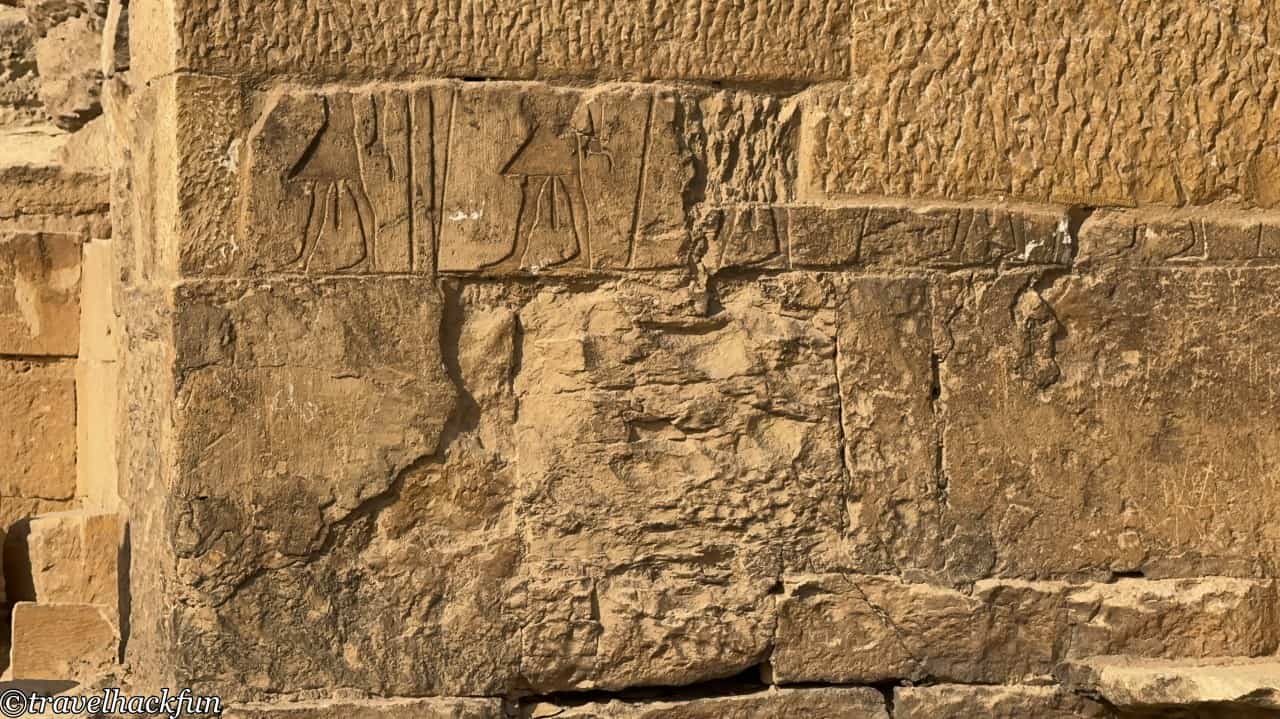
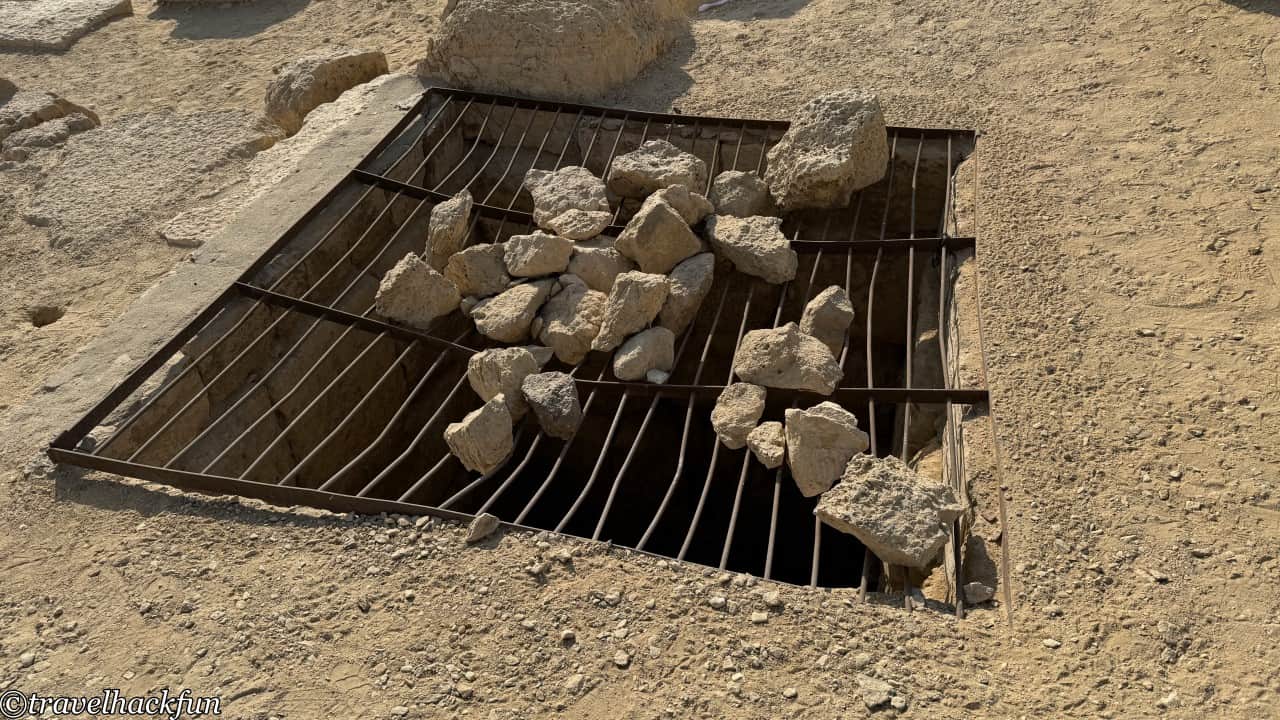
Between the pyramids, we can see large boat-shaped pits in the ground. It originally housed the ancient sunships that were used for burials and are thought to have been used to carry royal mummies and burial goods. The hulls of the ships have now been moved to a museum for preservation.
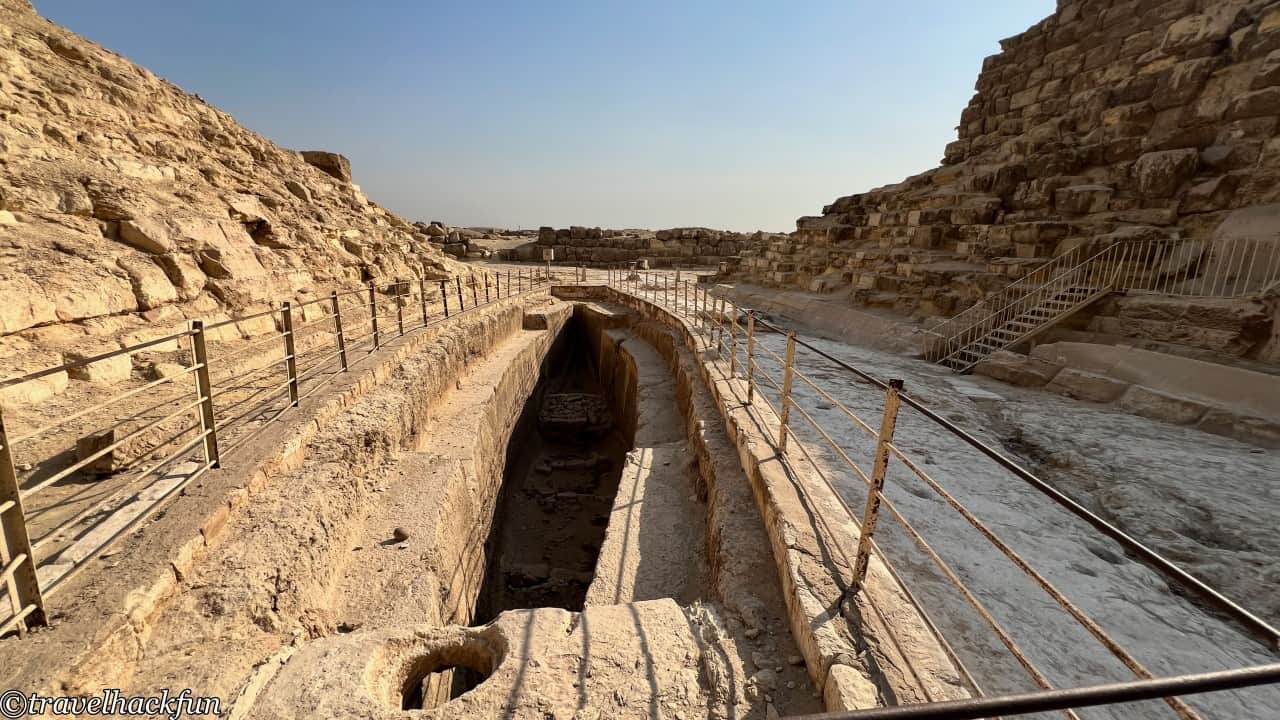
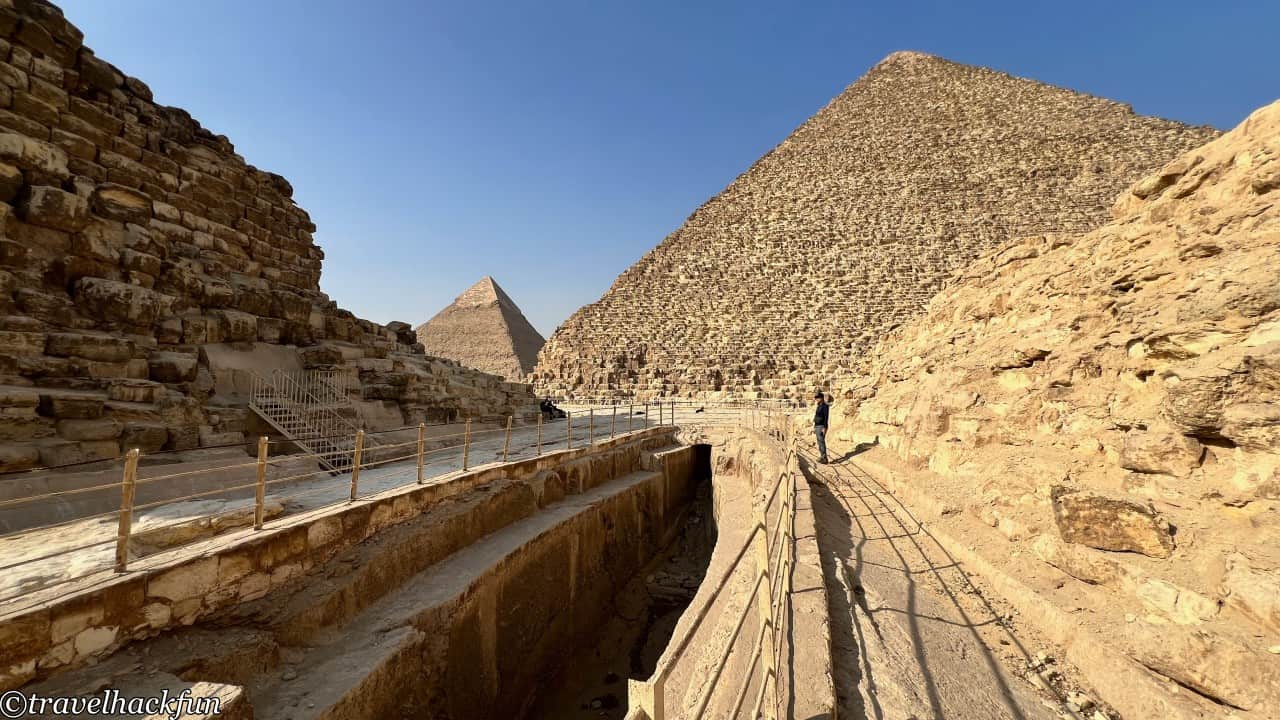
Must See | Pyramid of Khafre
Pharaoh Khafre reigned from approximately 2558 to 2532 BC. He was the son of Pharaoh Khufu. The Pyramid of Khafre, built on the Giza Plateau, is the second to be constructed there and is the best preserved among them. To express his respect for his father, Khufu, the actual height of his pyramid was only 143.5 meters, about 20 meters shorter than Khufu's pyramid. However, Khafre's Pyramid cleverly utilizes the terrain, making it appear as tall as Khufu's Pyramid, still presenting itself as a spectacular tomb.
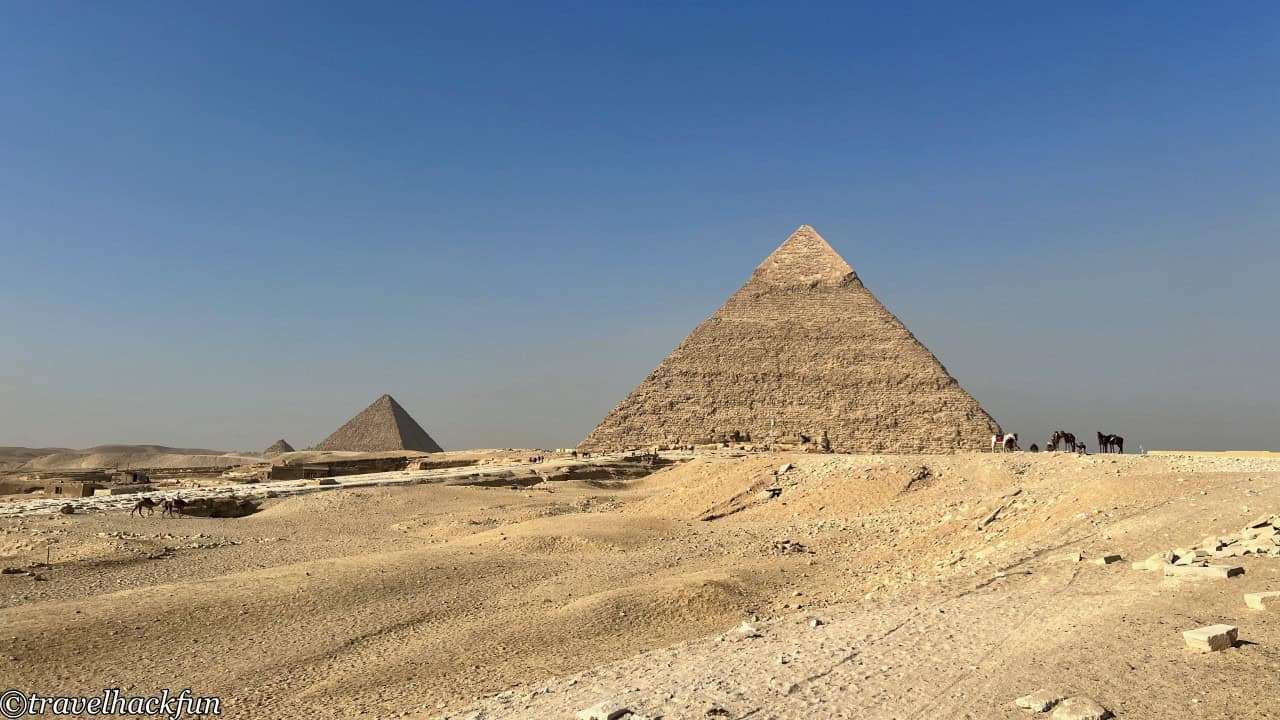
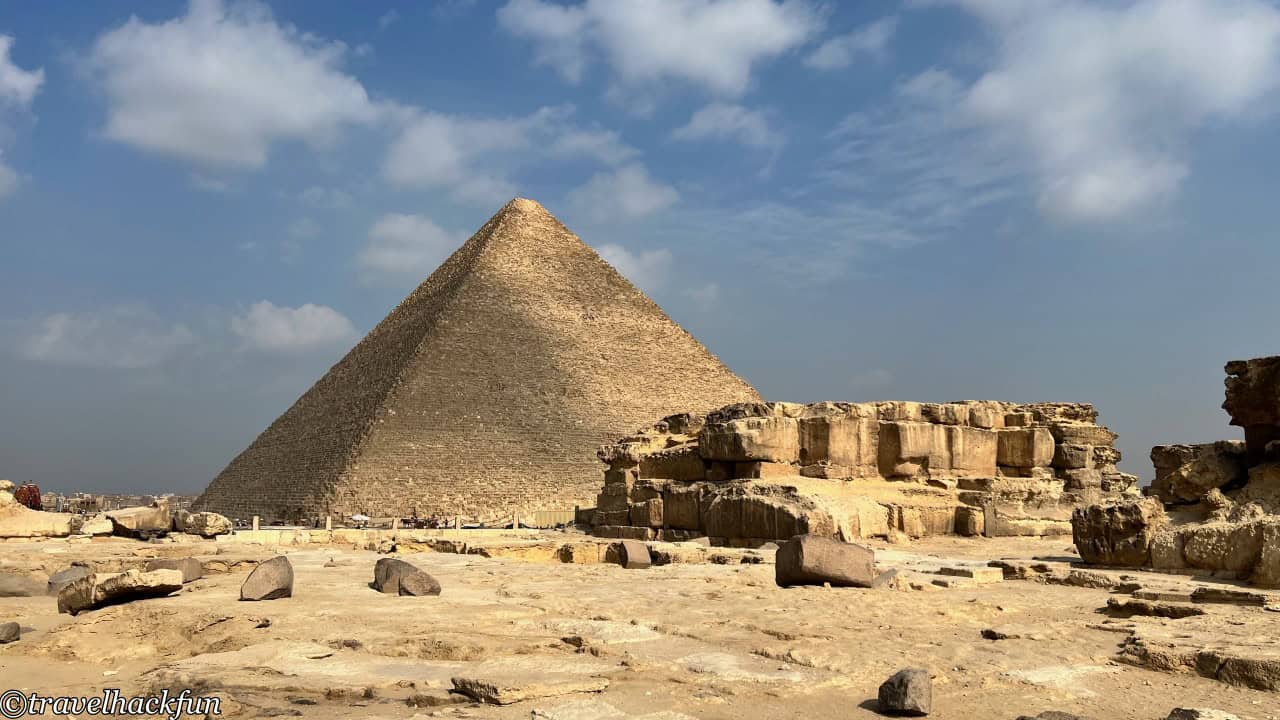
The construction method of the Khafre Pyramid is similar to that of the Great Pyramid of Khufu, with its core parts made from local limestone blocks, while the outer layer was originally covered with high-quality limestone transported from the south. The Khafre Pyramid is the best-preserved pyramid, with the outer limestone layer still remaining at the top, whereas the lower outer limestone layer has disappeared, just like that of the Great Pyramid of Khufu.
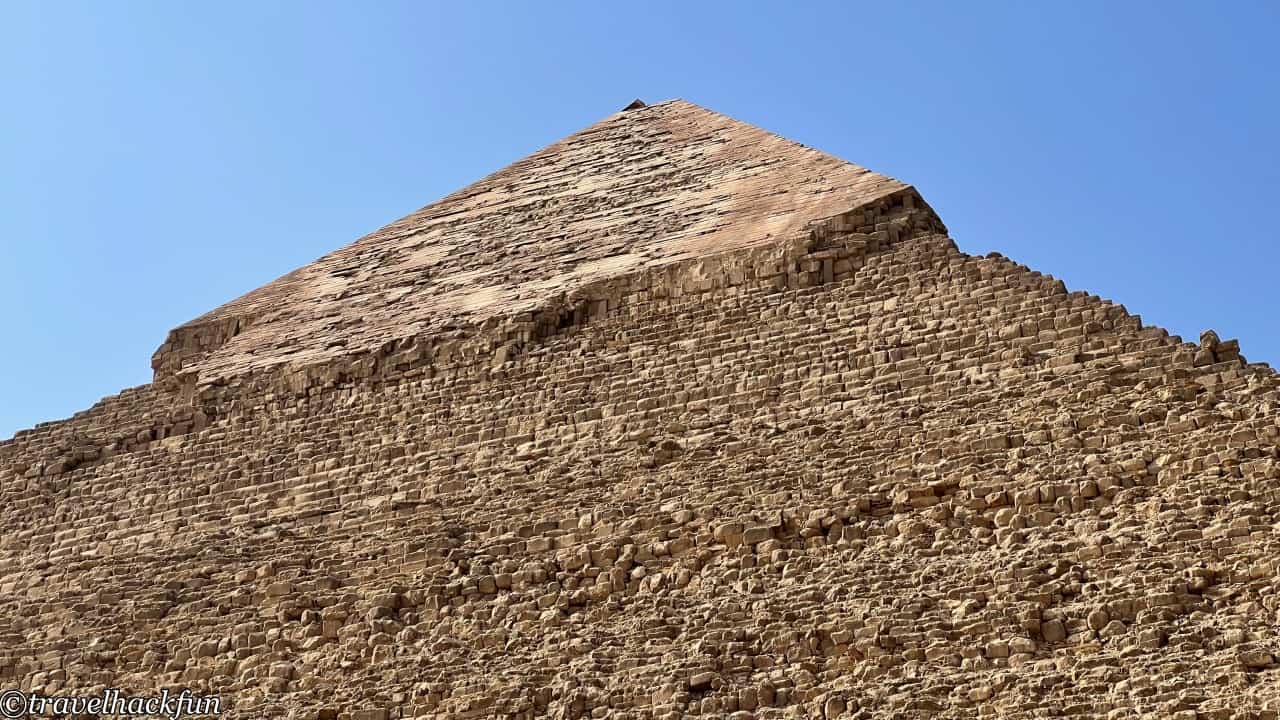
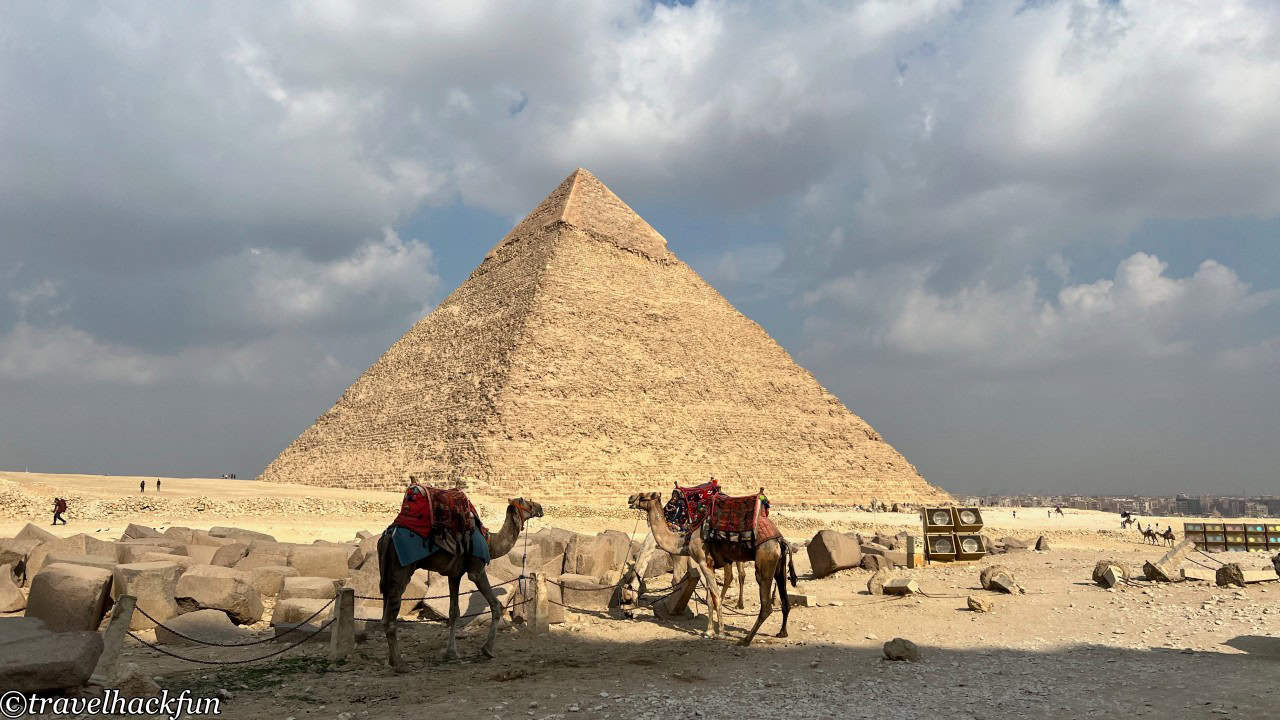
The Mortuary Temple of Khafre is located at the base of the pyramid and is better preserved than the Great Pyramid of Khufu. The causeway leading to the temple stretches all the way to the side entrance of the Giza Pyradmids Complex, where the Sphinx and the Valley Temple are located. These are the starting points of the pyramid rituals, reflecting the advancement and complexity of religious architectural design. Looking from the temple towards the pyramid, one can see the originally symmetrical design of the whole structure.

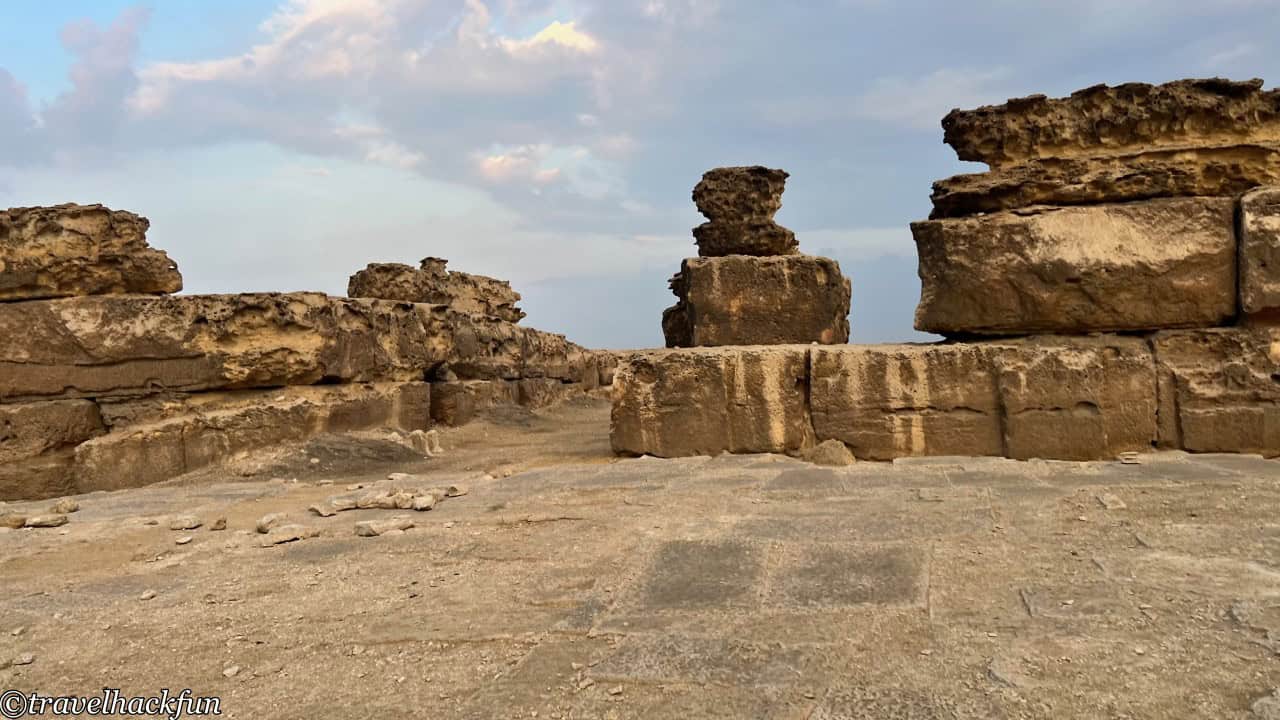
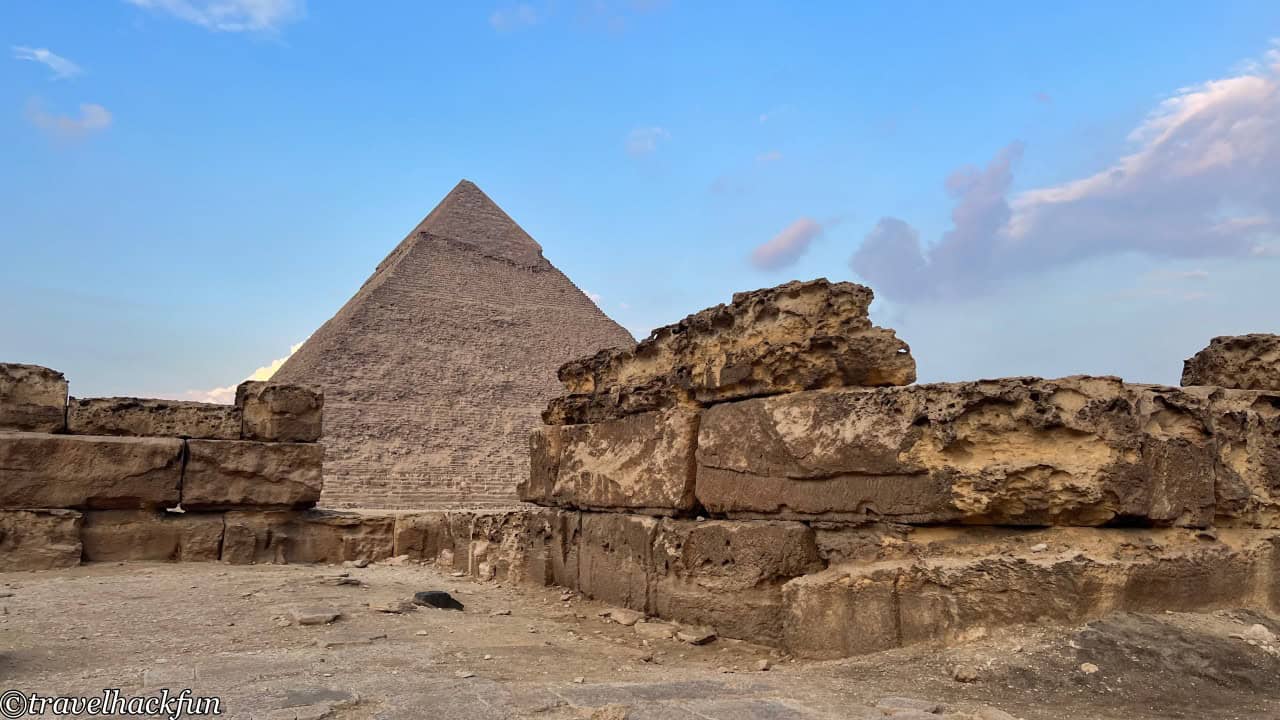
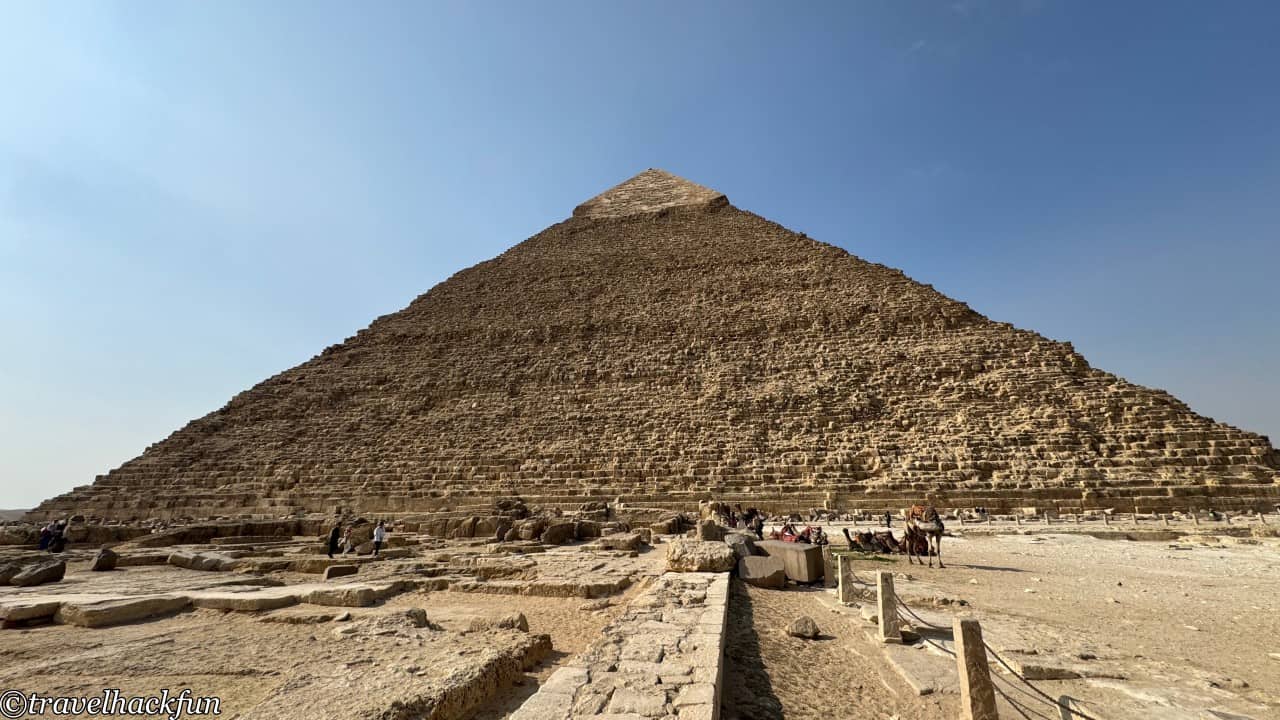
Must See | Pyramids of Menkaure
The Menkaure Pyramid is the third of the three great pyramids of Giza. The identity of Menkaure is not entirely clear, but it is certain that he was a pharaoh, very likely the son of Khafre and the grandson of Khufu.
The Menkaure Pyramid is significantly smaller in size than the first two, standing at only 40% of the height of Khafre's Pyramid, with an original height of 65 meters and a base area less than one quarter of the other two. However, standing in front of it, it still feels immensely majestic. The reason for its smaller scale is partly due to the limited space available on the Giza plateau, and partly because of the choice of building materials. Menkaure chose granite from Aswan, which is over 800 kilometers away, much harder than the commonly used limestone, making transportation and processing much more difficult.
Only the bottom quarter of the pyramid's exterior was made of granite, with the rest constructed from limestone. The granite used also includes a significant portion that was left unpolished, which we can still see on site today. It is speculated that this was because Menkaure passed away before the pyramid was completed, leading to a hastened completion. The original design, which included the mortuary temple, was also intended to be built with granite, but ultimately, only plastered mudbrick was used. Beside Menkaure's pyramid, there are three smaller queen's pyramids. A short distance away, on the western side, the nearest viewpoint offers a clear view of their relative positions.
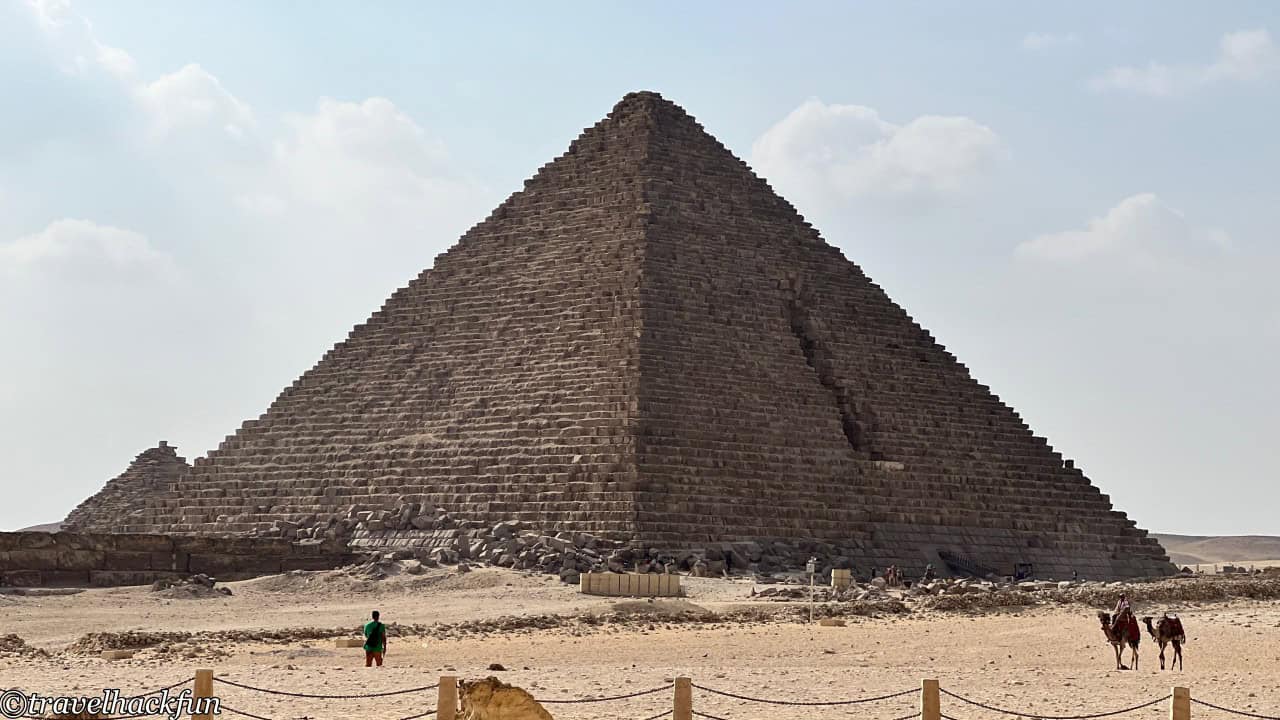
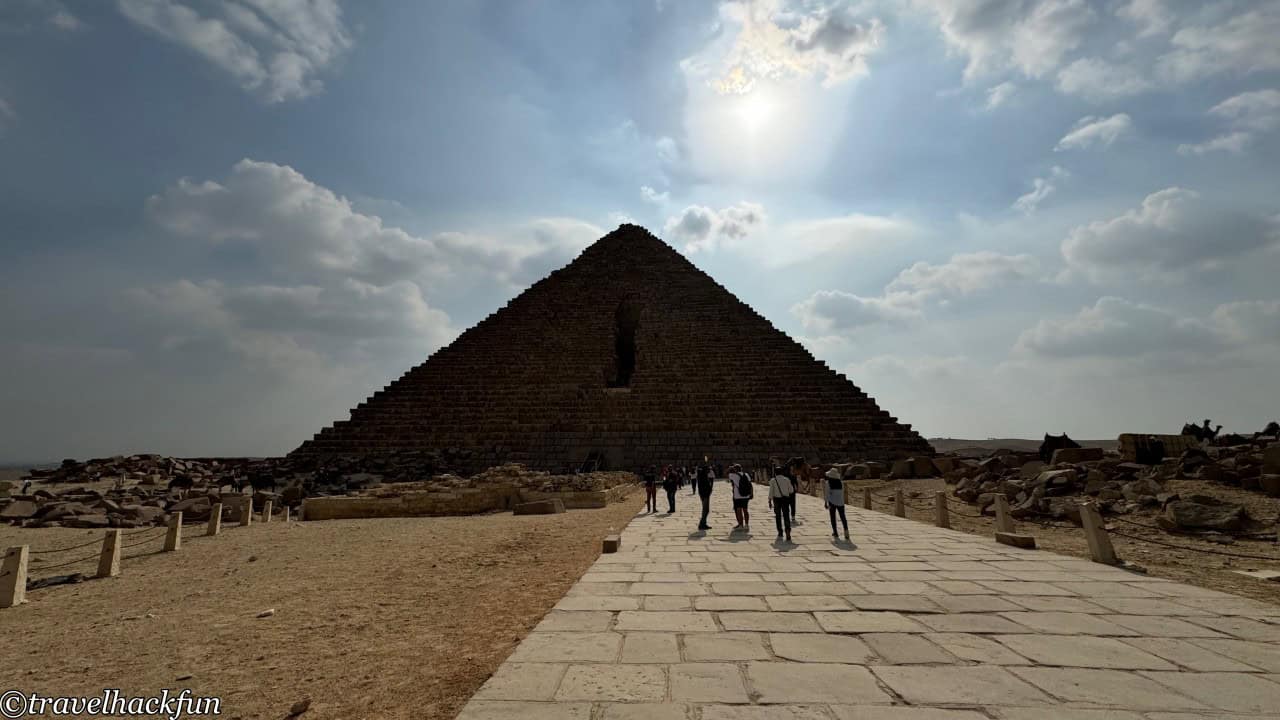
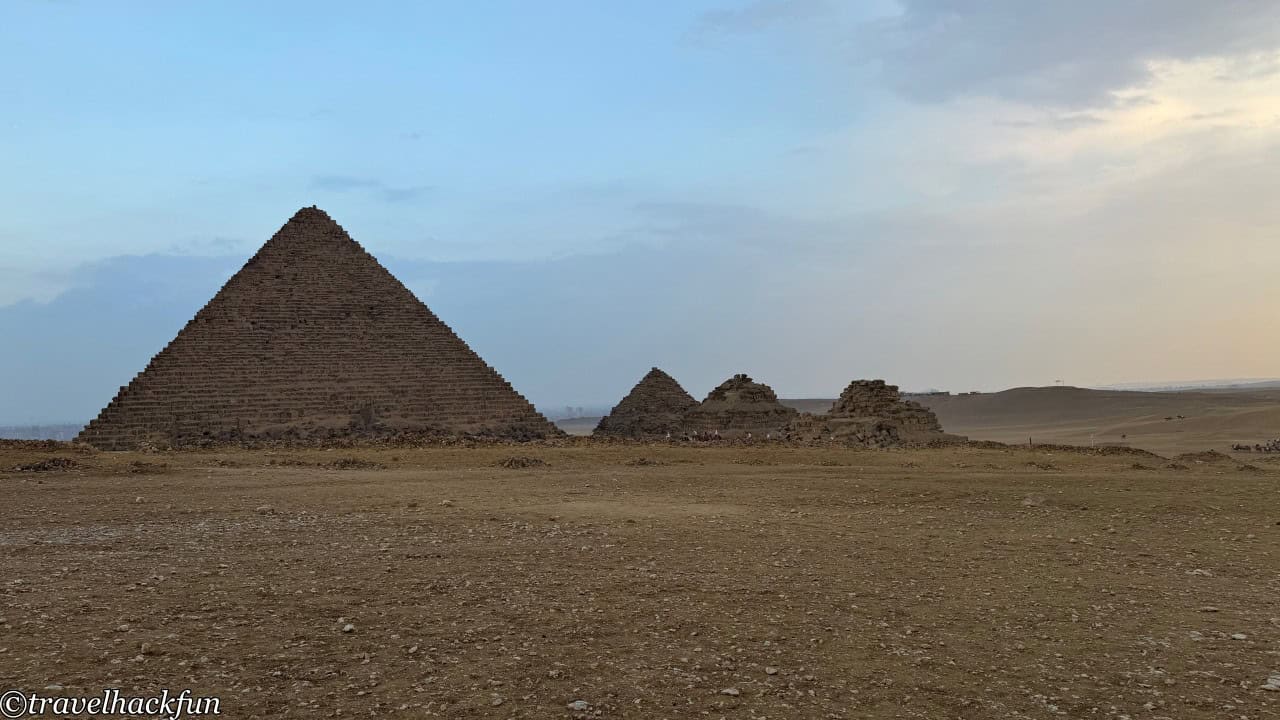

Must See | The Panorama Point
Tourists often arrange to ride camels to the viewpoint as part of the experience, enjoying the desert landscape along the way. In fact, if you don't mind the heat or fatigue of the desert, walking is also feasible. When we arrived, it happened to rain in the desert, reducing both the dust and the heat by half, so we simply opted to walk there.
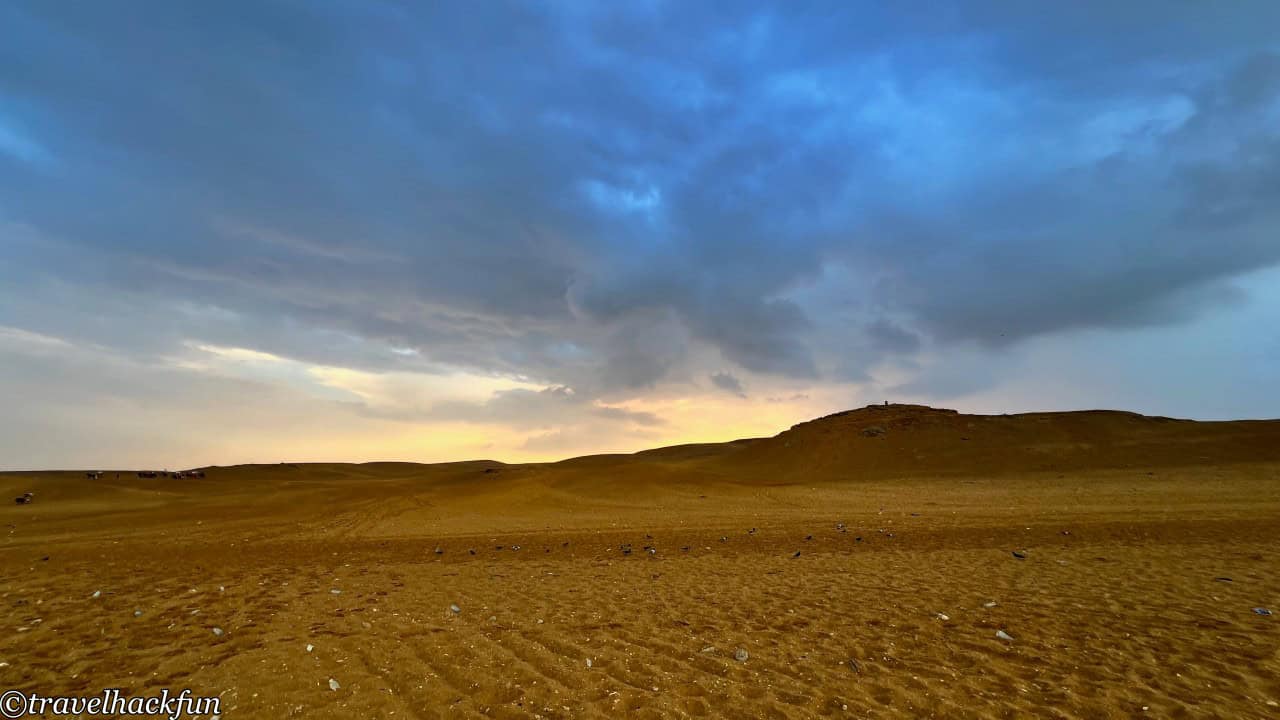
The best panoramic viewpoint of the pyramids is located to the southwest of the Giza Pyramids, a bit further away, offering a view that includes all nine pyramids - the three Great Pyramids and the six smaller satellite pyramids.
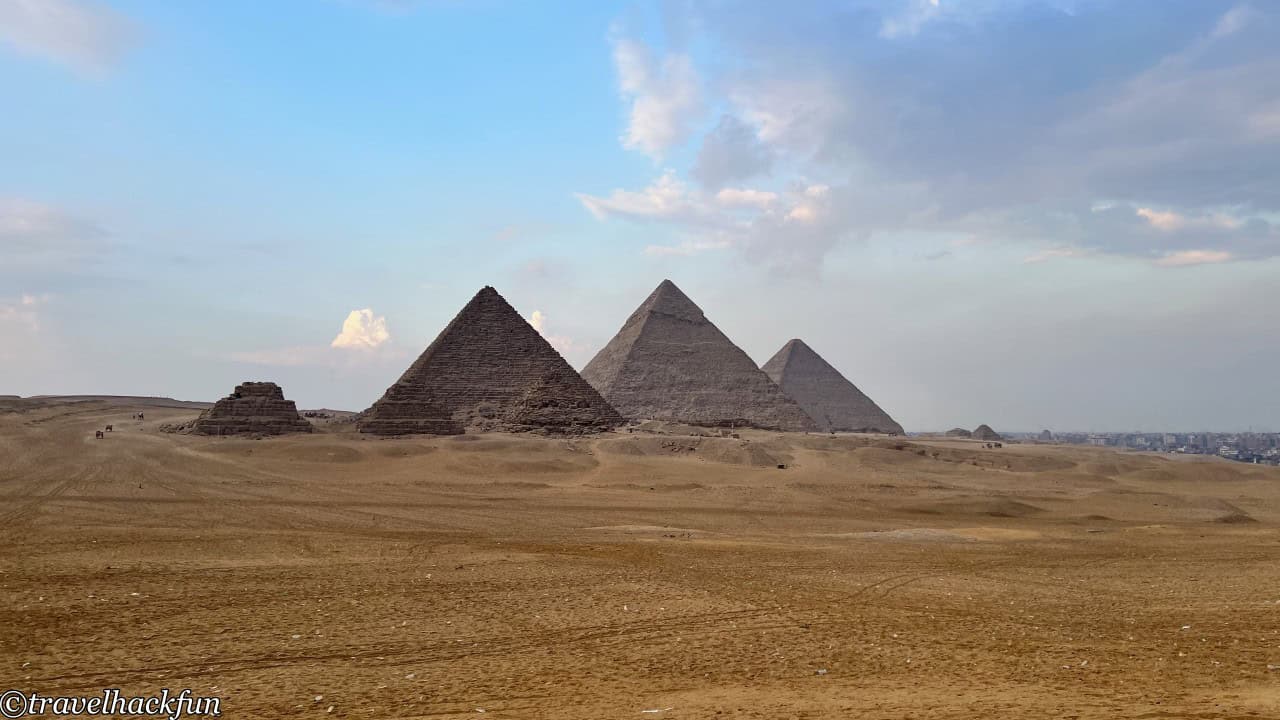
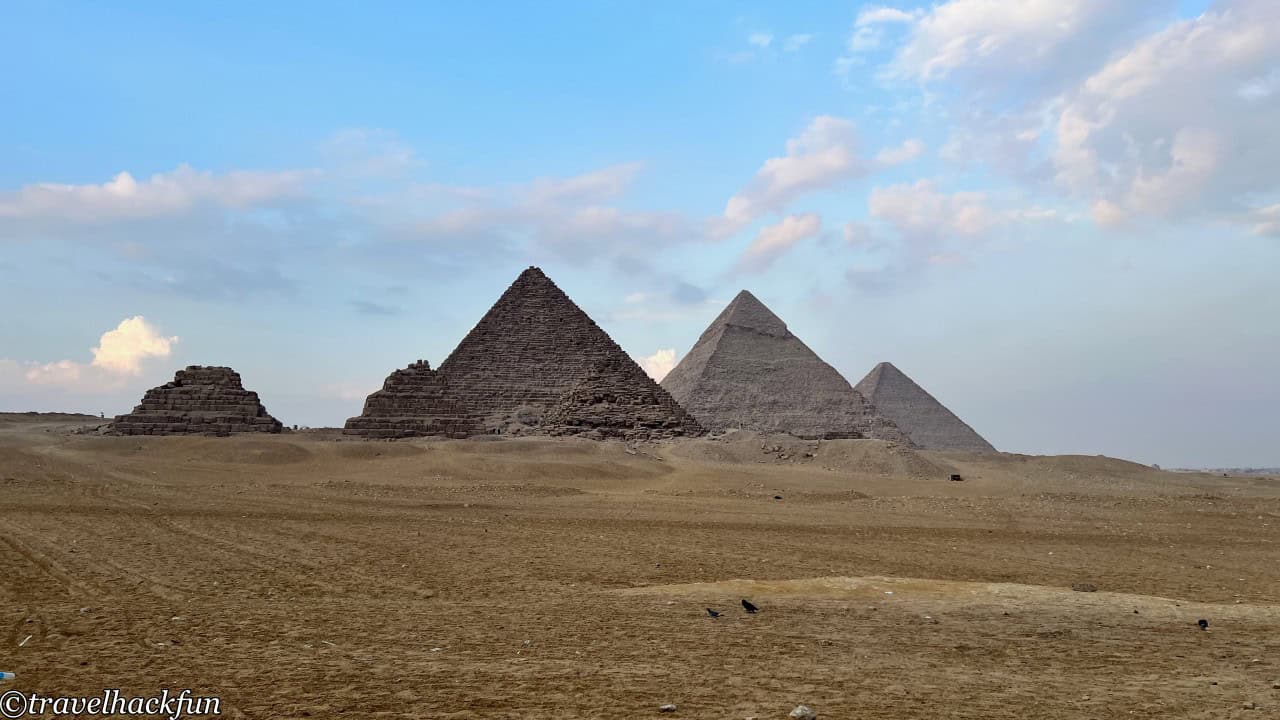
Must See | The Great Sphinx of Giza
During the Eighteenth Dynasty, Pharaoh Thutmose IV erected a Dream Stele in front of the Sphinx as a symbol of the divine legitimacy of his reign. According to the inscriptions on the stele, Thutmose IV, while he was still a prince, took a nap in the shadow of the Sphinx. In his dream, the god Horus promised him the throne on the condition that Thutmose IV would clear the sand covering the Sphinx, thus restoring its splendor. After waking up, Thutmose IV fulfilled this promise and subsequently became Pharaoh.
During the 18th Dynasty, Pharaoh Tuthmose IV erected a tablet in front of the Sphinx as a symbol of the sanctity of kingship. According to the inscription, Tuthmosis IV slept in the shadow of the Sphinx when he was a prince. In his dream, the god Horus promised him the throne on the condition that Tuthmosis IV would remove the sand covering the Sphinx and restore its splendor. Tuthmosis IV woke up and fulfilled this promise and later became Pharaoh.
You might also notice that the Sphinx is missing its nose. Some people claim it was destroyed by Napoleon's artillery during the 1798 Egyptian campaign, but in fact, the nose was already missing in the drawings by the Danish explorer Frederik Ludvig Norden in 1748. Therefore, it's more likely that it was deliberately destroyed due to religious reasons or eroded over time.
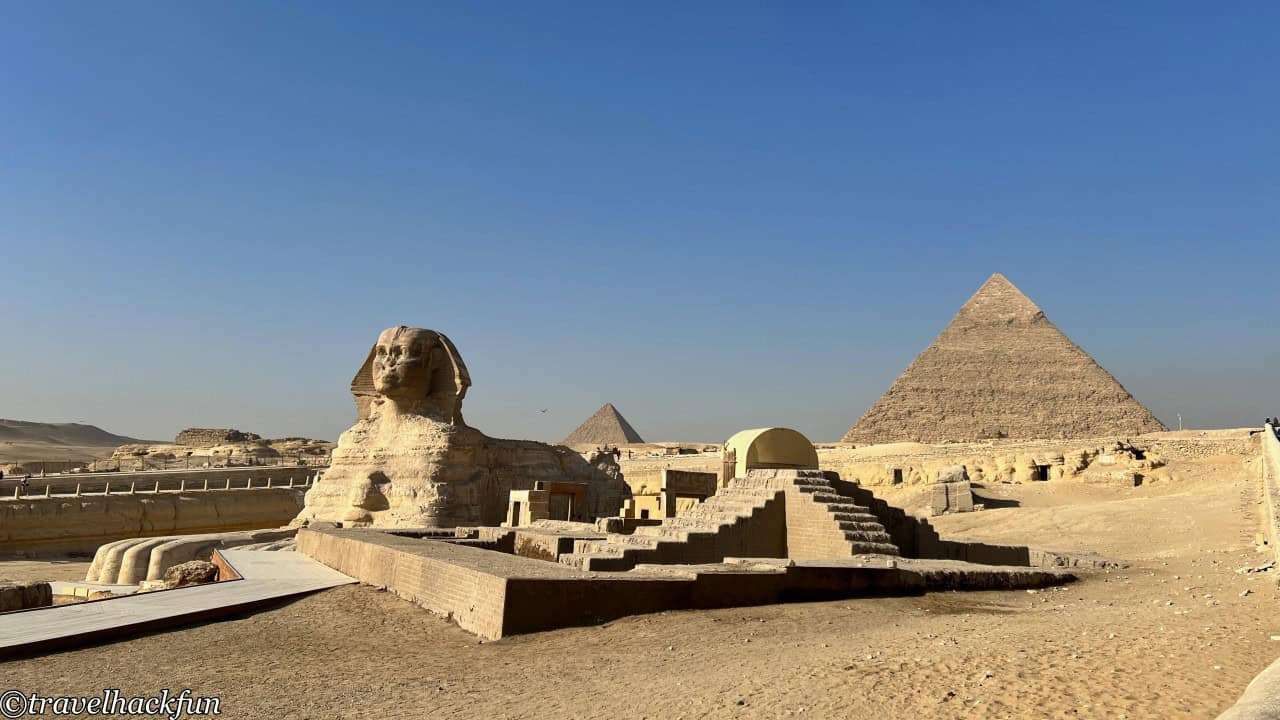
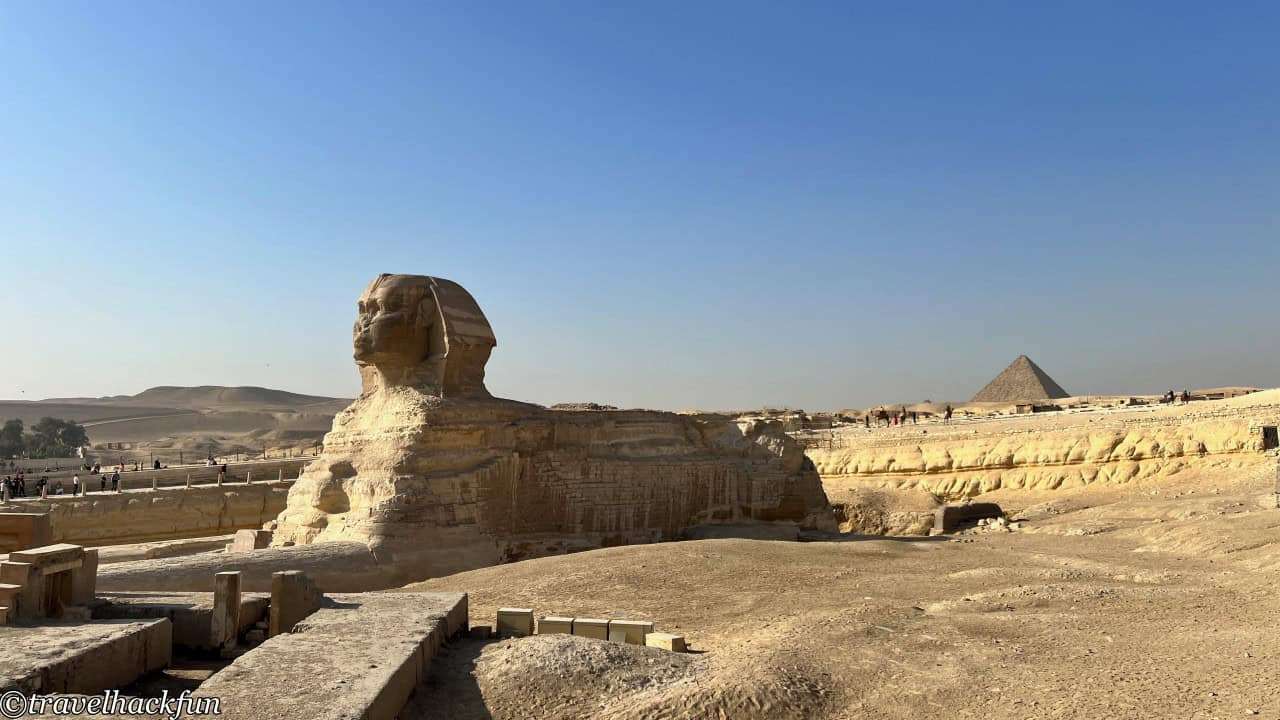

Attraction | Valley Temple
Not far from the Great Sphinx is the Valley Temple of Khafre. The Valley Temple of the Khafre Pyramid is one of the best-preserved temples from the Old Kingdom period.
The Valley Temple was an essential part of the ancient Egyptian pyramid complex, located in the lowlands or valleys near the main pyramid, often close to the Nile River, for the convenience of transporting construction materials and ceremonial items via the river. These temples were primarily used for conducting rituals and religious activities related to the pharaoh's funeral, connecting the pharaoh's current life with the afterlife. The Valley Temple served as the venue for important ceremonies such as the purification and wrapping of the mummy before entering the afterlife. It also played a role in hosting festivals and special religious celebrations.
The structure of temples in the valley is usually very sturdy, constructed extensively with stones such as granite and limestone. The interior of the temple is beautifully decorated, with frequent reliefs and sculptures on the walls depicting the life and achievements of pharaohs, as well as their relationships with the gods.
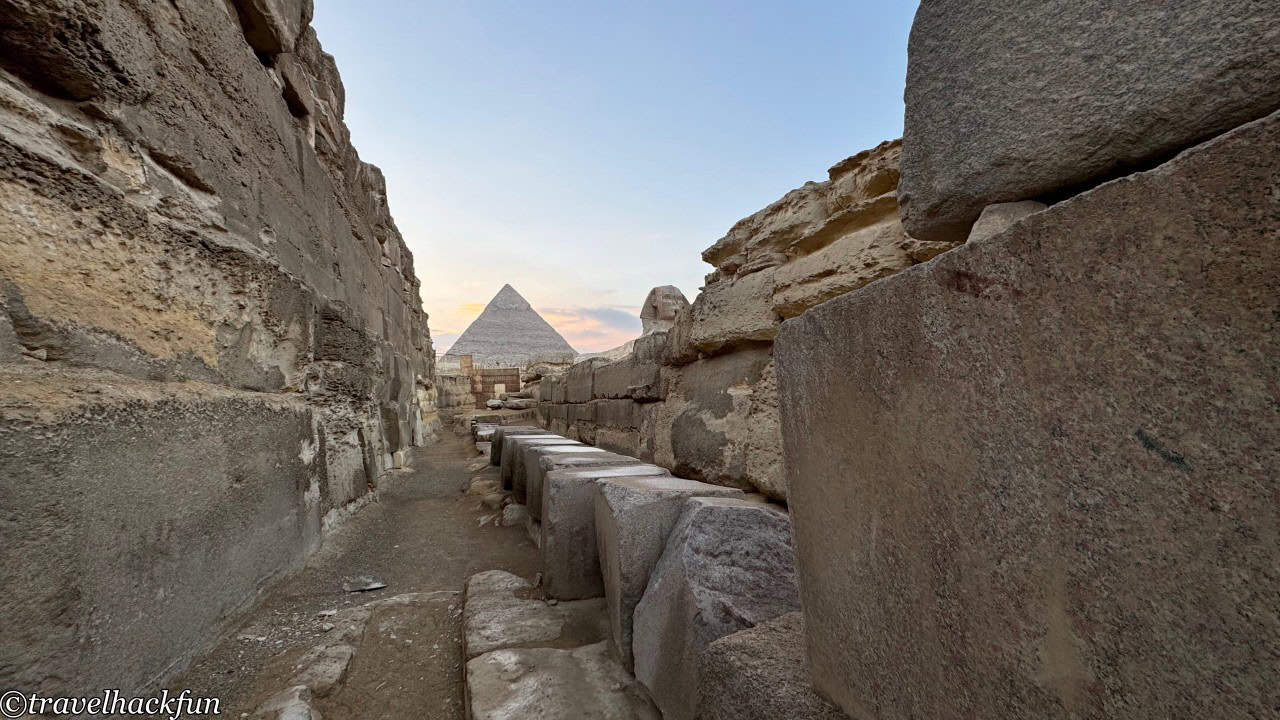
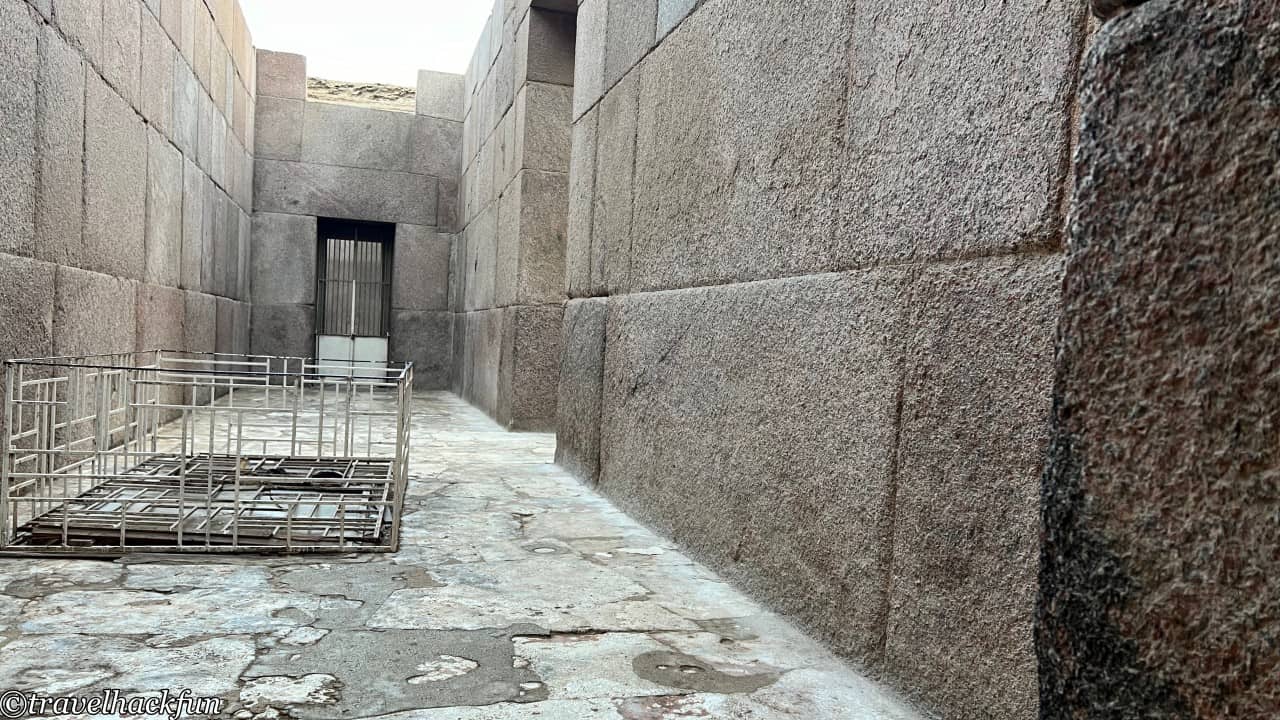
Attraction | Mastabas
In addition to the attractions mentioned above, there are many noteworthy mastabas around the pyramids. A mastaba is a type of tomb structure that is usually rectangular, built above ground-level tombs. These tombs belong to noble officials related to the pharaohs. Walking towards the East Cemetery by the east side of the Great Pyramid of Khufu or near the side entrance, you can find quite a few. Most of the mastabas in the East and West Cemeteries were built during the reign of Khufu, concurrently with his pyramid complex, while the majority of the rock-cut tombs were constructed later.
Be cautious if you walk towards the cemetery, as the number of tourists and police officers diminishes, making it more likely that you'll encounter individuals claiming to offer free tours or pretending to be staff. These individuals intentionally guide tourists to secluded areas and then forcefully demand tips through a mix of deception and coercion. It's best to avoid engaging with overly friendly strangers.
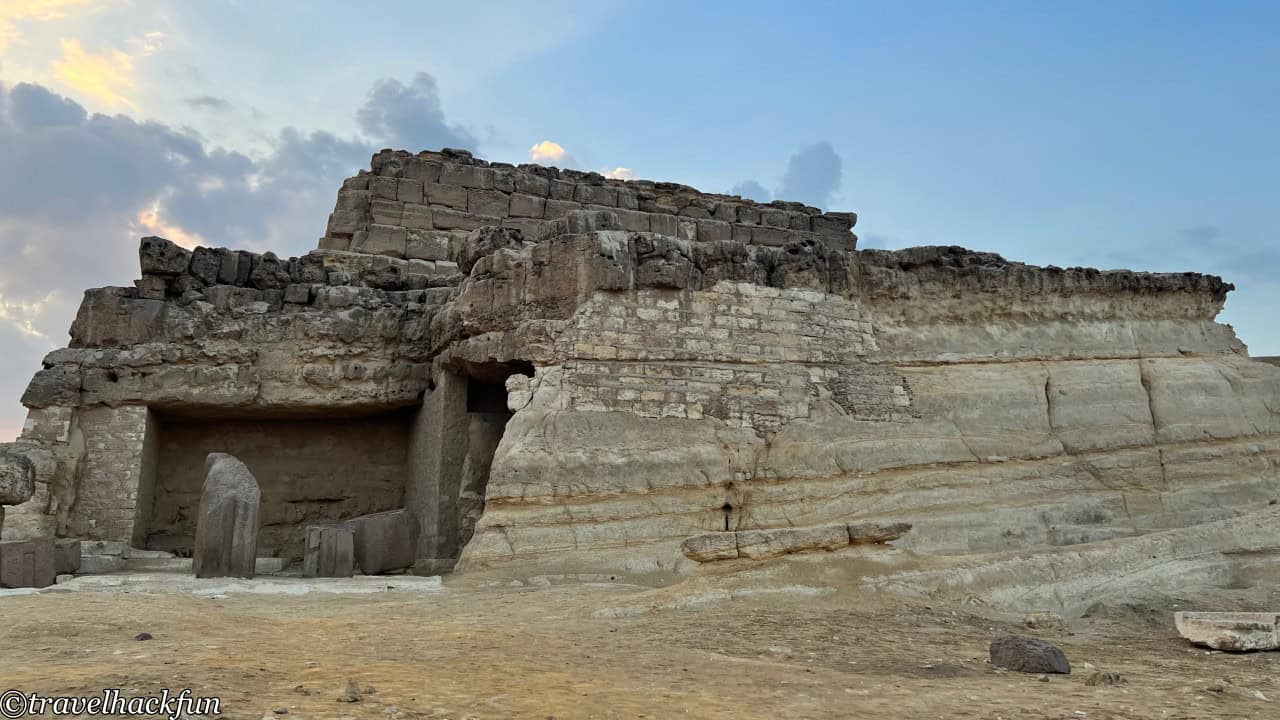
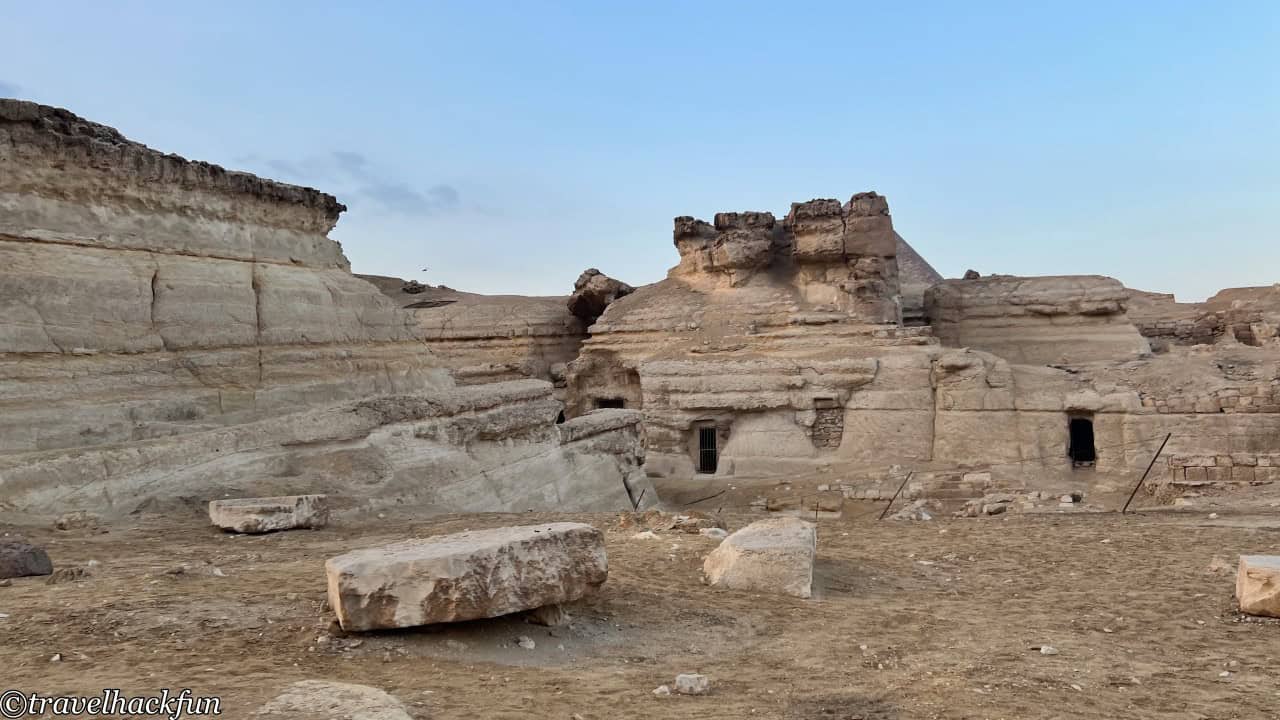

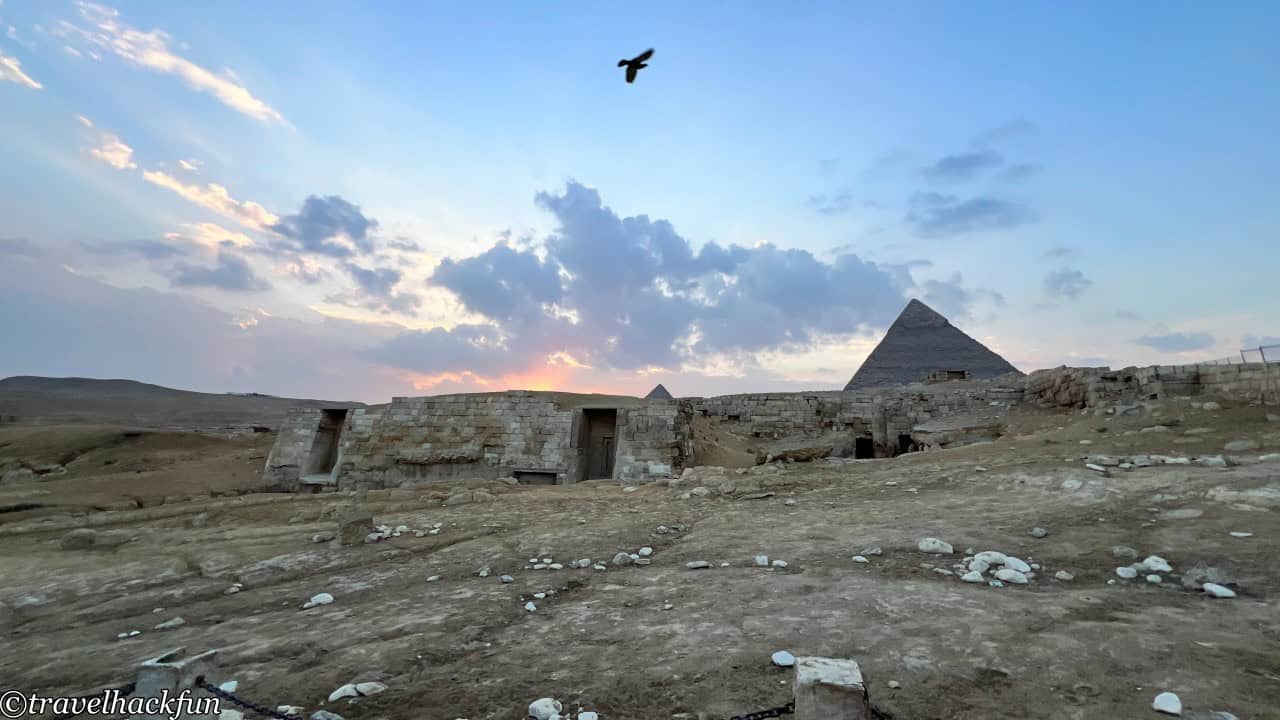
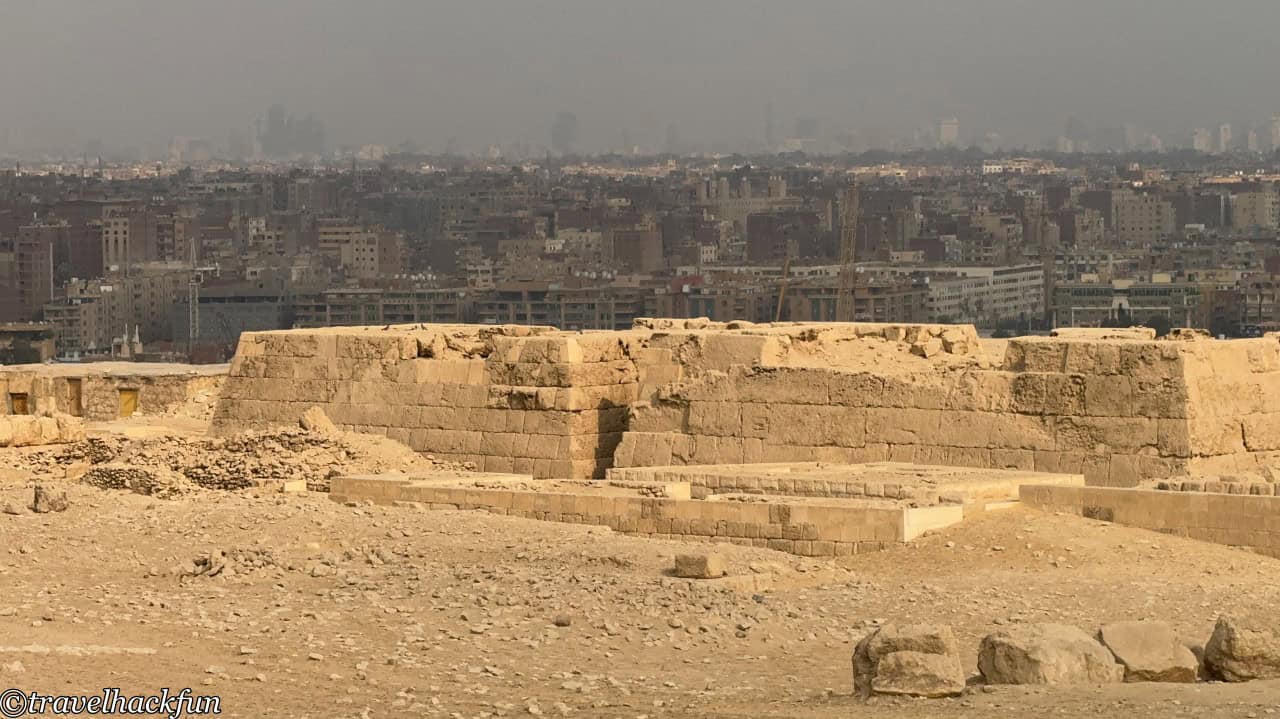
If you're interested in the interior design of pyramid tombs but find the ticket for the Great Pyramid too expensive, there are underground tombs near the Eastern Cemetery that you can enter for free. The Queen's Pyramids are sometimes open as well, and you can choose a free tomb close to the Pyramid of Khufu to enter. Although it's free, you'll still be expected to give a small tip to the guards sitting at the entrance when you leave. If you don't want to get into a hassle, just giving a little something is fine.
We opted to enter the underground tomb next to the base of the Great Pyramid of Khufu. Compared to the inner passages of the pyramid, the passages in the underground tomb are even narrower, making it easier to navigate by walking backward. Although the burial chambers inside are small and the layout of passages is different, from an experiential perspective, it feels not much different from the Great Pyramid of Khufu.
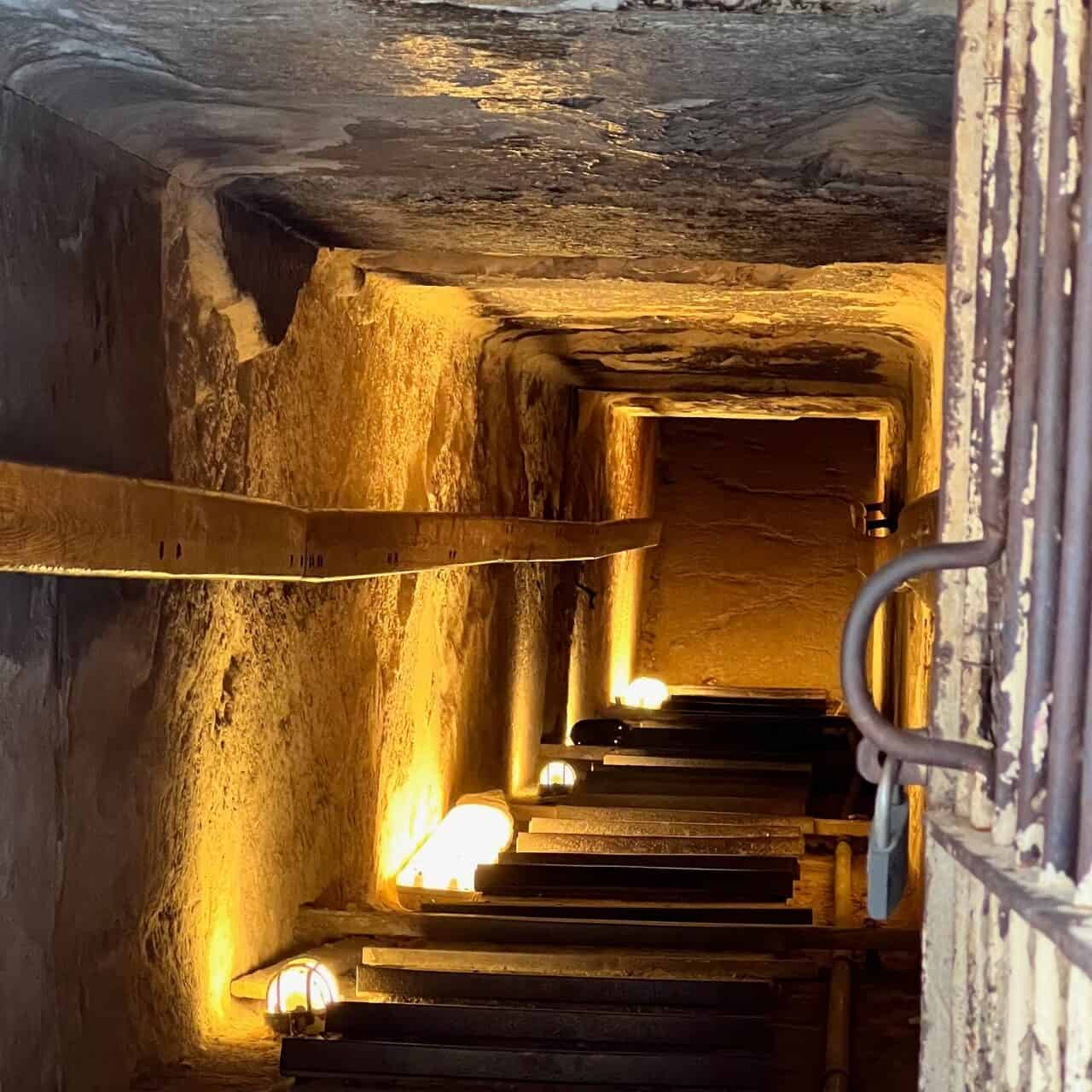
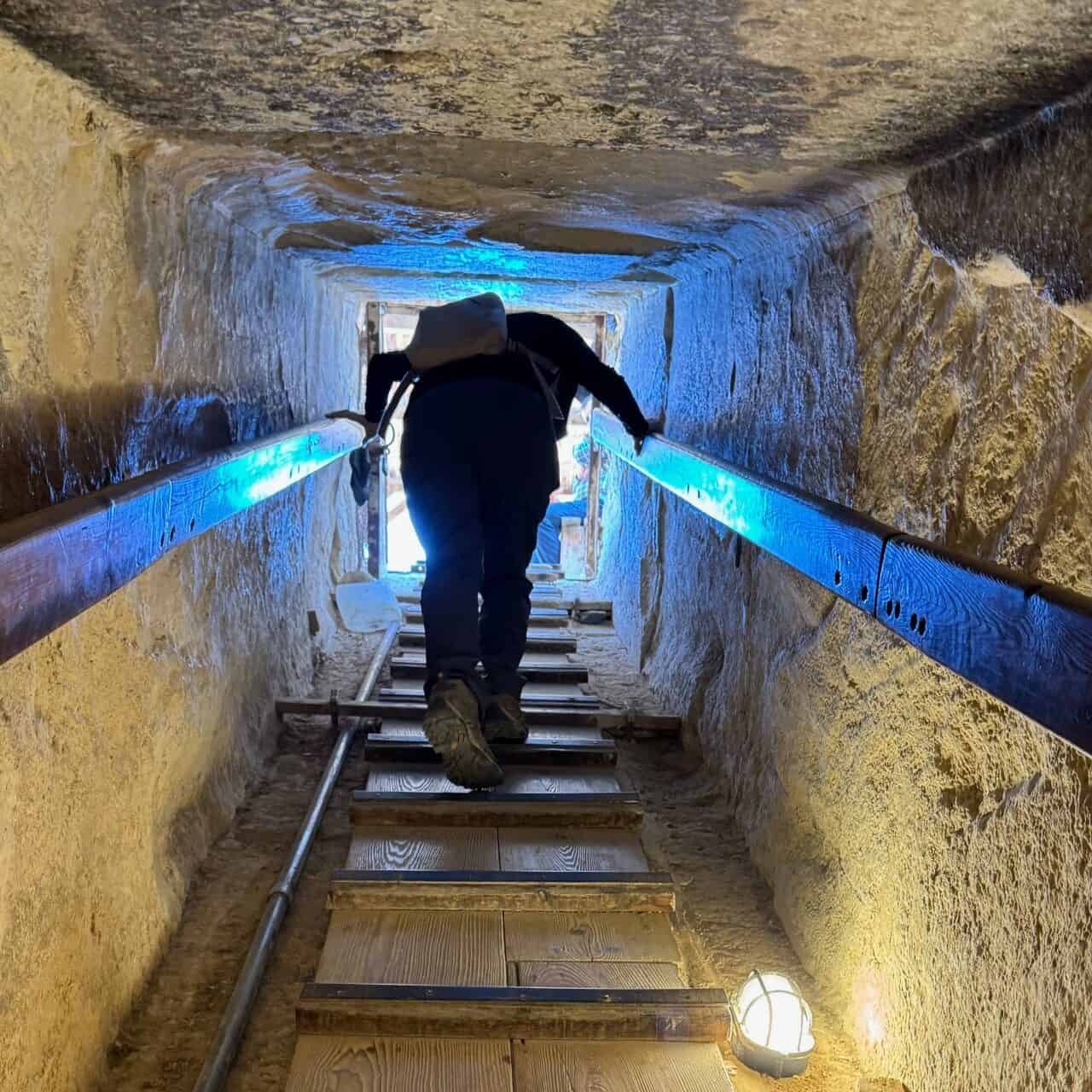
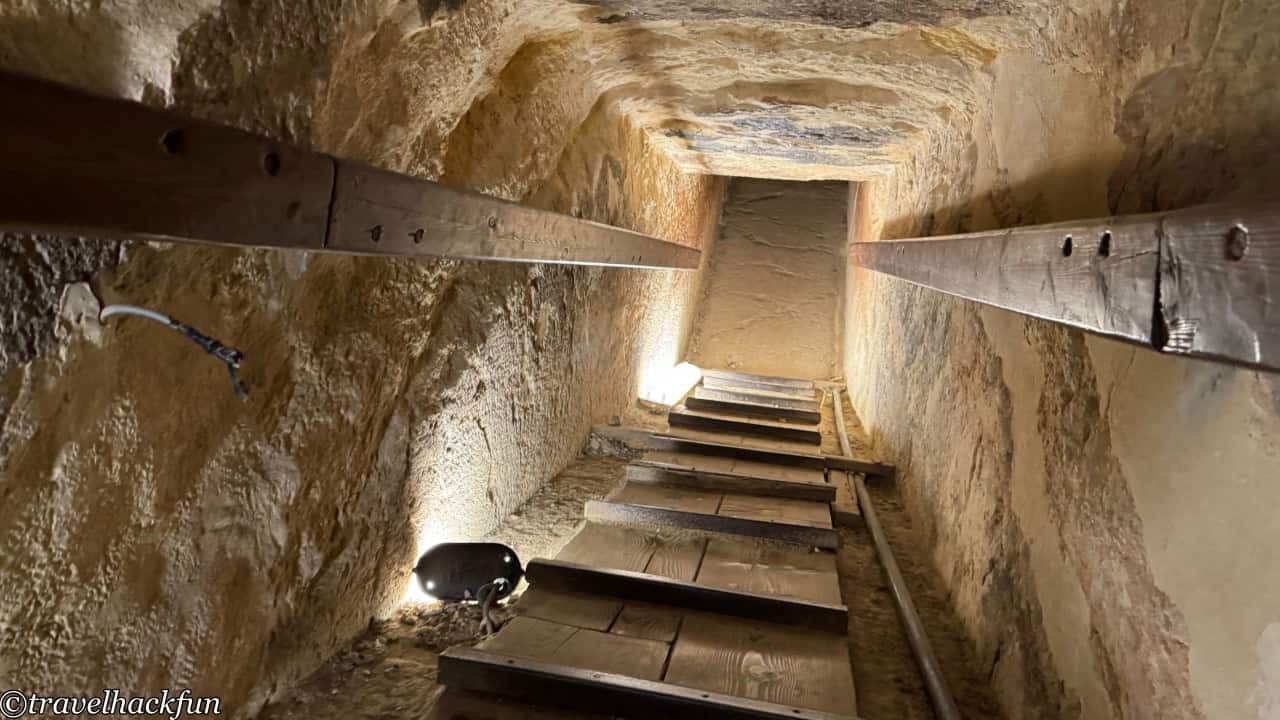
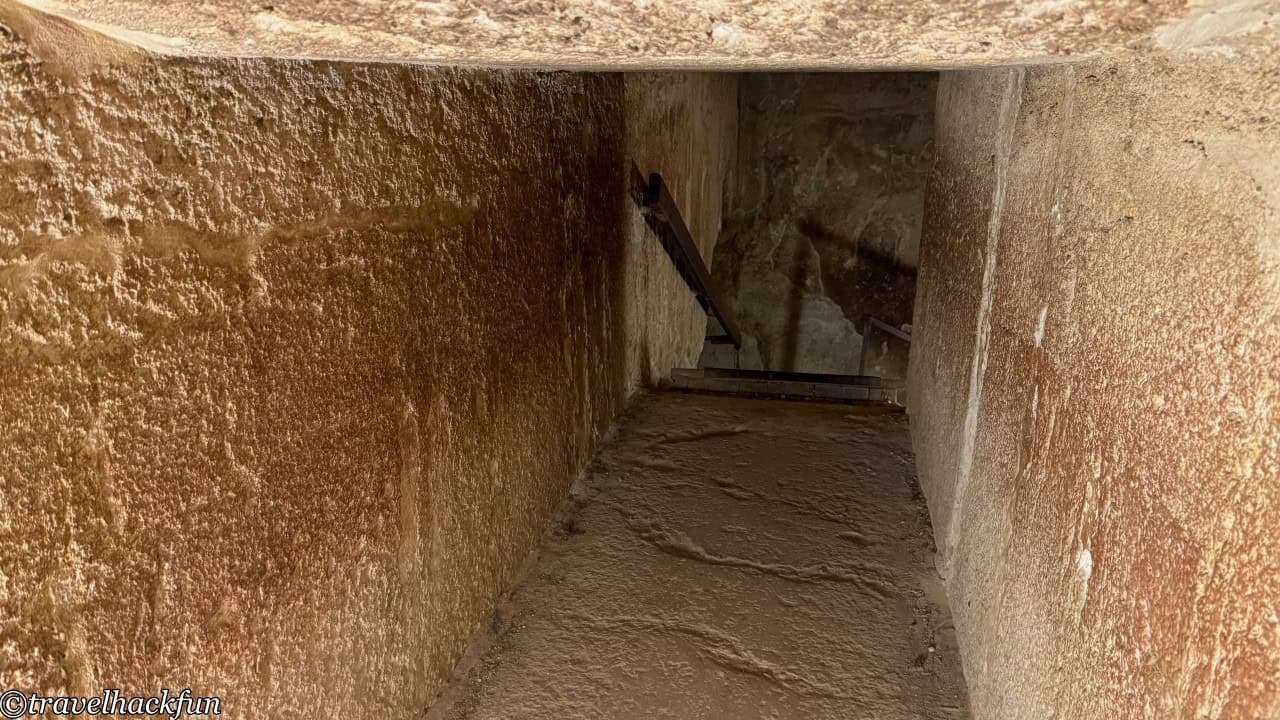
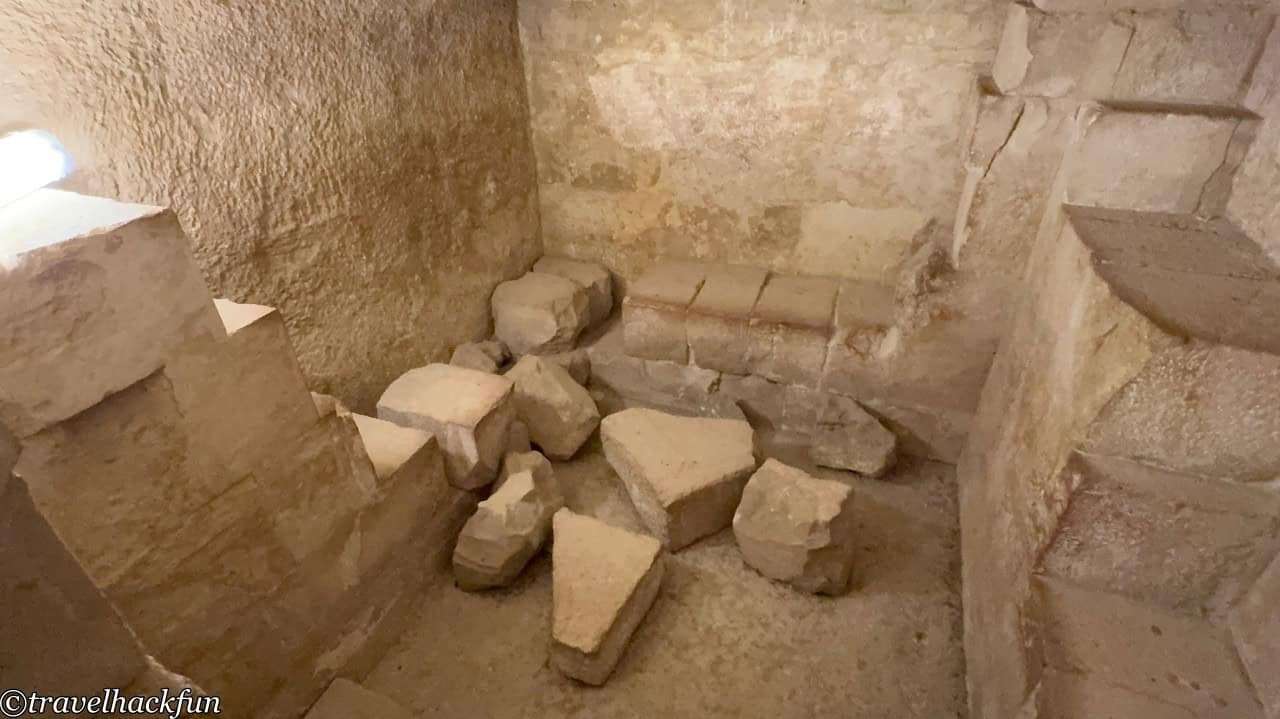
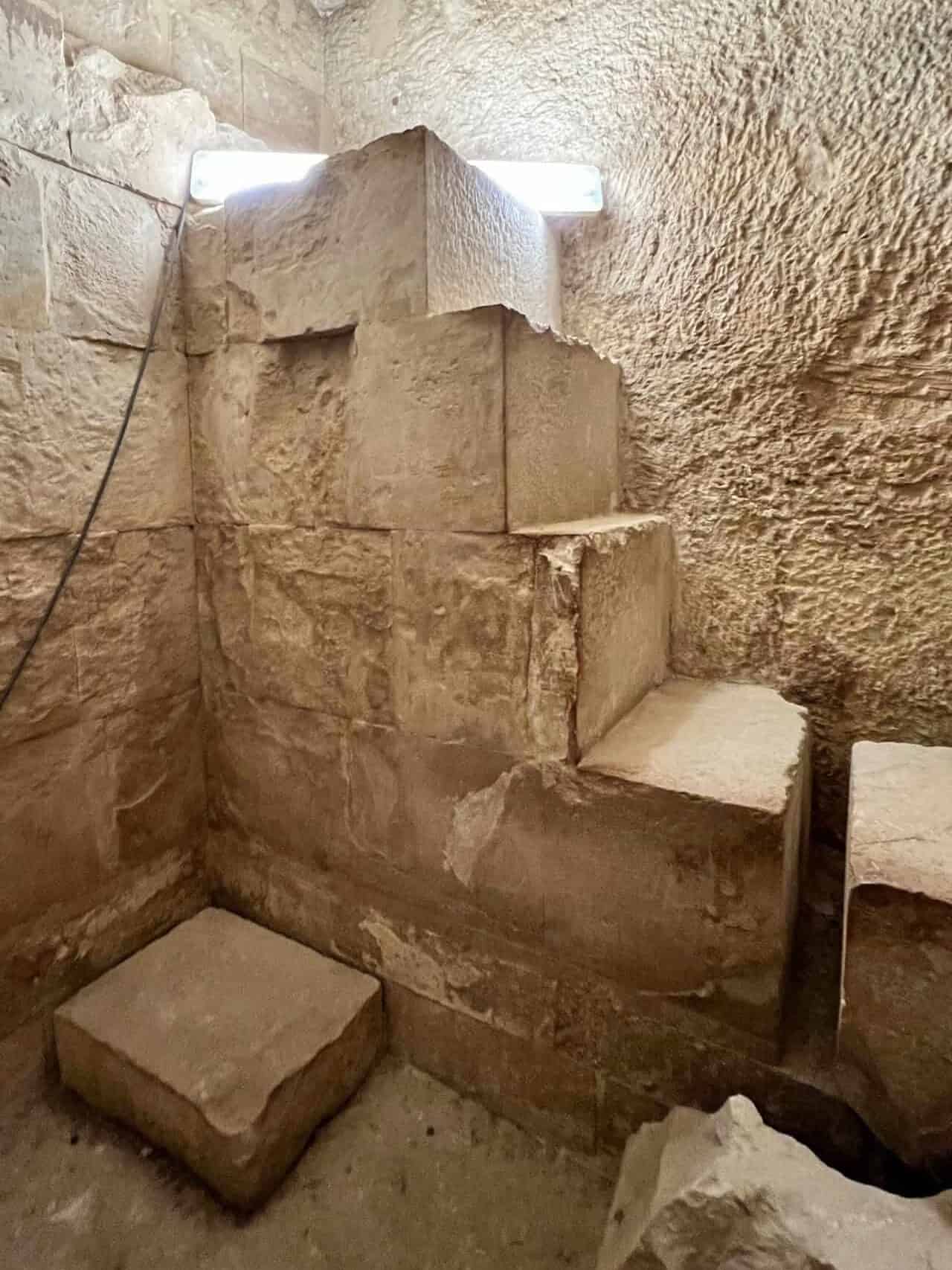
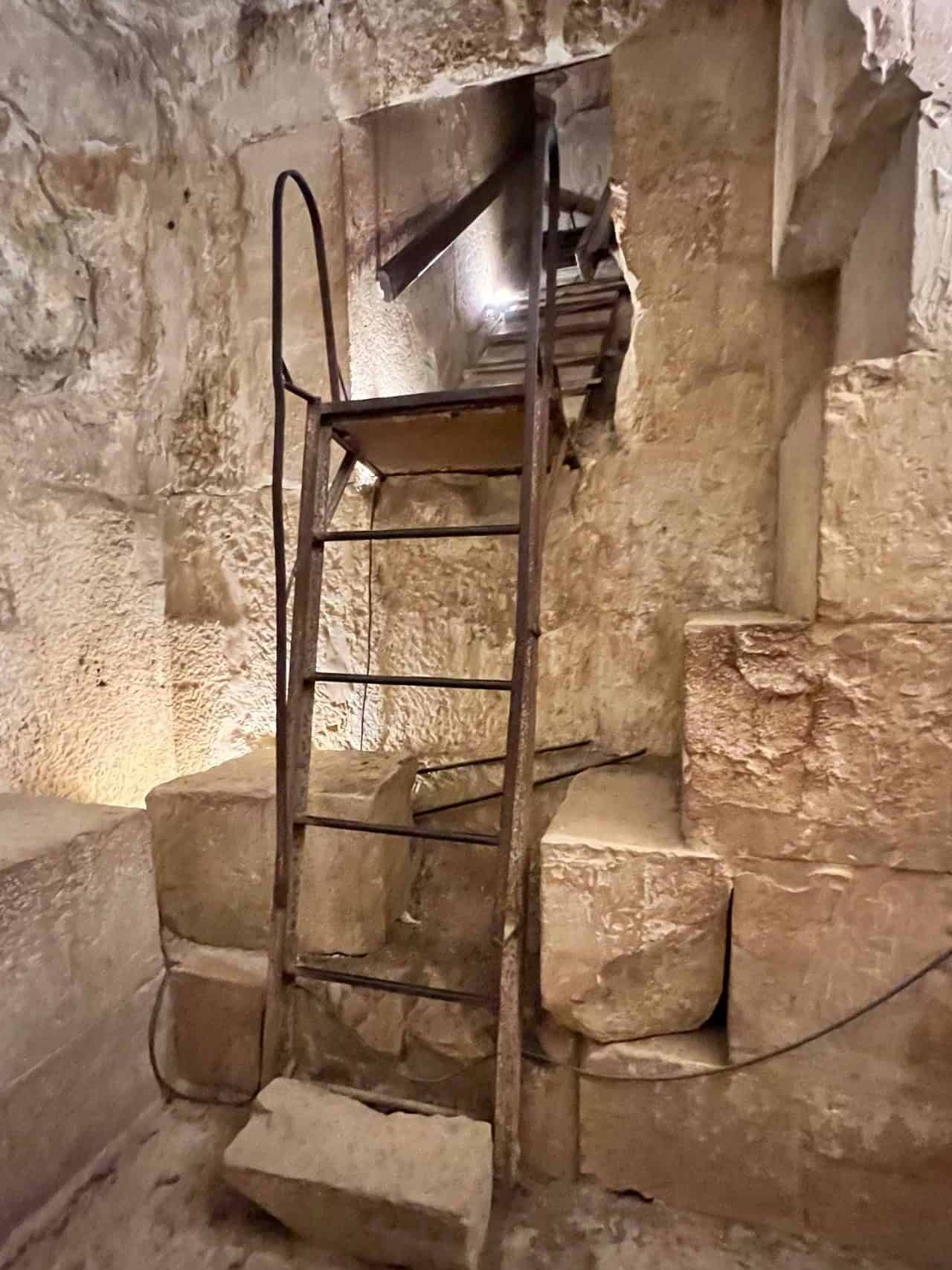
Giza Pyramid Complex | Cuisine
Khufu's Restaurant
- Recommendation: ⭐️⭐️⭐️
- Price: $$$$$
Khufu's Restaurant, located in the center of the Giza Pyramid Complex in Egypt, is a high-priced restaurant serving fine Egyptian cuisine. Khufu's Restaurant is located in the scenic area and has an accessible pyramid view with a scenic area ticket. If you're interested in dining here, go to the official websiteReservations were made on the website. We had a lunchtime reservation and were assigned a nice outdoor spot right off the bat.
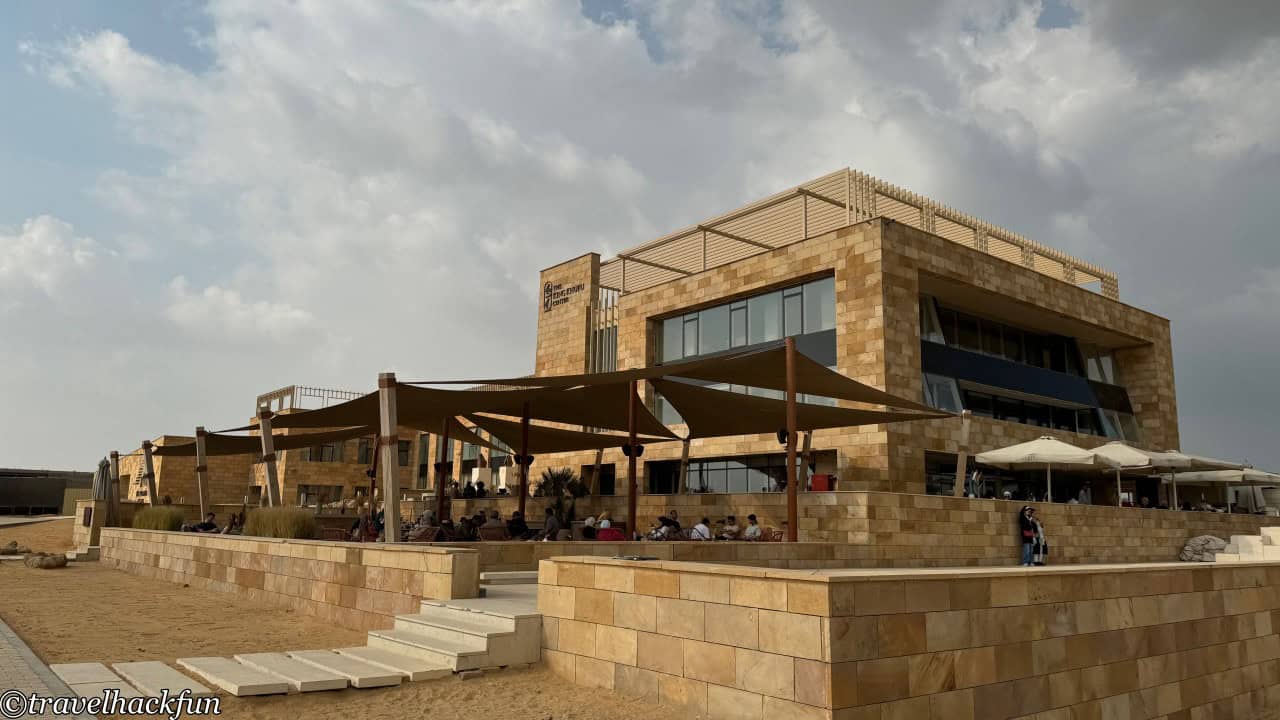
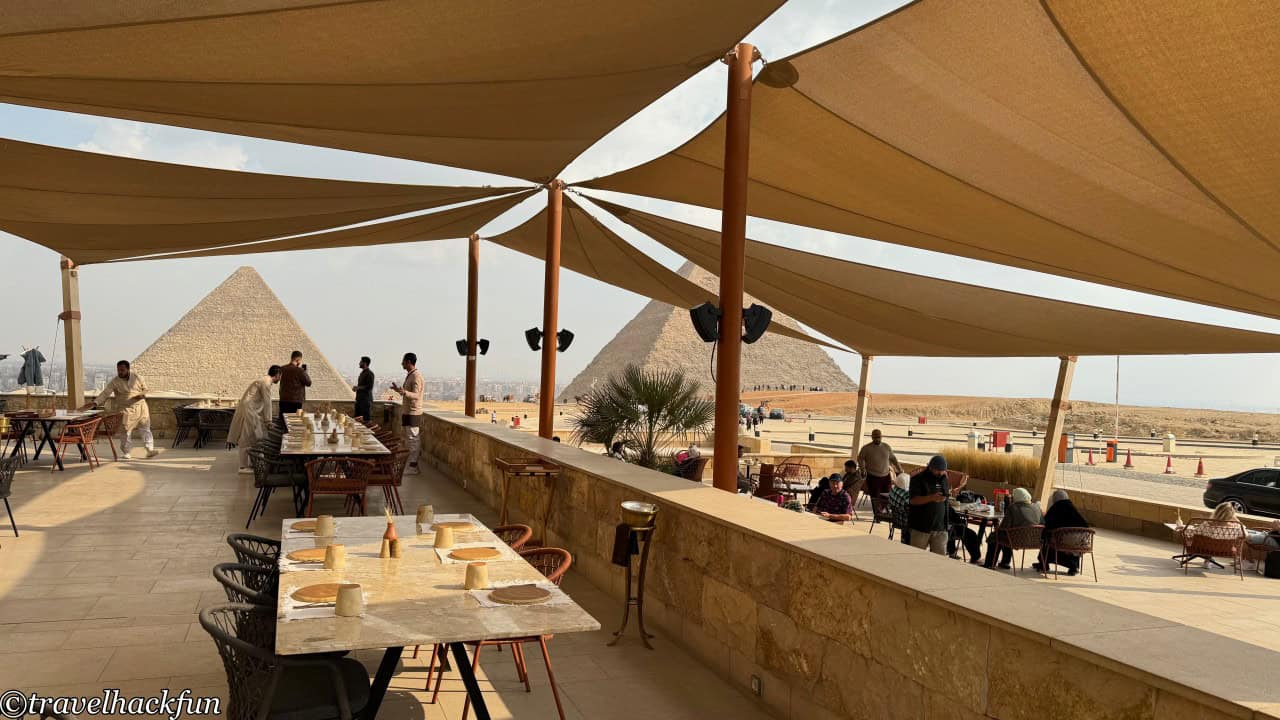

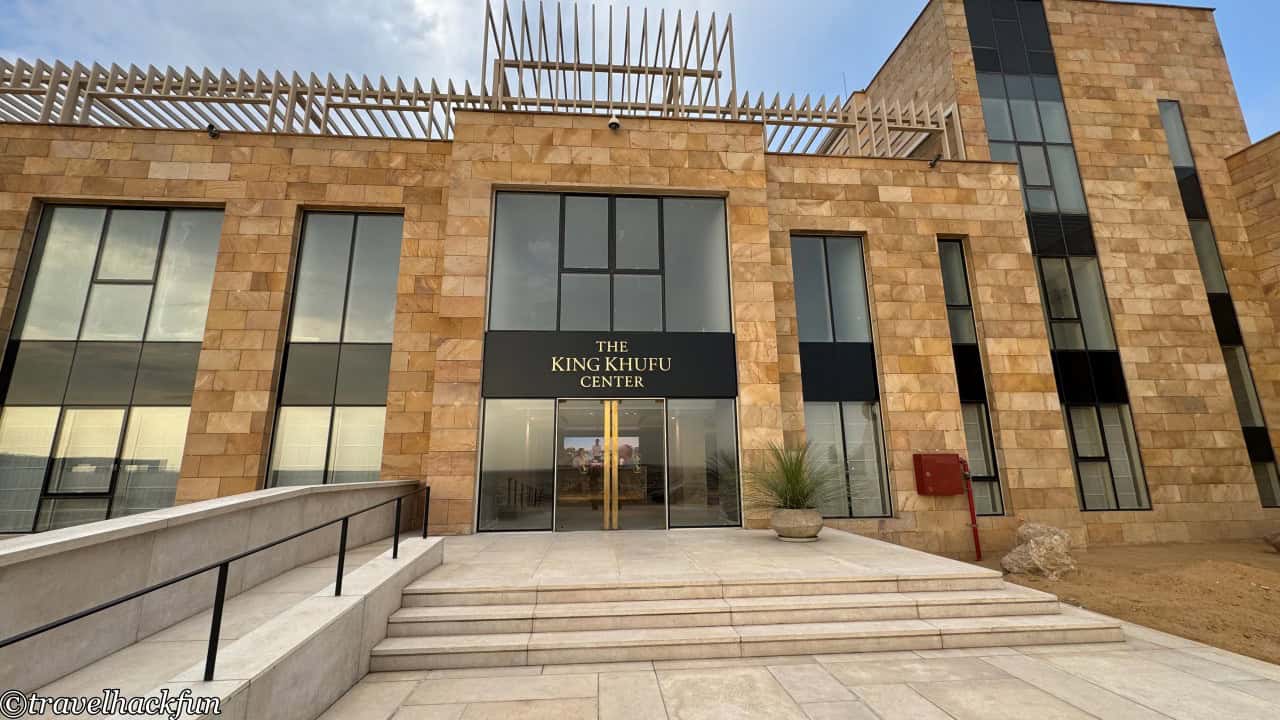
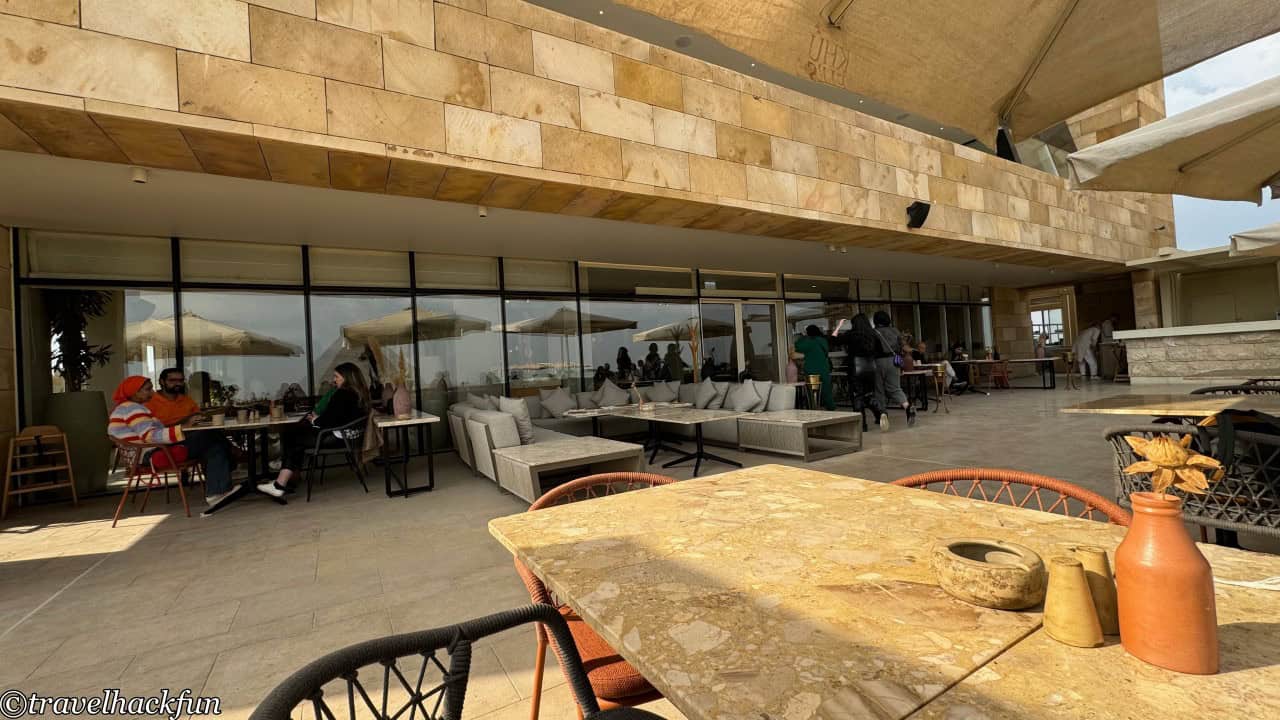
Our luck was too good, as it started raining heavily shortly after we sat down, a rare event in the desert. The outdoor seating at the restaurant in the desert was no match for the rain, so we moved inside. We ordered the Mix Grill set for two, which included seven appetizers: Koshari salad, Keshak Almaz, Tomato Salad, Chicken Livers, Babaghanough, Warra’enab, Cottage Cheese, and the main course, Mix Grill. All the dishes were Egyptian specialties.
Koshari is a traditional Egyptian dish that is usually very affordable. Here, it has transformed into a premium dish as a salad. Keshak Almaz is less common in other restaurants, consisting of rice, milk, chicken, and chicken broth. Tomato salad is actually a Middle Eastern classic, featuring fresh sliced or diced tomatoes, with the addition of onions, cilantro, lemon juice, and olive oil. Chicken liver, this dish cooked in a small pot with a variety of spices, offers a rich taste and aroma. Babaghanough is a popular Middle Eastern eggplant dip, primarily made of roasted eggplant mixed with olive oil, garlic, lemon juice, and Tahini (sesame paste). This dish has a smoky flavor and a delicate texture. Warra’enab is a dish made with grape leaves wrapping rice and spices, with beef added to the filling. Cottage Cheese is a soft, fresh cheese with a mild flavor and granular texture.
The main dish Mixed Grill includes a variety of grilled meats, such as shish tawook, tart, kofta, and lamb chops.
The dessert of the day was rice pudding. Initially, I thought its taste would be similar to sago dessert, but it actually resembled the texture of oatmeal porridge more.
The overall dining experience was quite good, with one star deducted mainly because of the constant ringing of alarm bells throughout our meal, which might have been due to the odd weather that day, thus slightly affecting the experience. However, considering the food and location, it is still worth trying.
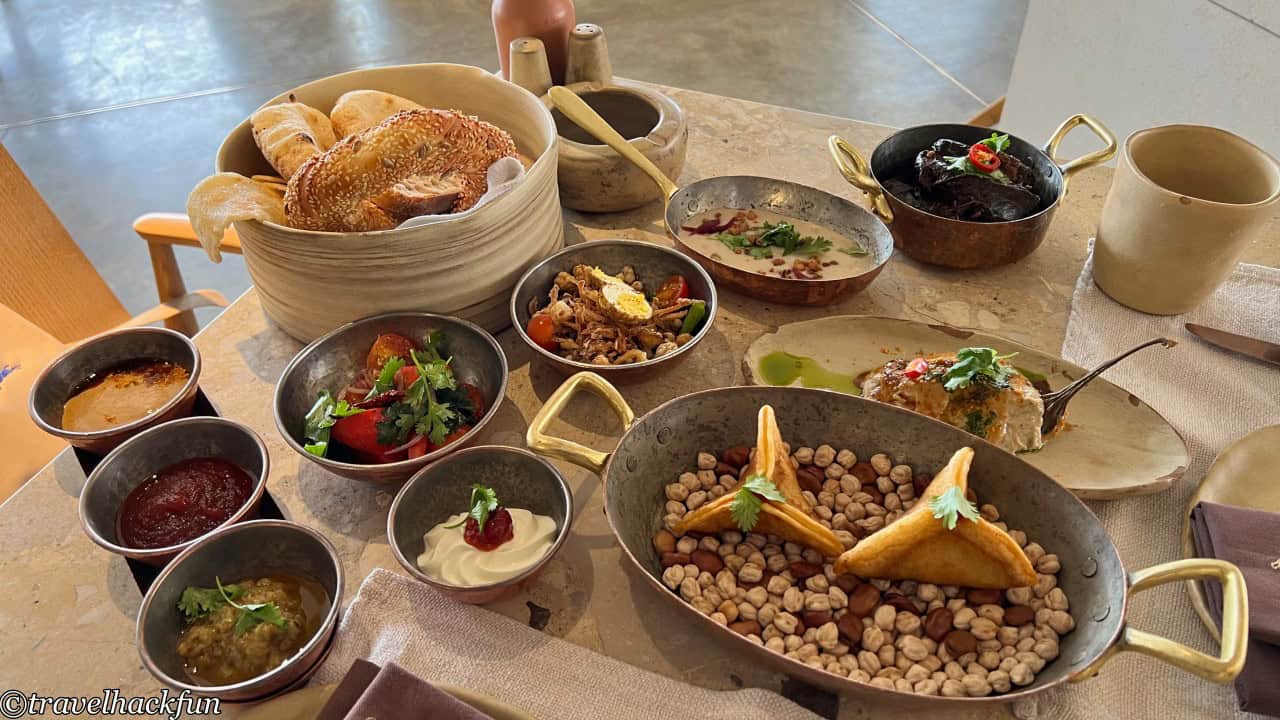

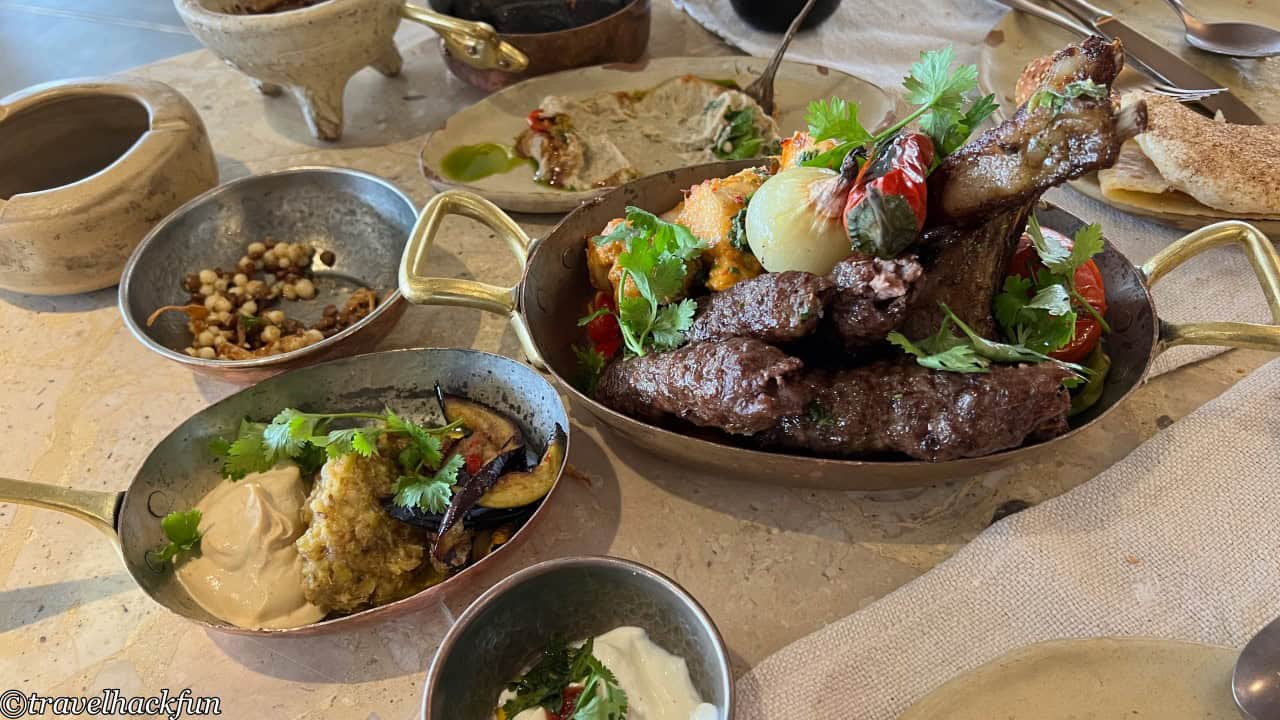
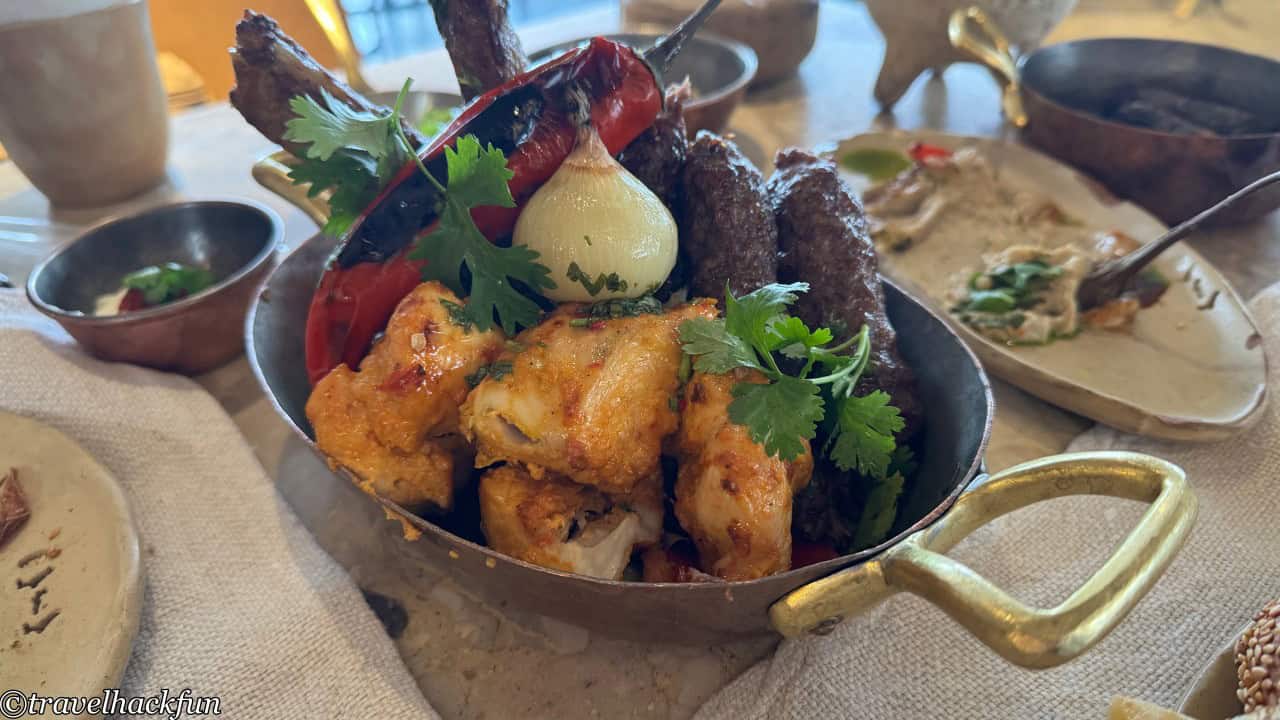
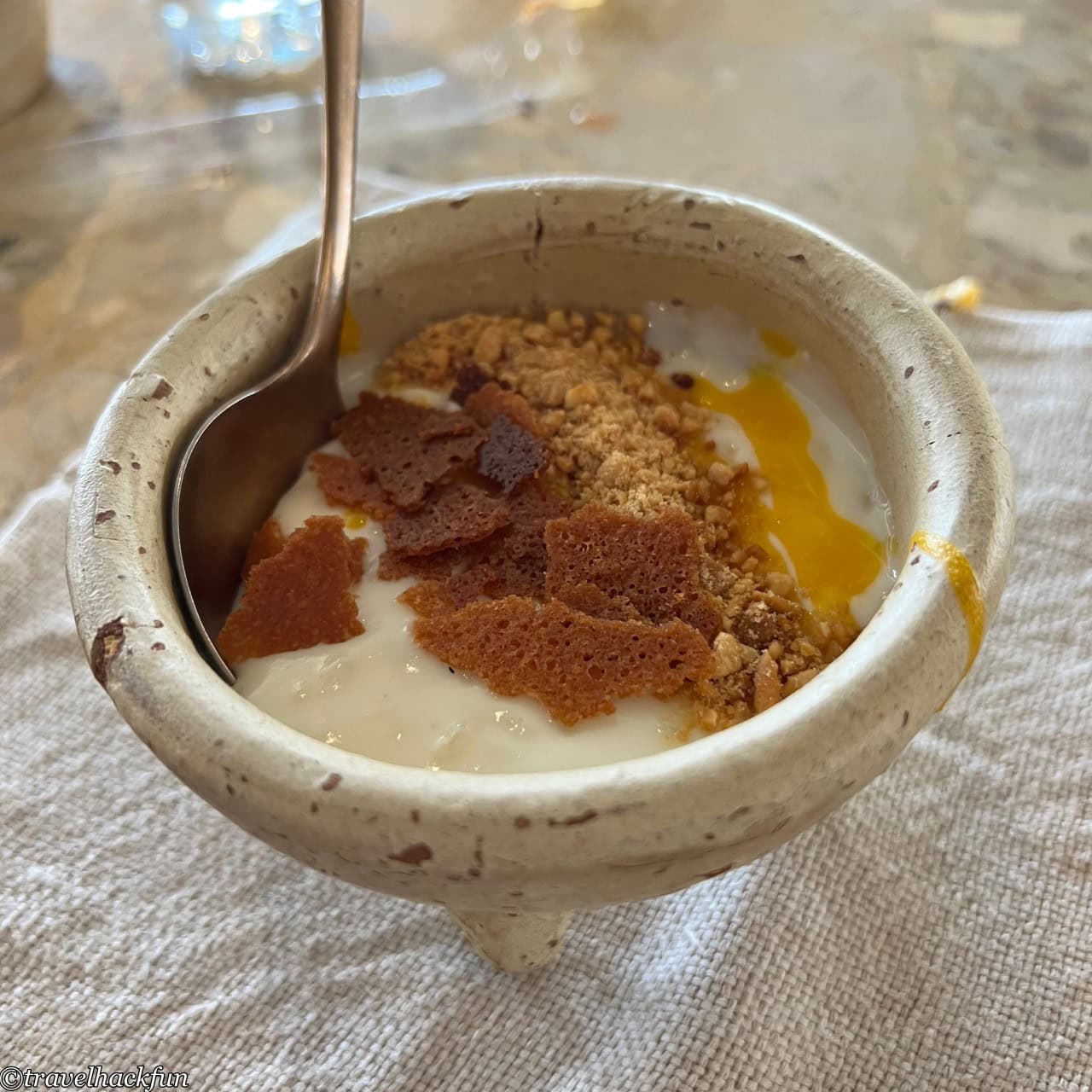

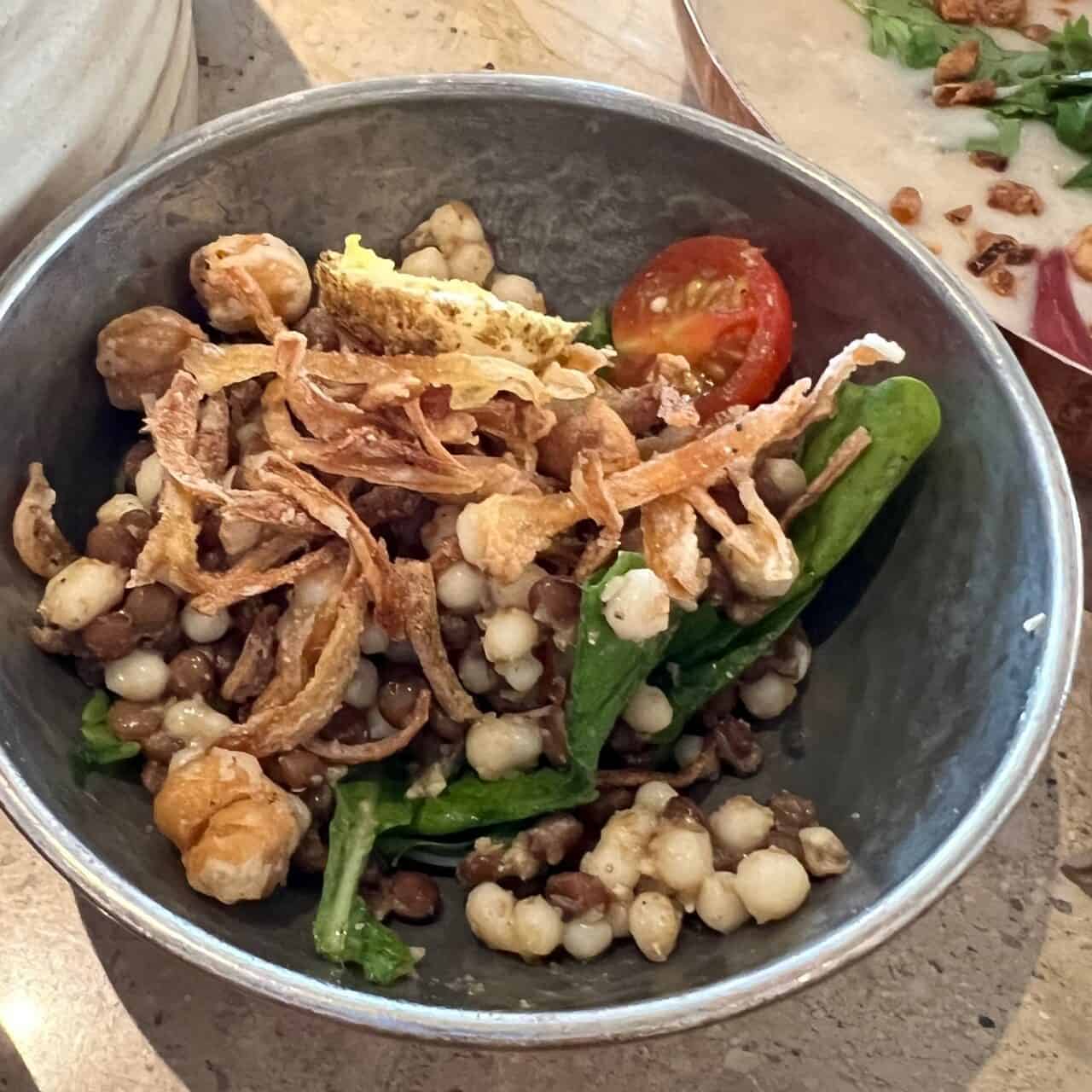
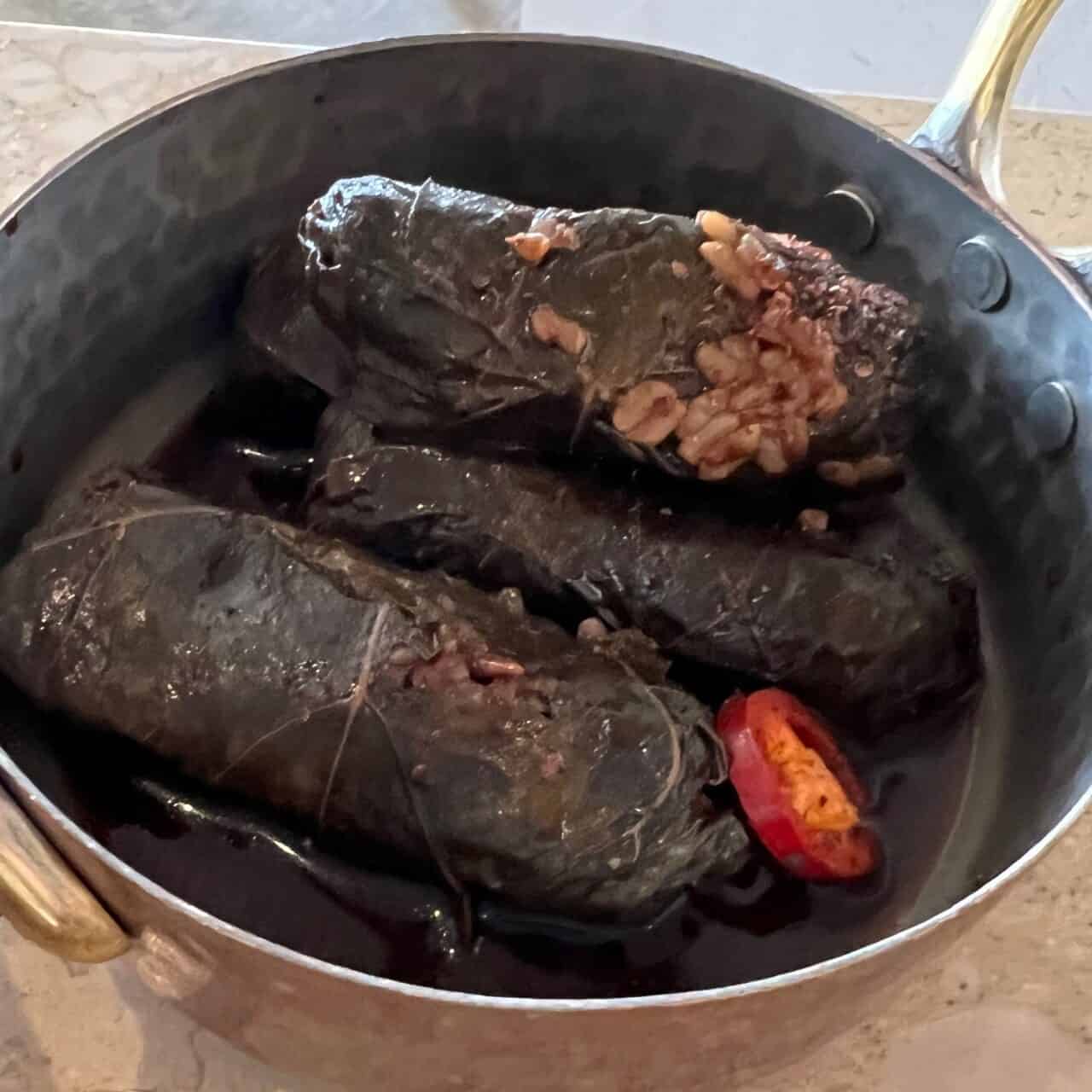
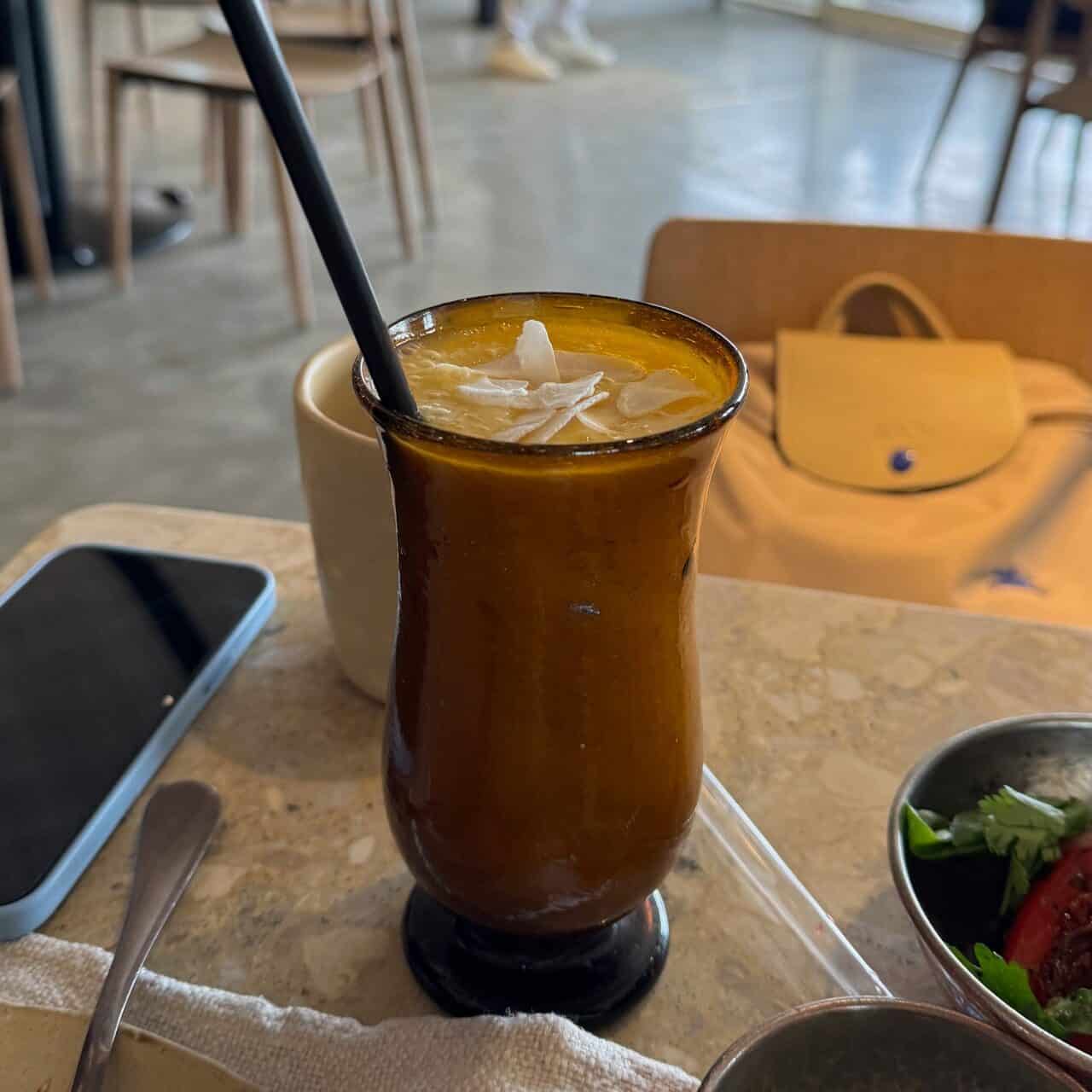
Restaurant Pyramid
- Recommendation: ⭐️⭐️⭐️⭐️
- Price: $$
The restaurant is located just outside the side entrance, and it's also quite close to the hotel we stayed at, only a three-minute walk away. We actually had low expectations when we came, considering it's a restaurant next to a very popular attraction, prepared to pay a hefty price. However, in the end, we found that, although it wasn't cheap, the price was still reasonable, and the food was quite delicious.
At the beginning, they served complimentary Pita bread. We ordered Pigeon Stuffed with Rice, Mixed Grill, and Bird Tongue Soup. Pigeon Stuffed with Rice is a traditional Egyptian dish that is a must-try. The dish is prepared by deboning the pigeon, then stuffing it with rice and spices before baking. The pigeon's skin is crispy while the meat inside remains tender, with the rice absorbing the essence of the pigeon meat and the rich flavors of the spices. The Mixed Grill includes beef, chicken, and pork. The beef and chicken from this place were quite good. The Bird Tongue Soup unexpectedly became our favorite. Despite its name, Bird Tongue Soup isn't actually made from bird tongues but uses pasta that resembles bird tongues, cooked with chicken broth, vegetables, and spices, offering a fresh and layered taste.
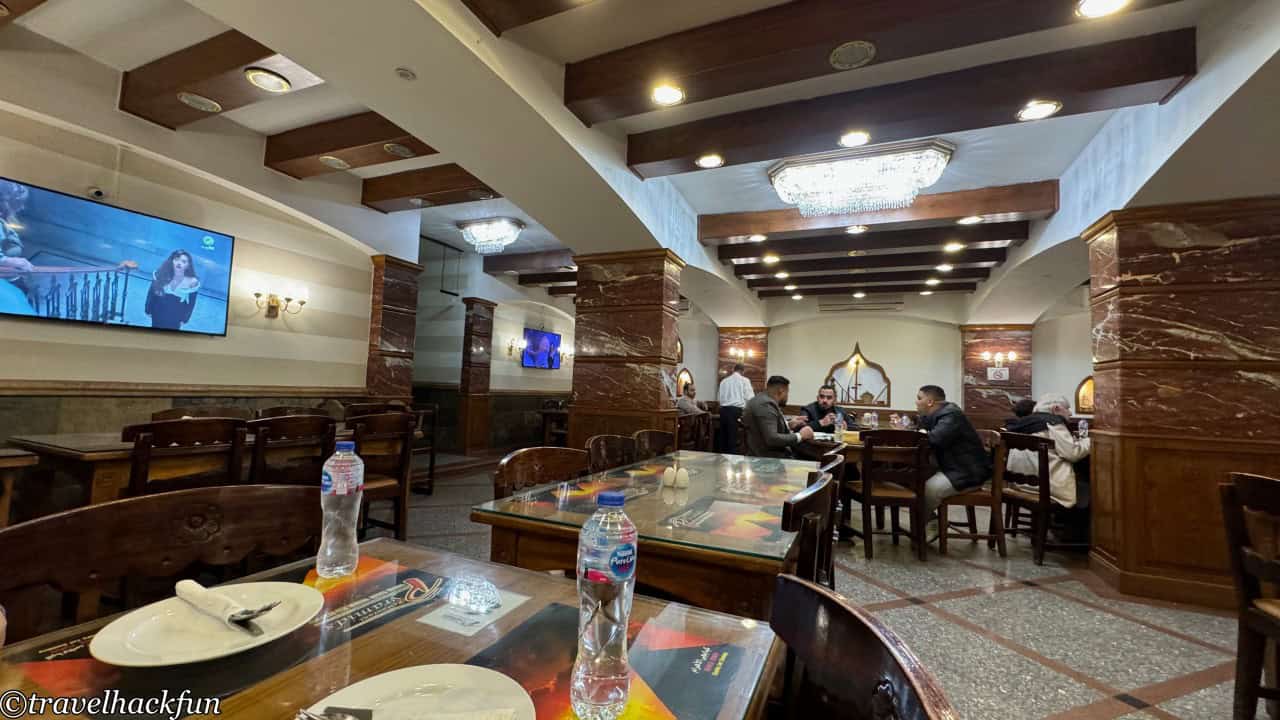

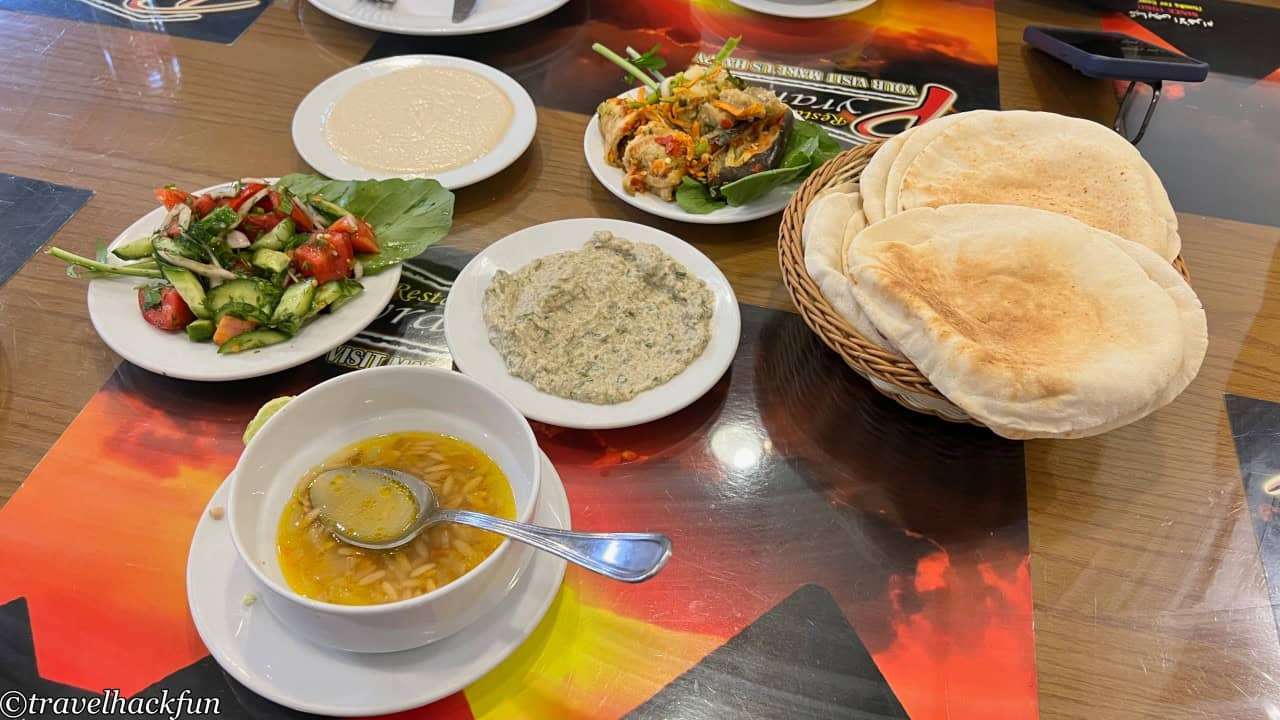
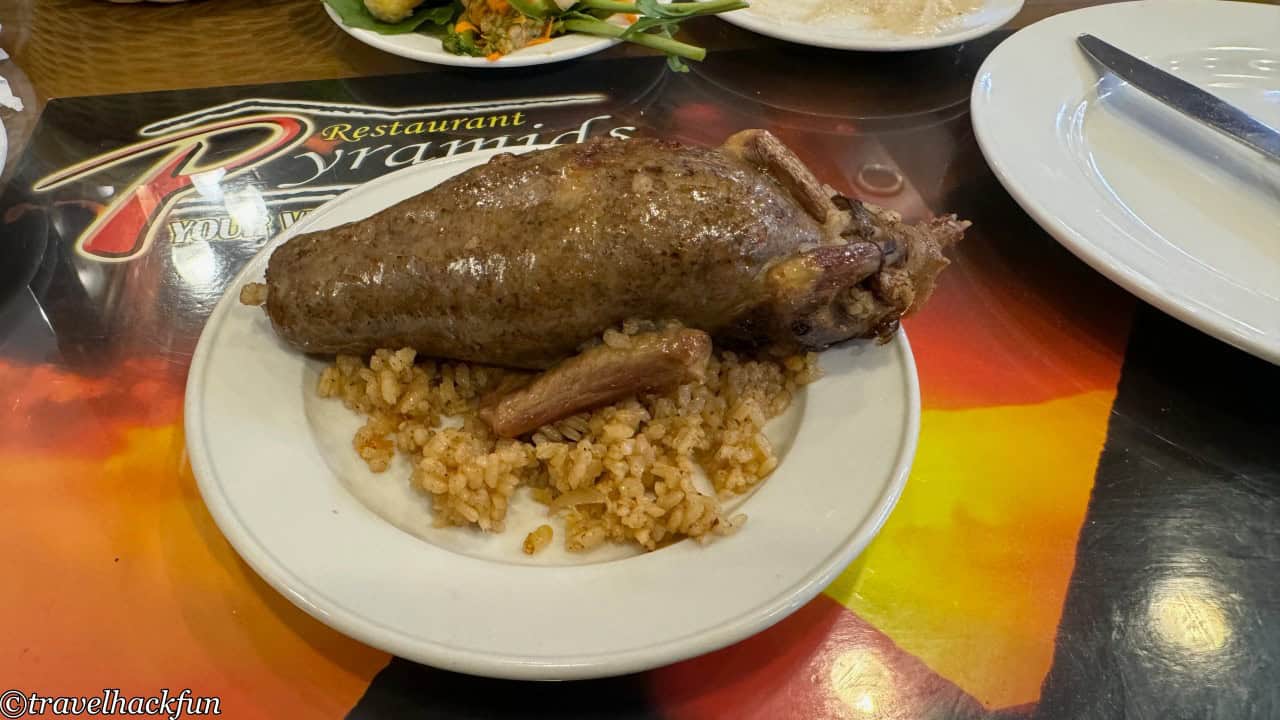

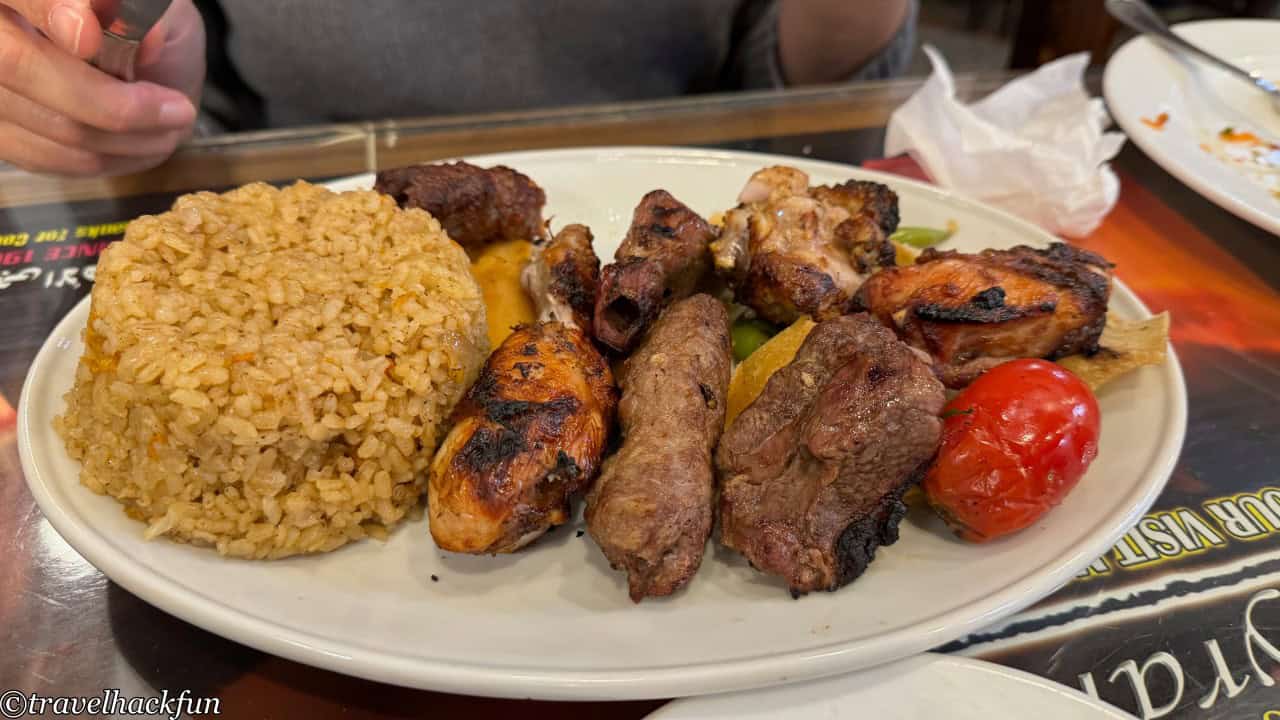
Thank you for visiting our website.
All the content on this site is original and shared with the purpose of providing valuable information. We sustain the operation of this site through a small amount of advertising and sponsored links. If you click on links to third-party merchants on our site and make purchases, we may receive a portion of the sales as a commission. If you click on links to third-party merchants on our site and make purchases, we may receive a portion of the sales as a commission.
Find more posts on a map Here.
My recommended resources for hotel bookings.
Recommended travel credit card for US-based travelers
Travel with just a backpack!
Buy me a coffee and support my contents!
If you are interested in quoting this article or using any part of its content and images on your website or publication, please contact us via email to request permission.